This is the second leg of this trip to Singapore:
CDG - DOH : QR38 (A330-300)
DOH - SIN : QR944 (A350-900) You are here
The previous FR ended after the transit security check. A 1h20’ layover should be no problem when the first flight is on time and the security check faster than expected, but the new Doha airport is gigantic. I had the impression that it was even larger than FRA.
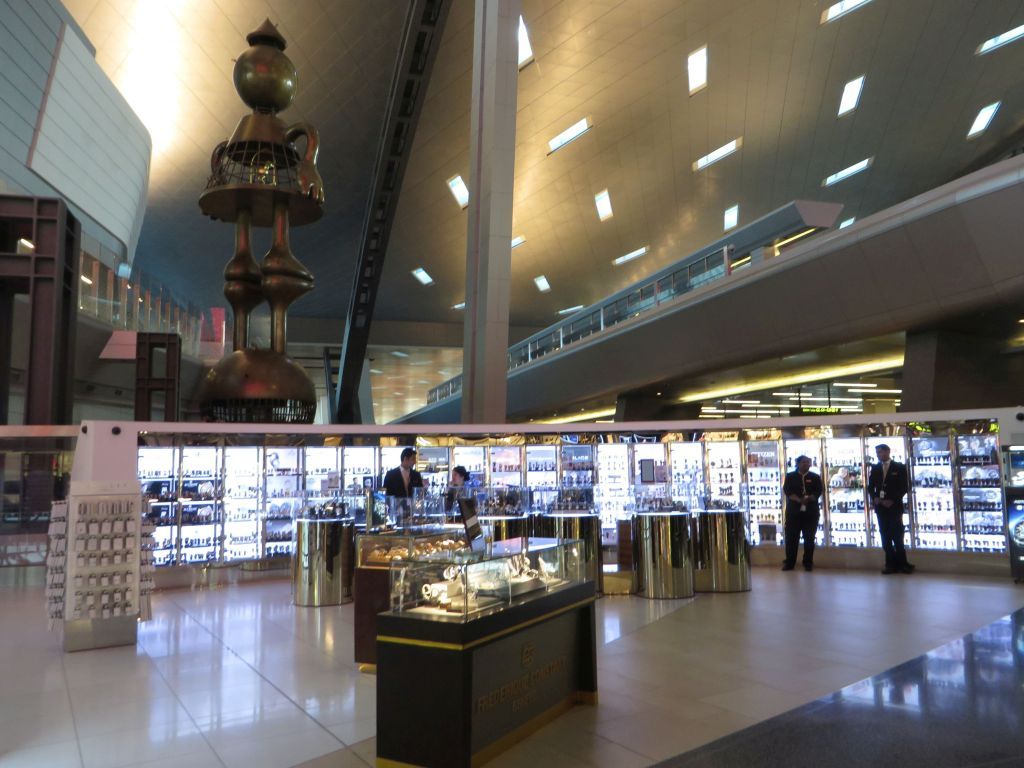
What made it seem larger was that the people mover is not in operation yet (I saw it, but there was no indication that it was still under test, and I had the impression that I had missed its station), and that there was no time or distance information. The result was that 13 minutes to reach Gate E22 felt longer than the 20 minutes spent to reach my next flight gate in FRA the last time I connected there.
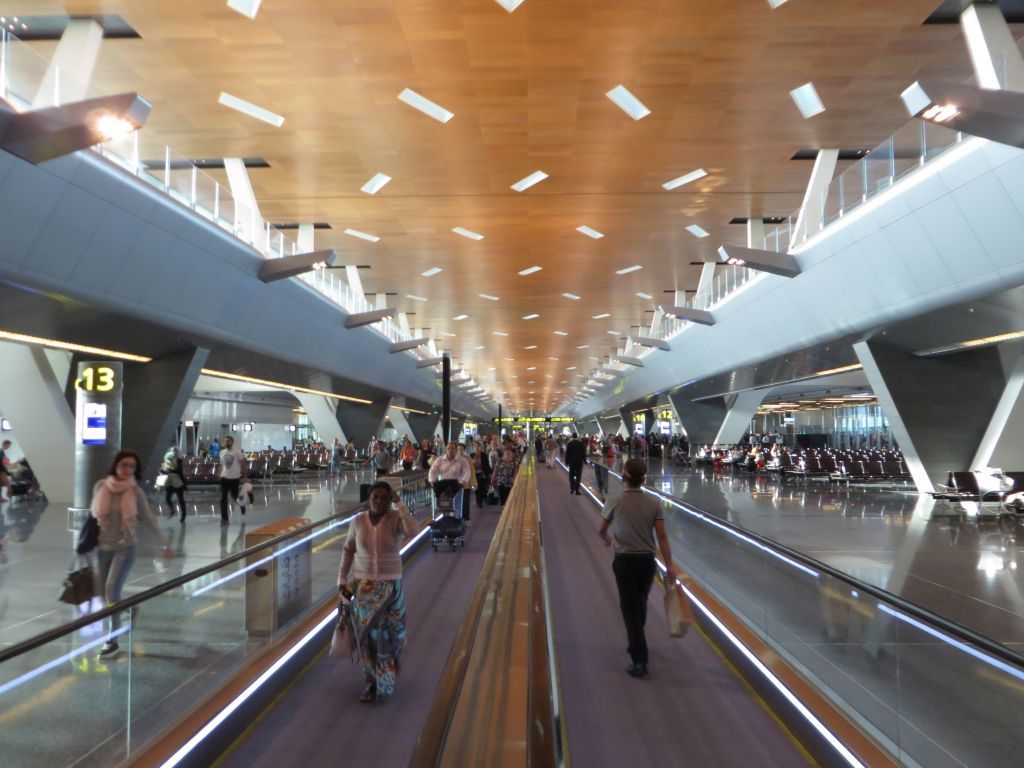
Gate E22 was downstairs, which meant a bus transfer, and we reached it when boarding was already announced.

The bus arrived there at the edge of the building
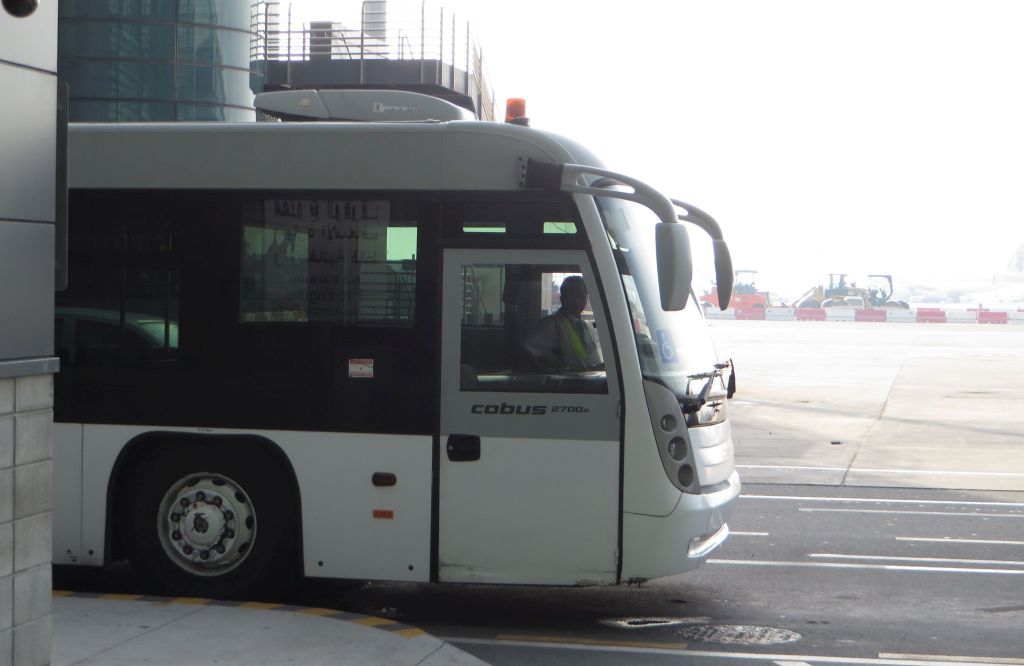
Surprise : it was a small bus, and the first batch of passengers did not fill it. We wondered if we had not slipped into the priority boarding, but this did not appear to be the case.
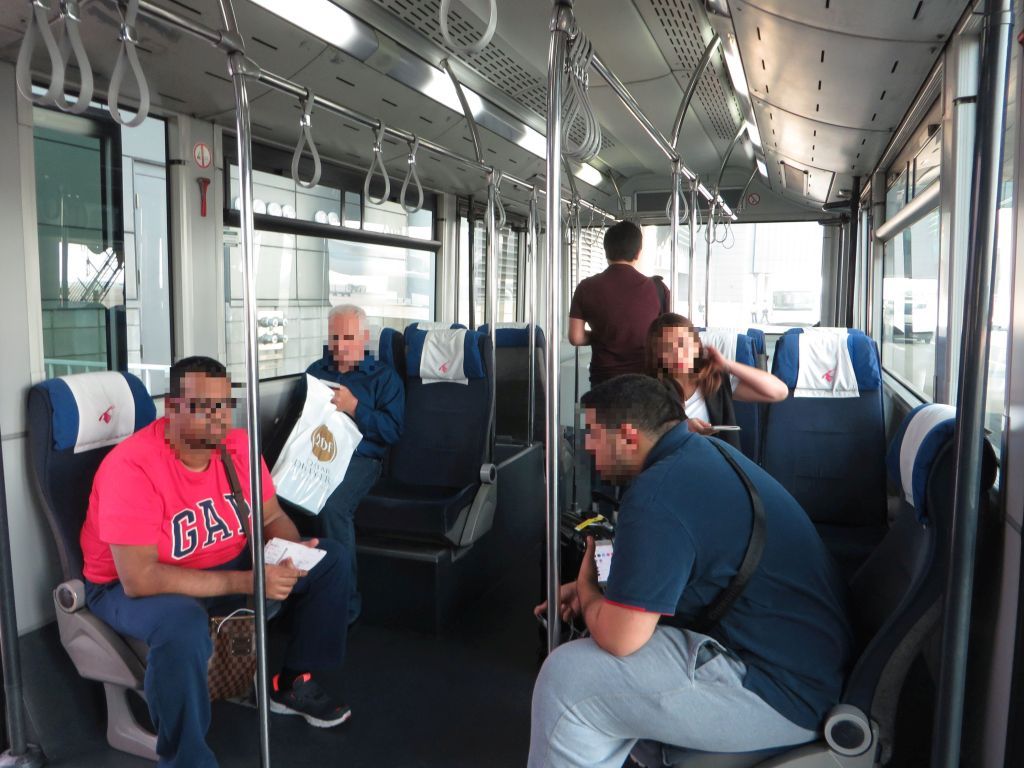
I did not have any additional plane spotting opportunity during this bus transfer; only out of the bus did I have a chance to improve my picture of this Al Maha A320 seen while taxiing in after landing from CDG. (Al Maha is a Saudi subsidiary of QR)
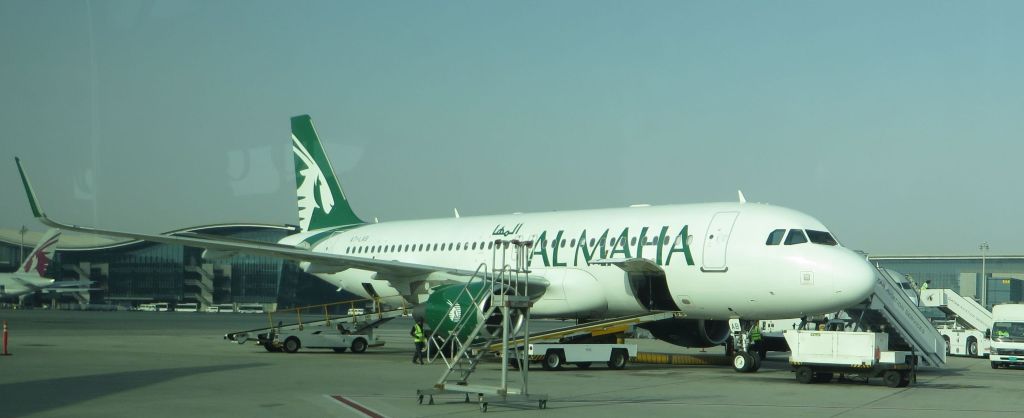
The same from my window

The stairs were completely blind, which precluded taking the traditional fuselage shot from the top of the stairs.
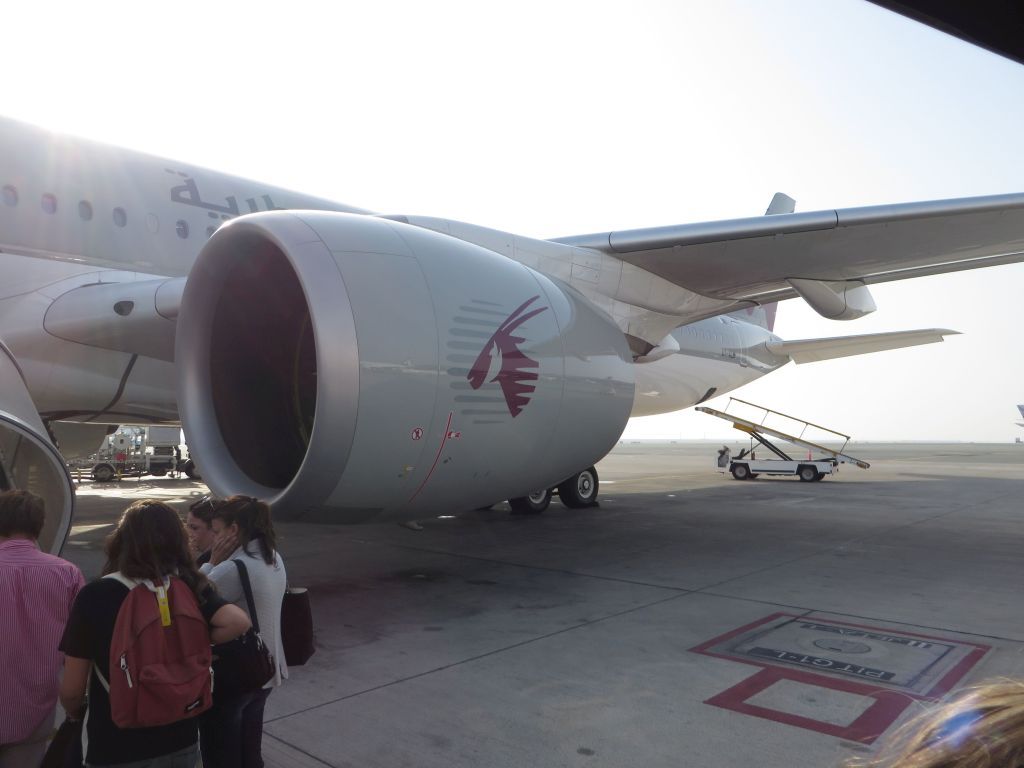
The enormous 3 m diameter Trent XWB
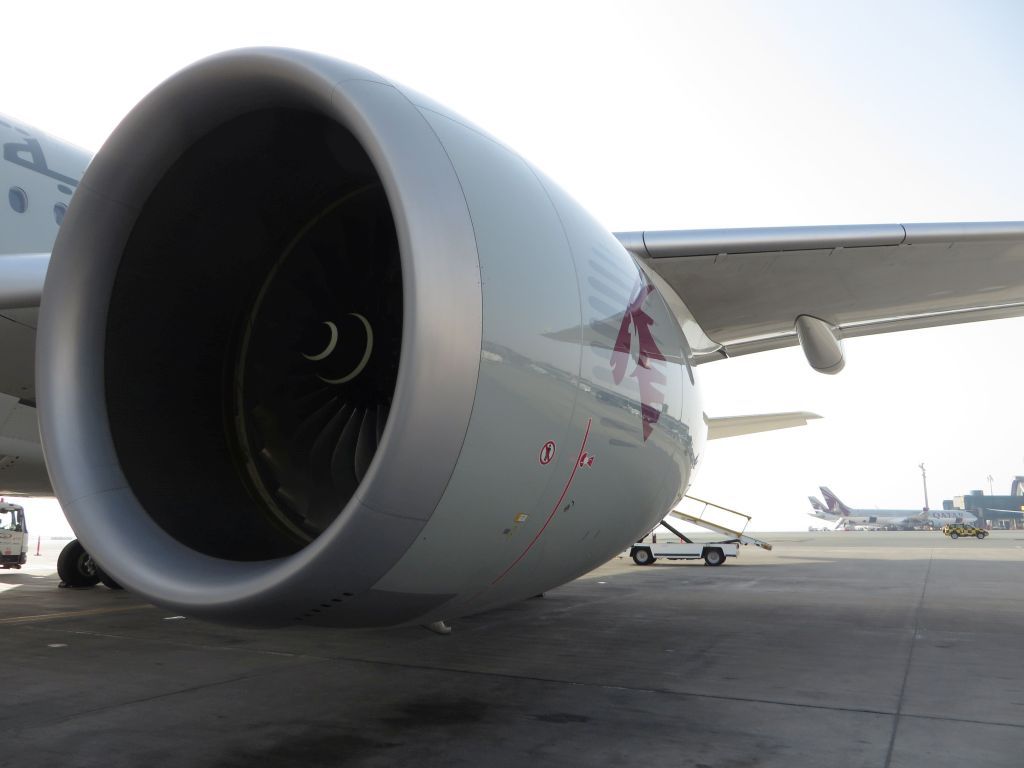
Boarding was through the second door, in the middle of the J cabin ; I’ll show it later in the report.
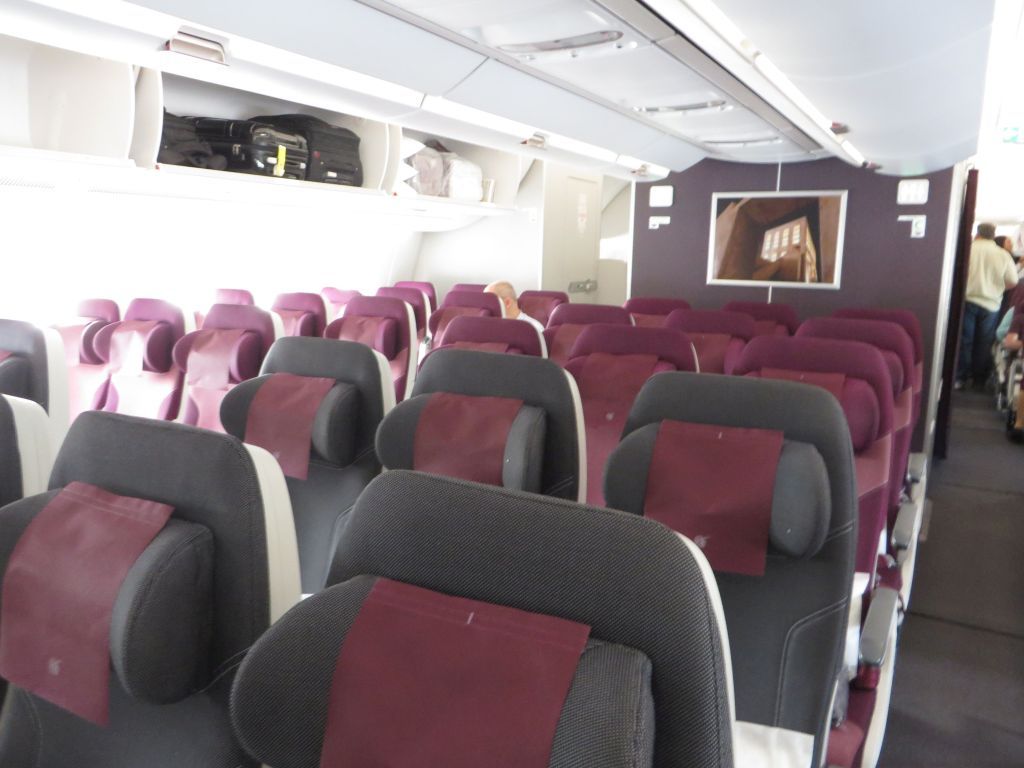
The same, seen from the rear
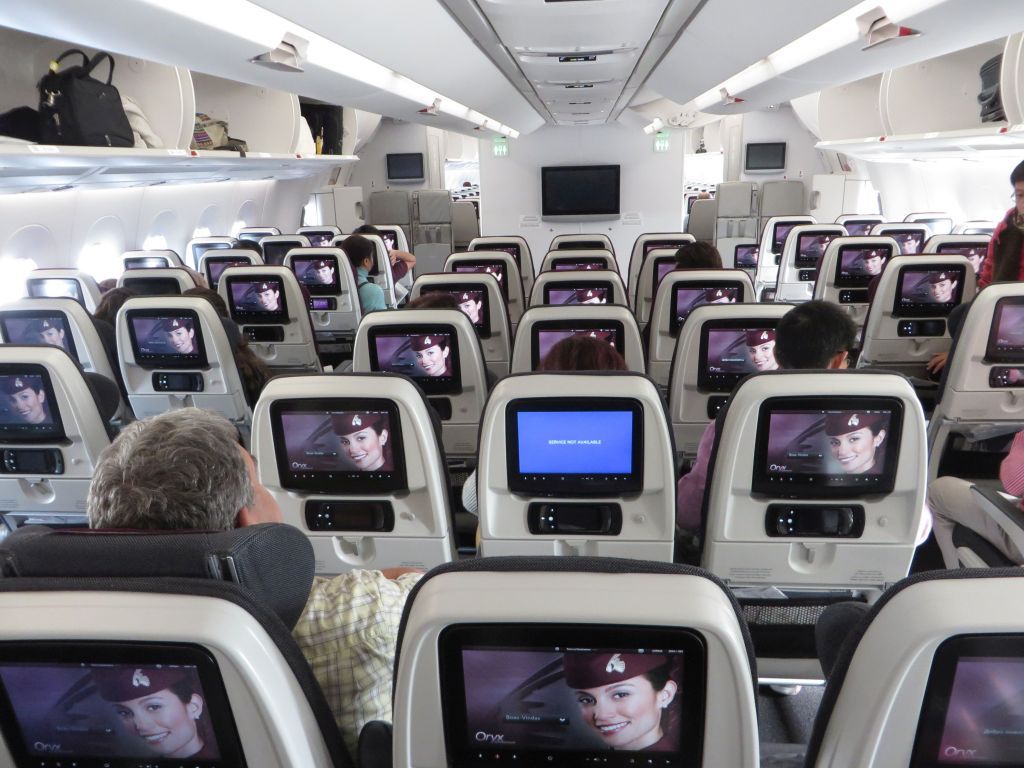
What struck me immediately was the size of the overhead luggage bins. This standard sized hand luggage could only lie flat lengthwise in the bins of the A330; in the A350, they are deeper and much higher, which translates into a vast increase in overall capacity.
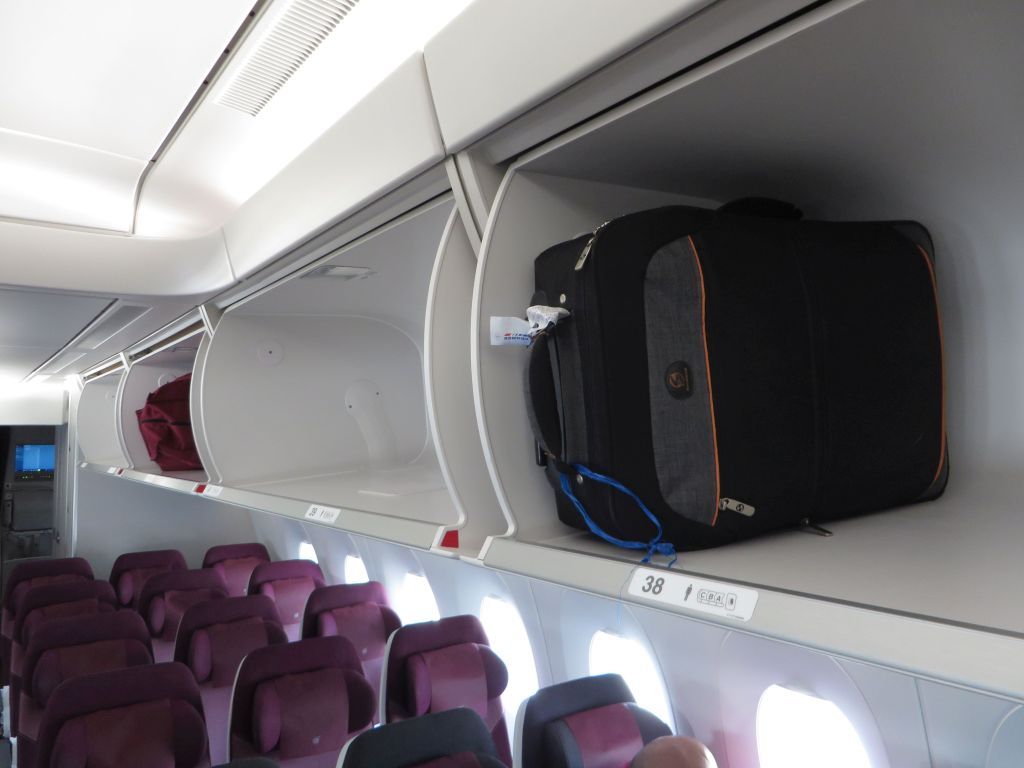
These headrests made our inflatable headrests useless.

The carpeting was spotless, which was not surprising after less than one year of operation.
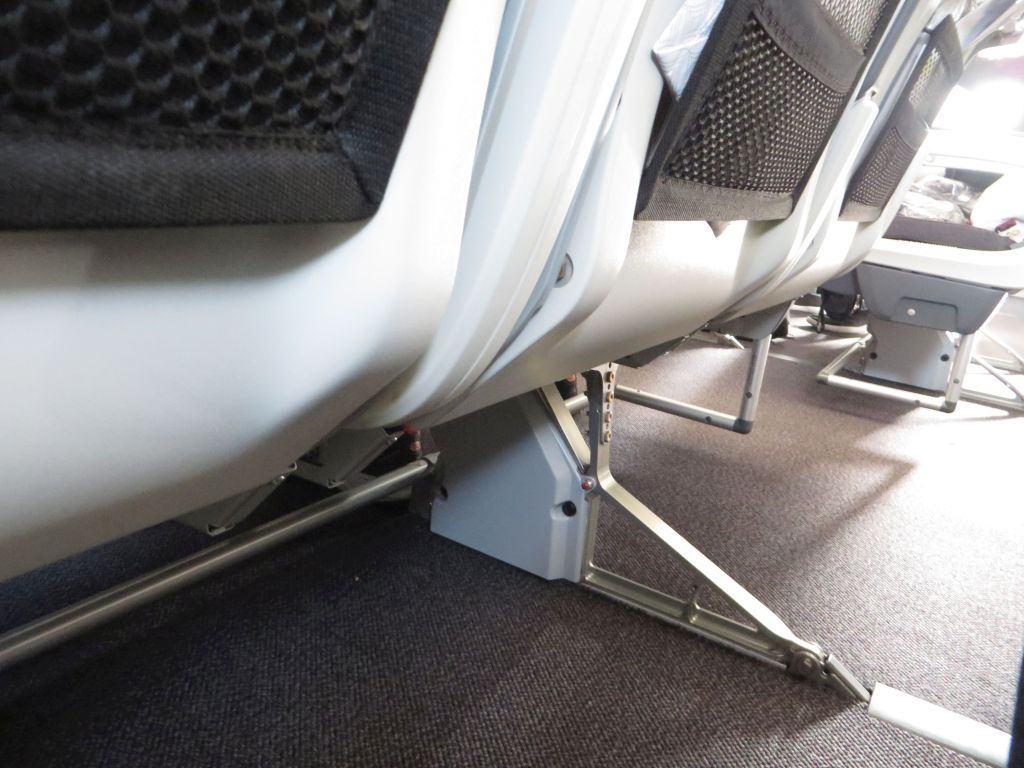
2 cm more than the A330 of the previous flight…
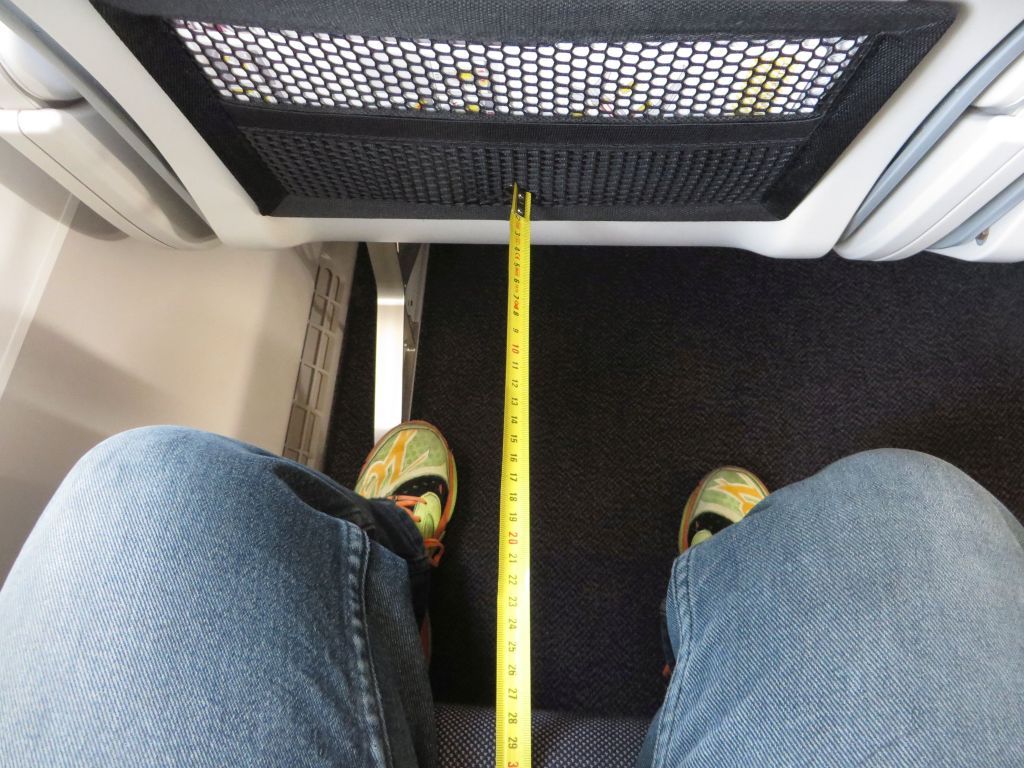
… and first and foremost 2 cm more in width, which made a significant difference in comfort

The very wide black frame made the IFE screen look much larger than it really was,
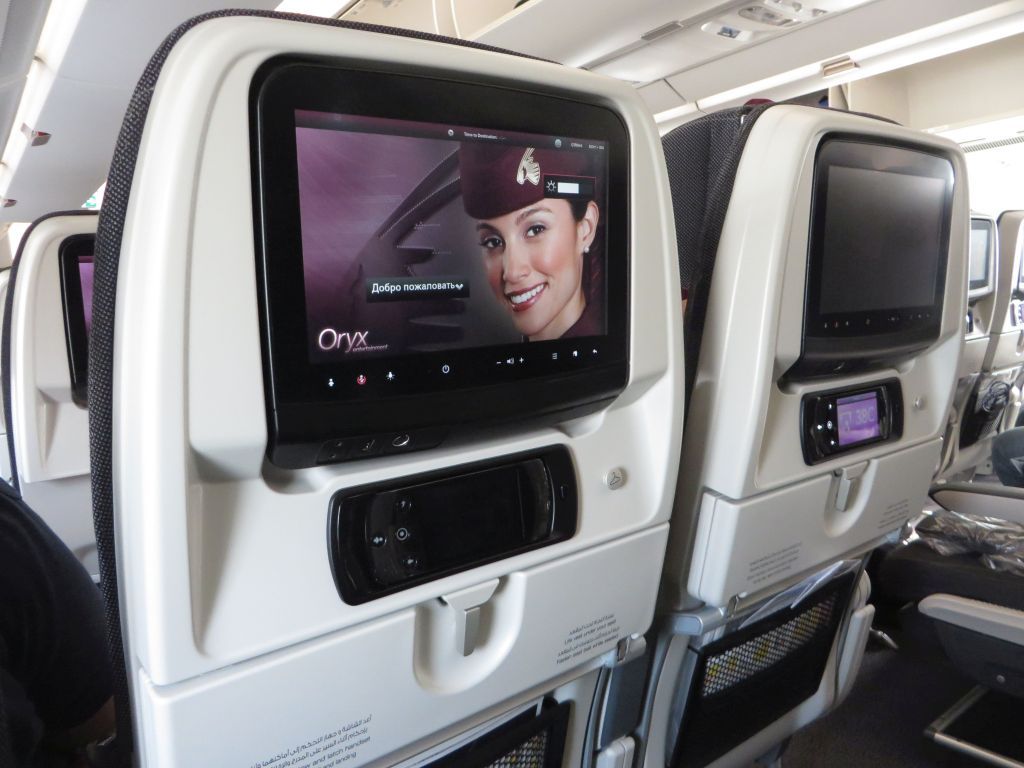
…but the diagonal of the image was nevertheless a commendable 10,5".
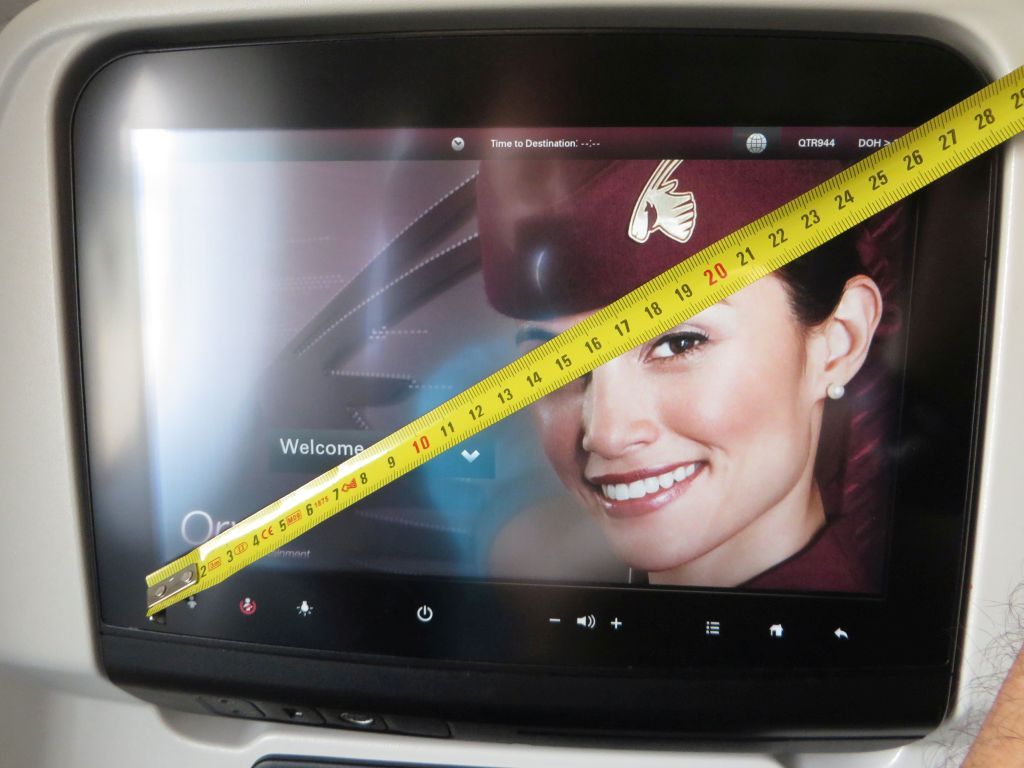
Below the screen on the left : a headphones plug, a USB port and I do not know what the third one was (Any suggestion from my readers ?). There was no AC power port.
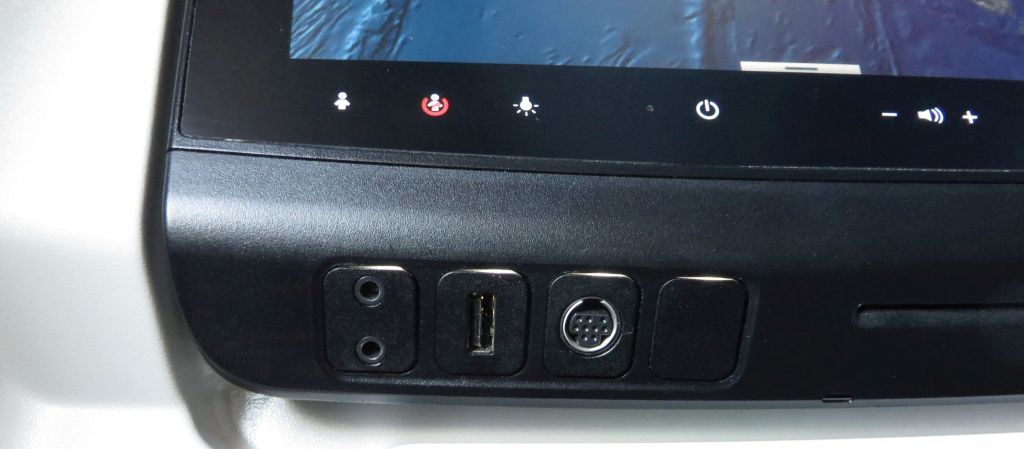
The safety card both sides
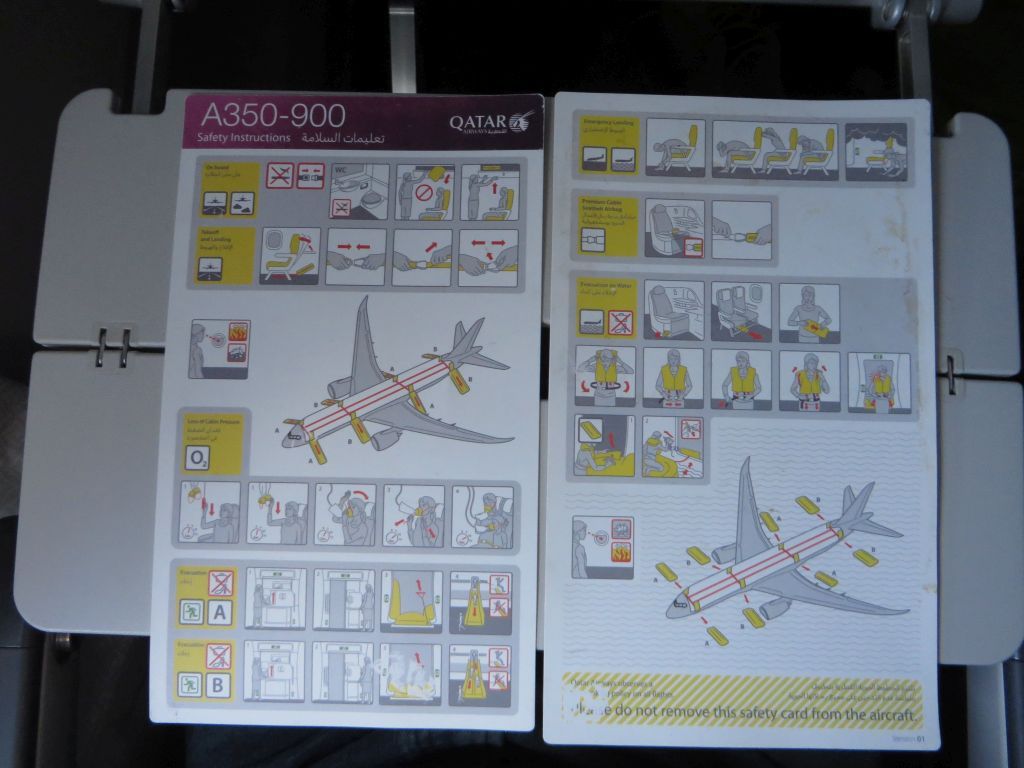
The ceiling pictograms belong to the smartphone and laptop generation.
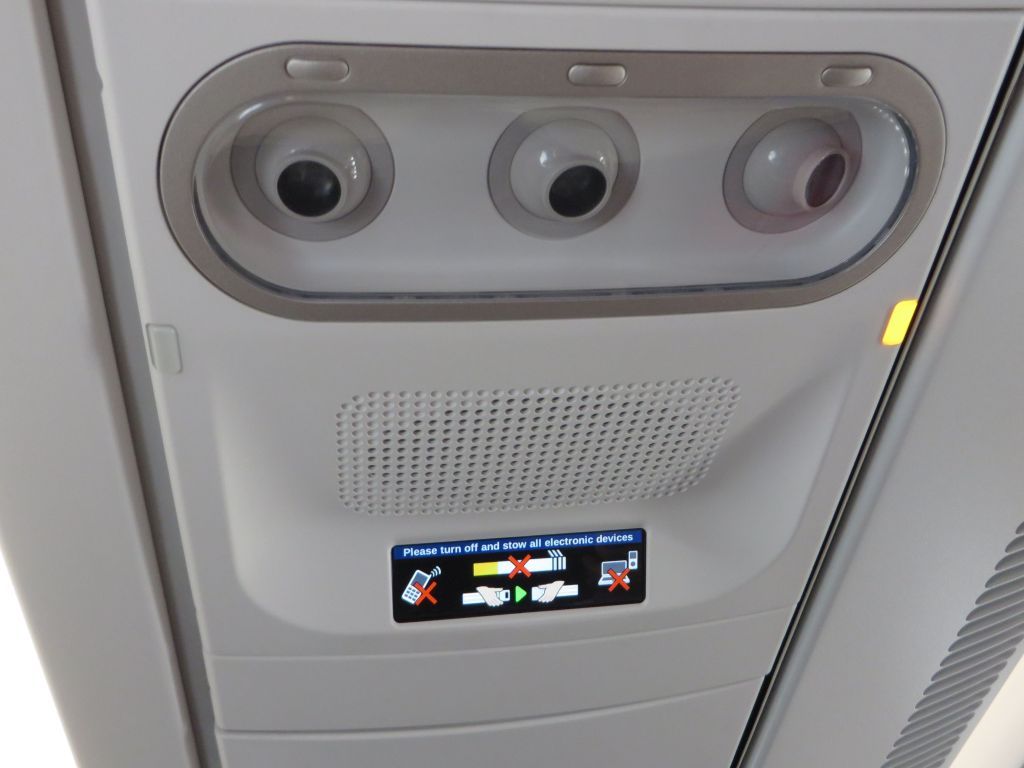
The toilets were accessible during boarding. They were of course spot-clean, in a new aircraft before a flight from her hub.
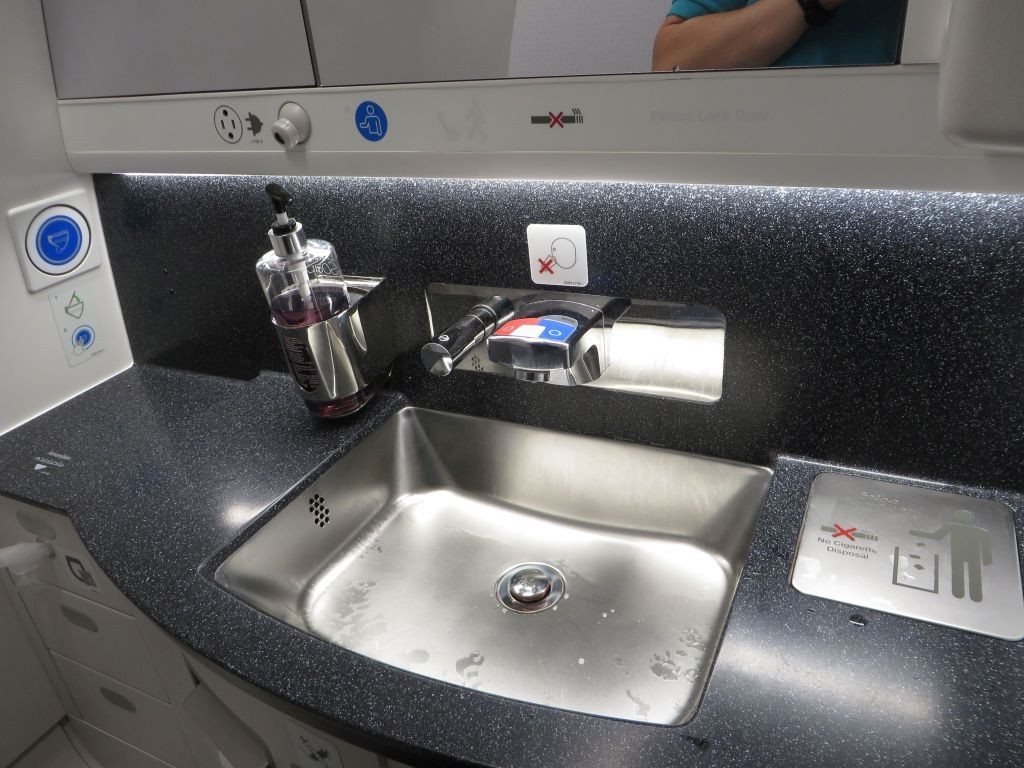
I had never seen such a used syringe container before (but signs in AF’s aircraft toilets inform that you can ask the crew for a hand container to safely dispose of your syringe). This tells something about the diabetes epidemic worldwide.
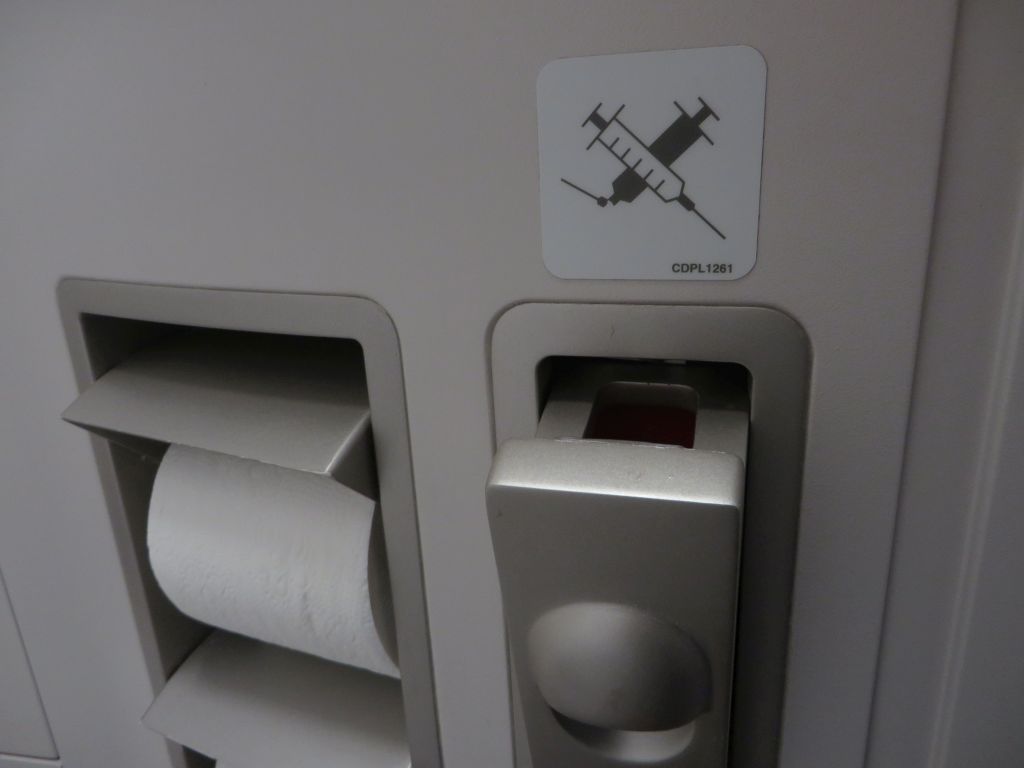
The second bus had not arrived yet, and the Y cabin was nearly empty
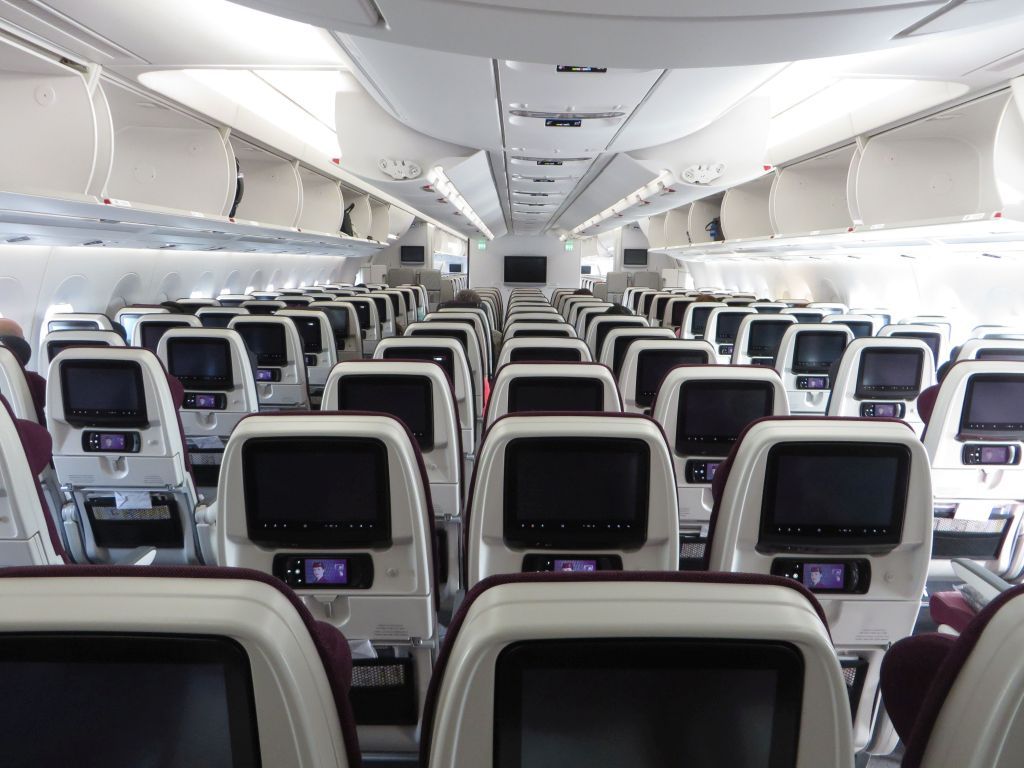
Why not go and have a peek at the J cabin while the aircraft was still empty ?
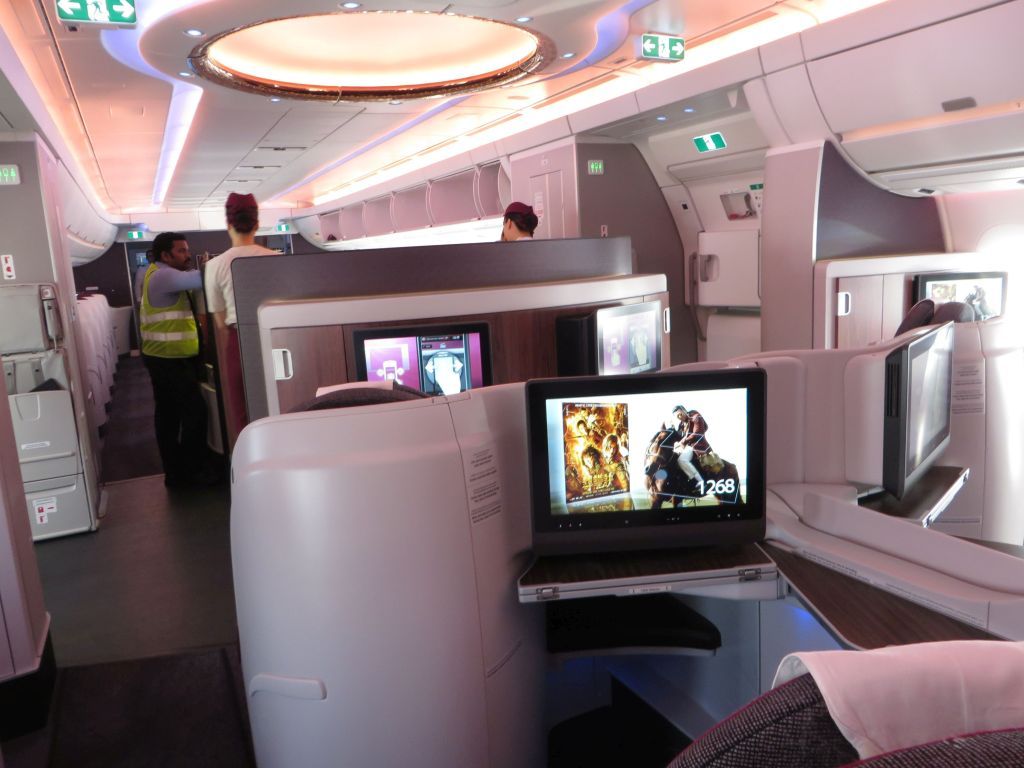
The Ja cabin was separated in two sections by the second pair of doors, where the space is devoted to a bar. The round overhead light is the only moderately extravagant decoration in that aircraft.

The FAs were as far removed from the “robotic” behavior of QR FAs described by some Flight Reporters. They welcomed me warmly, invited me to visit the front of the aircraft at will, proposed to take a picture of me at the bar, and expressed the hope that this short experience may convince me to fly business another time.
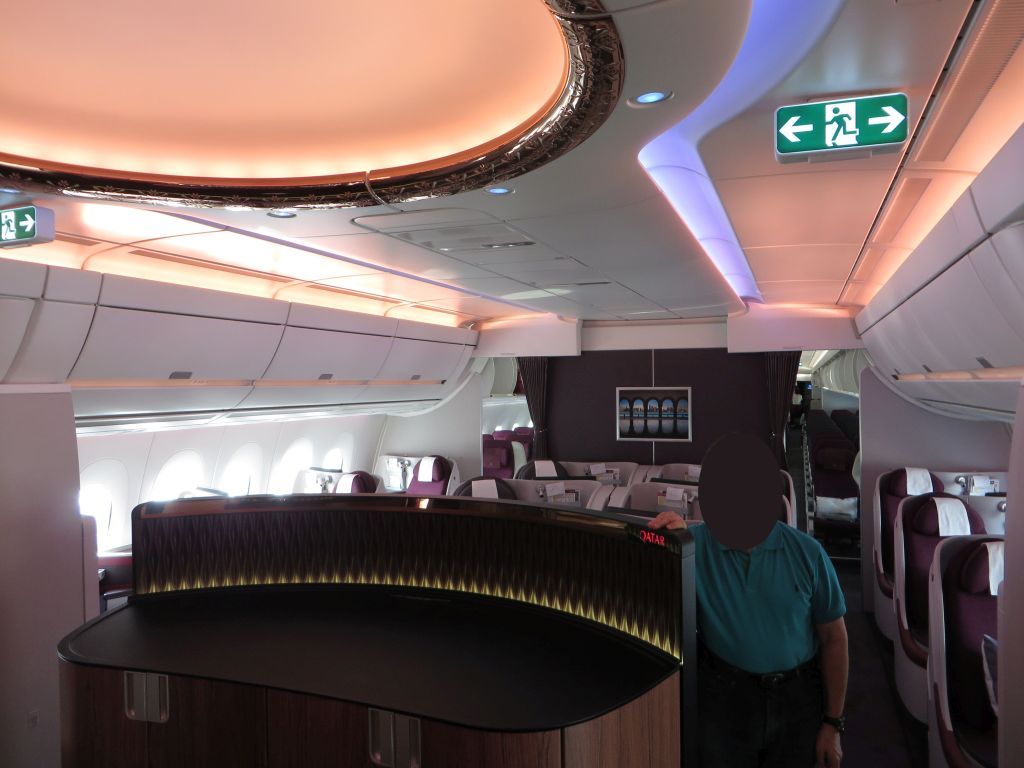
I could not reasonably test the comfort of the seats or check the lie / full flat, but this was what to expect if you chose seats in the center

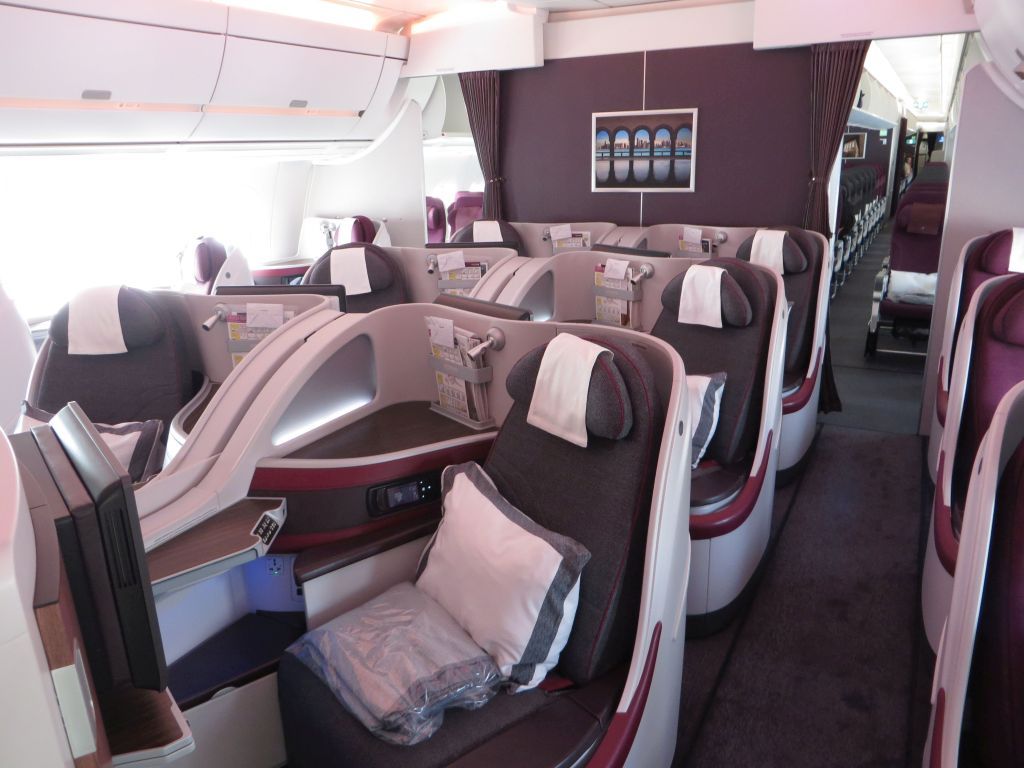
Or window seats
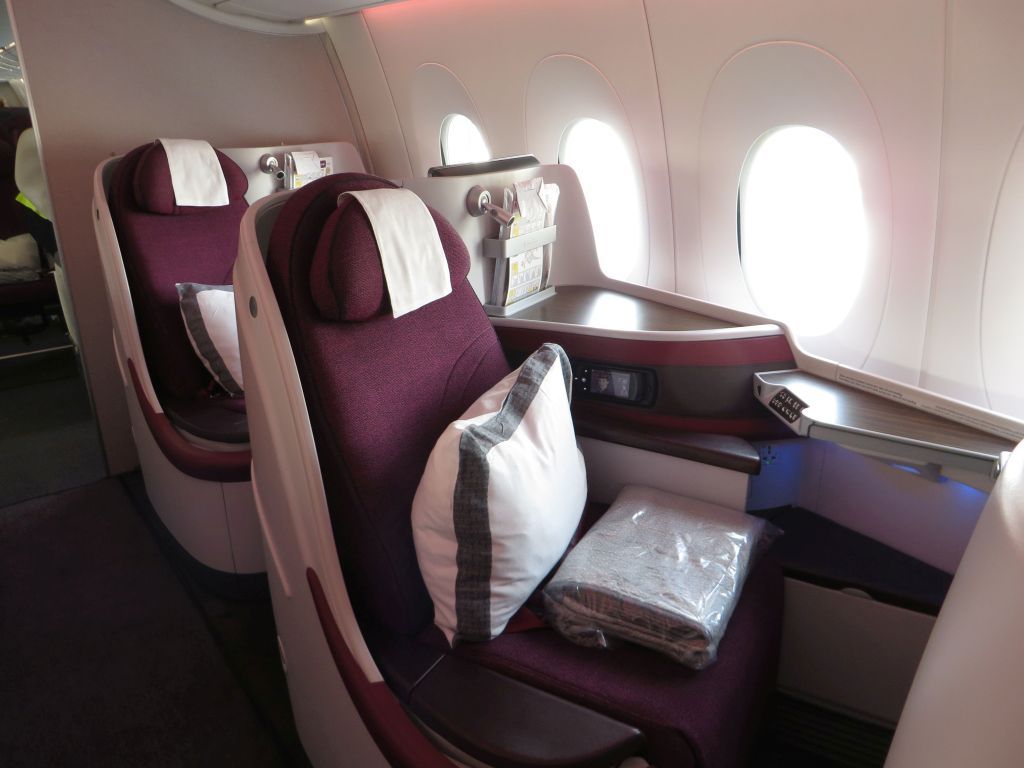
General view of the first J cabin
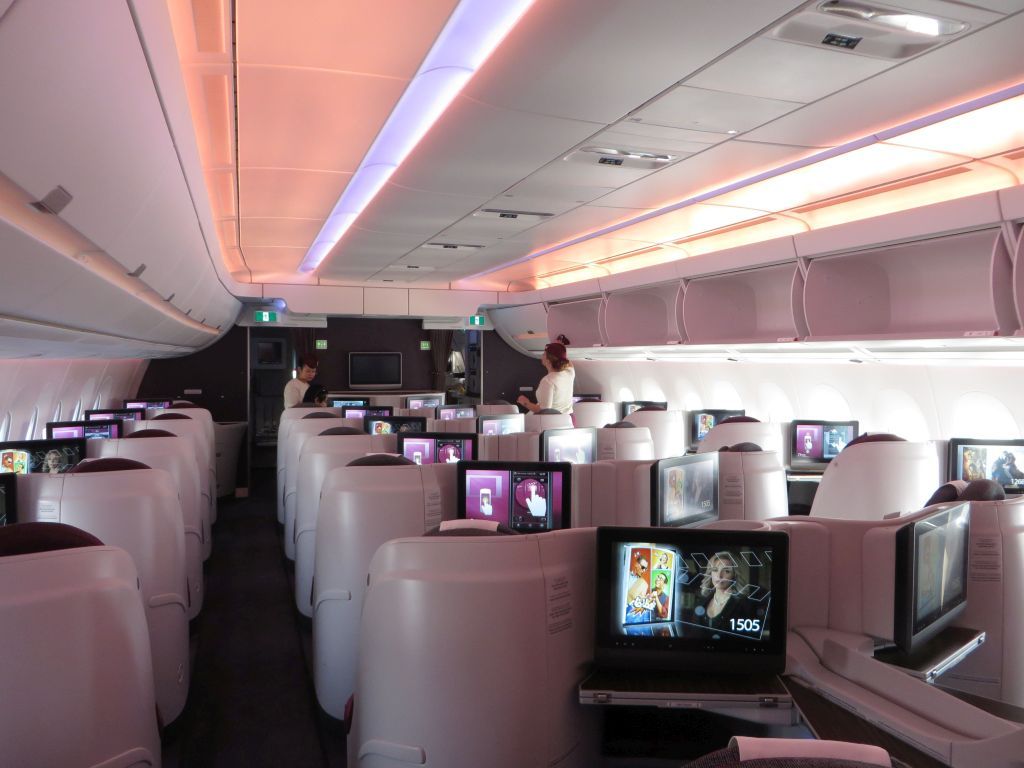
After leaving them, it was time to return to my class of travel which was the furthest away from steerage I could think of. A FA told me there was a total of 77 passengers in this 283 seat aircraft, which meant a 27% load ratio !
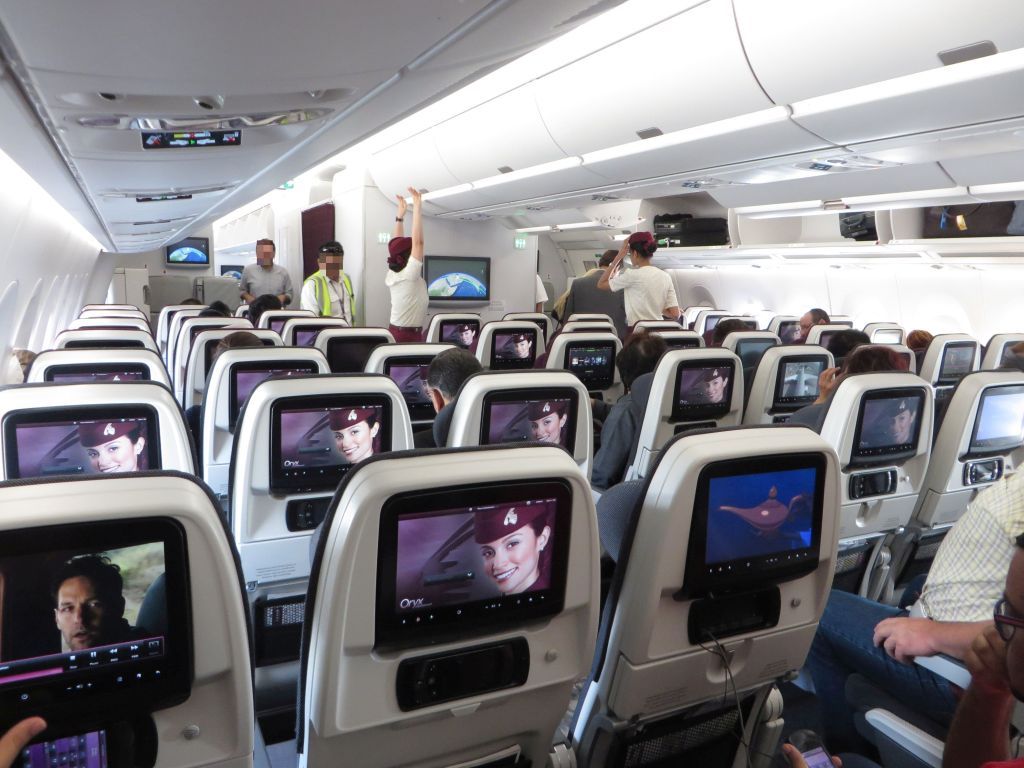
The tarmac staffs wear highly protective clothing : the sun was tolerable in the early morning but could be murderous in the middle of the day
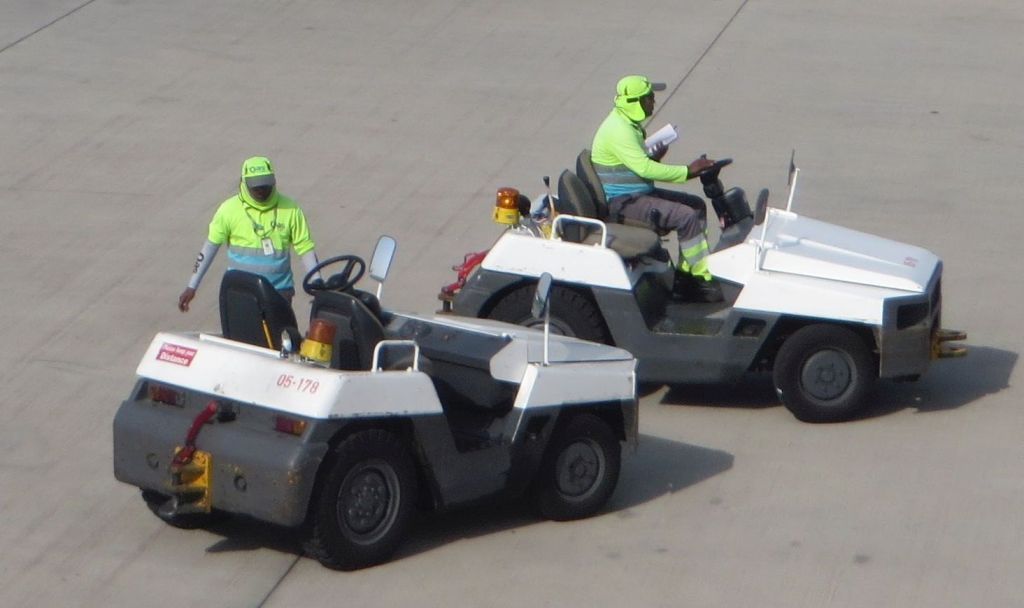
There was no pushback : the plane taxied directly. The IFE screen displayed the high quality image provided by the underbelly camera.
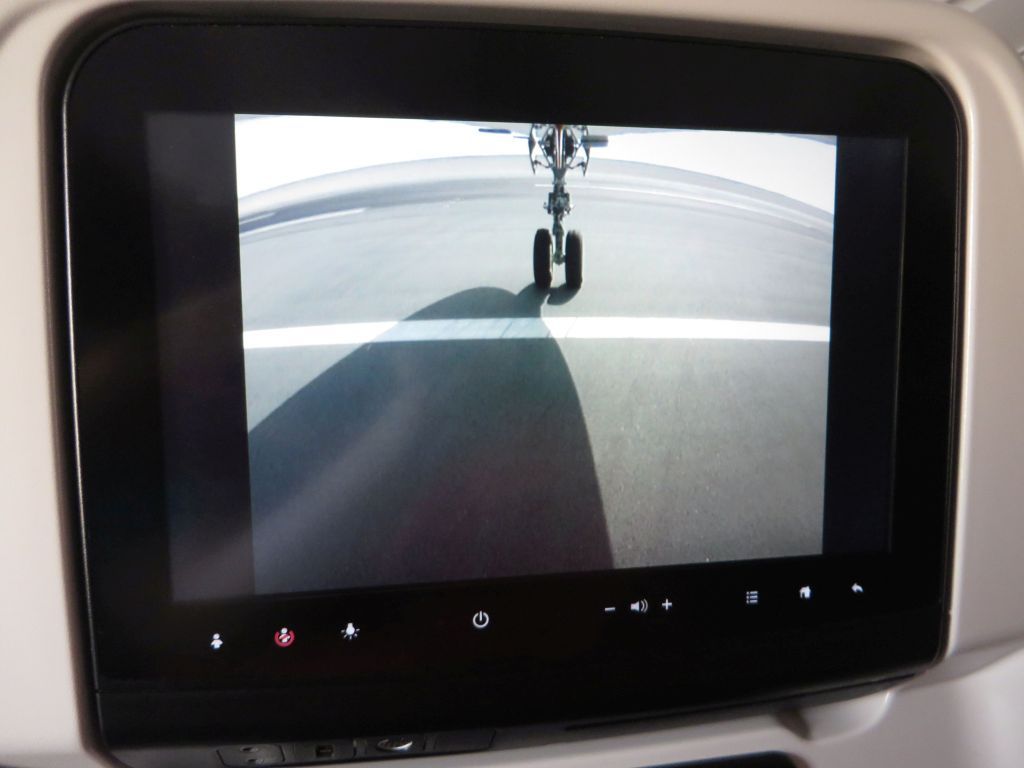
Plane spotting was quasi exclusively QR : an A321
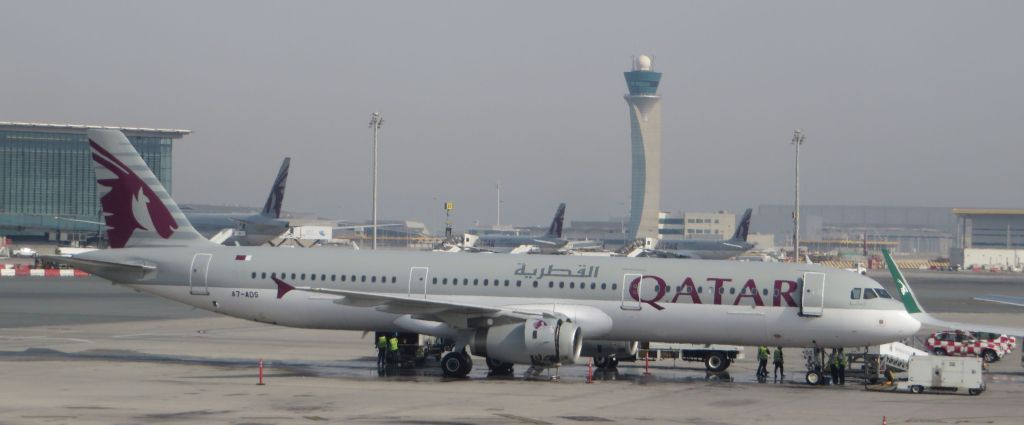
A320

B787

An A330-200F parked in the freight area

And two Moroccan aircraft : a RAM 738

And a Moroccan Air Force C130 parked nearby. This was no coincidence: the King of Morocco was visiting officially Qatar.
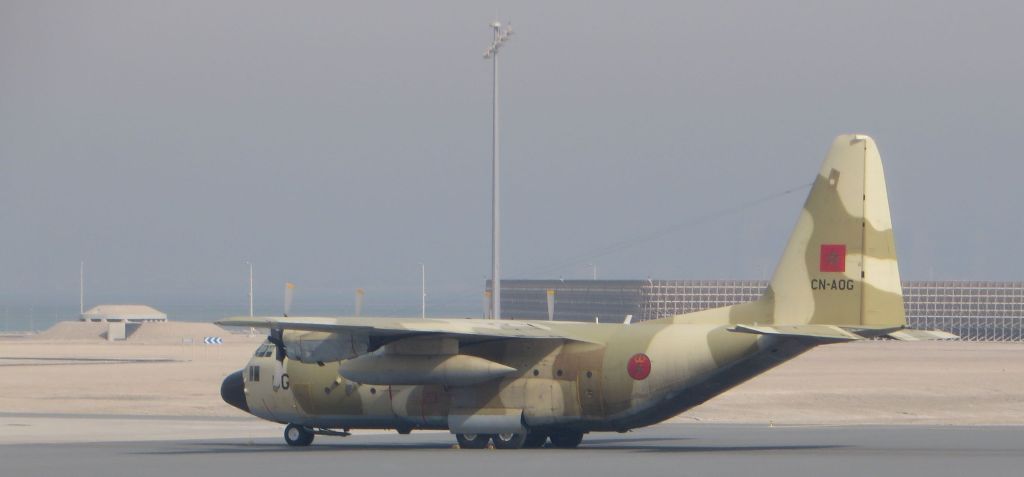
The four reactors and the shape of the wings betrayed an A380 in the distance
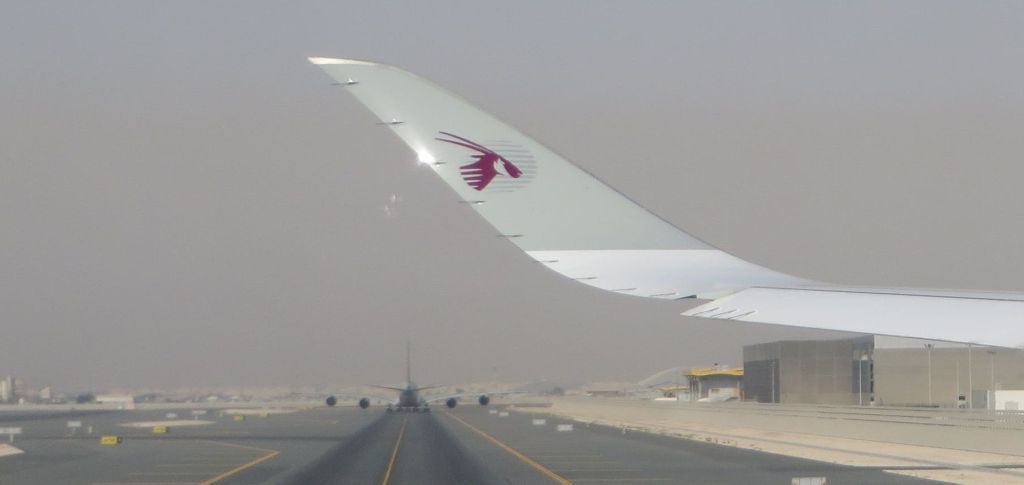
Take-off at 7:47, i.e. 17 minutes late
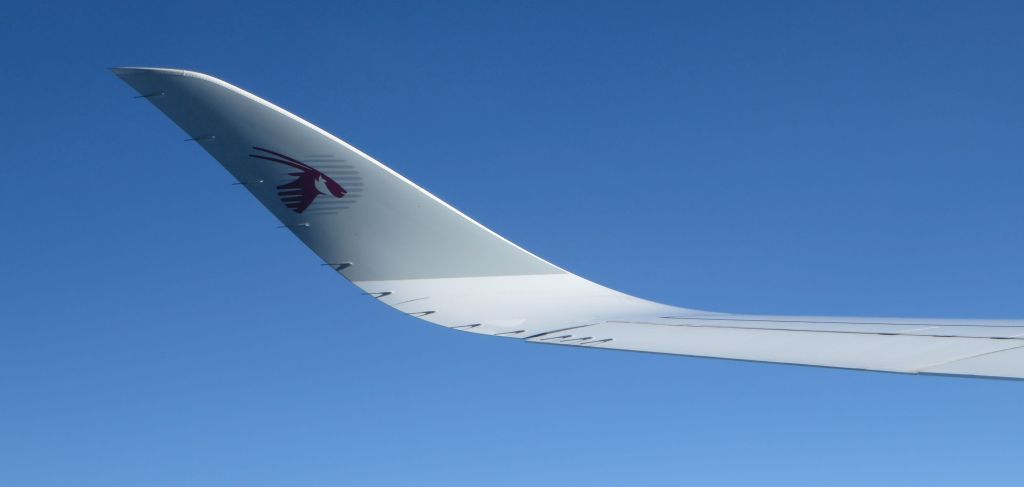
We had no view on Qatar, as expected, but that was compensated by a superb view of Dubai ten minutes later. It was all the better that the very dry air was not hot yet. Some pictures are with original colors: others were enhanced with Irfanview’s Auto Adjust Colors function.
From left to right, Palm Jebel Ali, Palm Jumeirah (the only one which is completed) and The World artificial marinas.
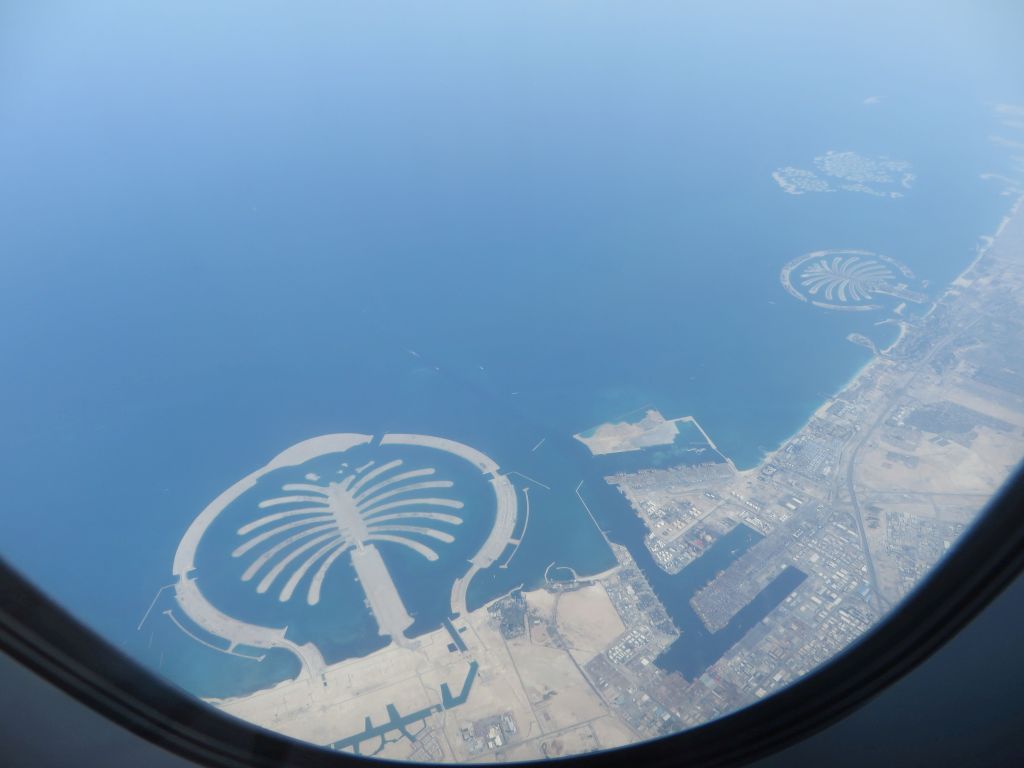
Zoom on Palm Jumeirah
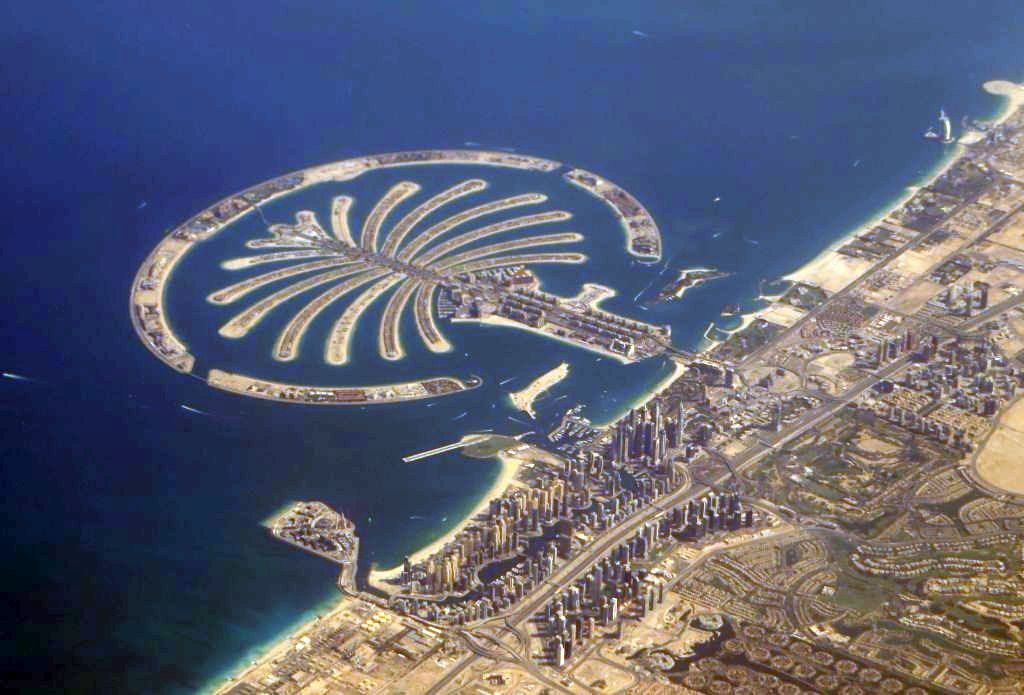
… and the Dubai Marina next to it.
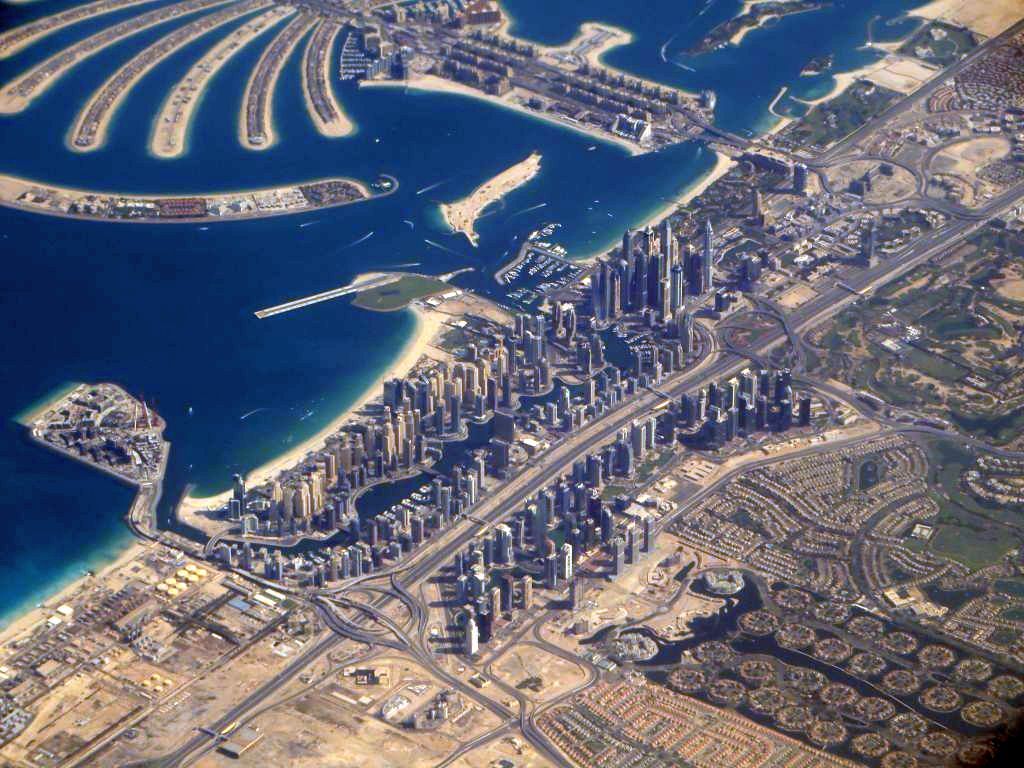
The artificial « The World » archipelago, representing a stylized map of the world, was launched shortly before the 2007-2008 financial crisis and is as of now a massive failure. Only two islands have been built upon and the others may eventually disappear progressively in the next decade, due to natural erosion and lack of maintenance.
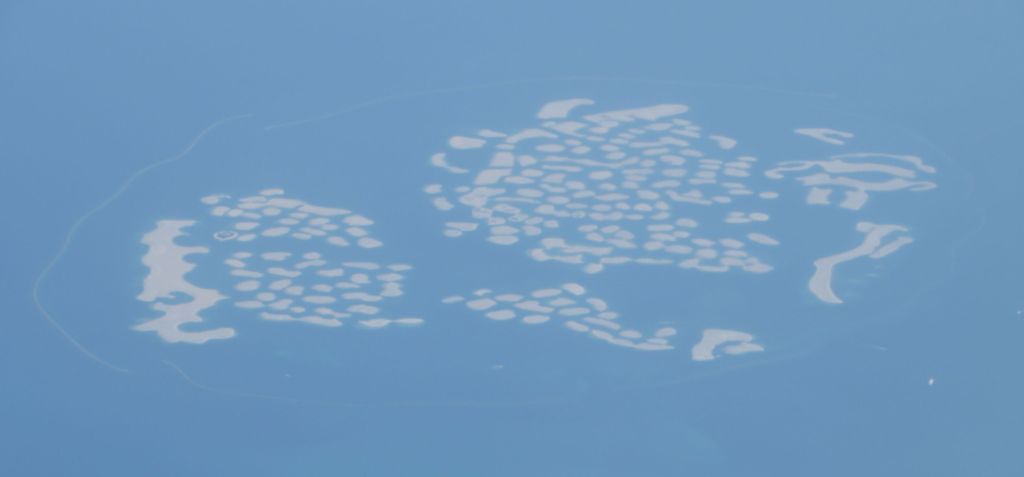
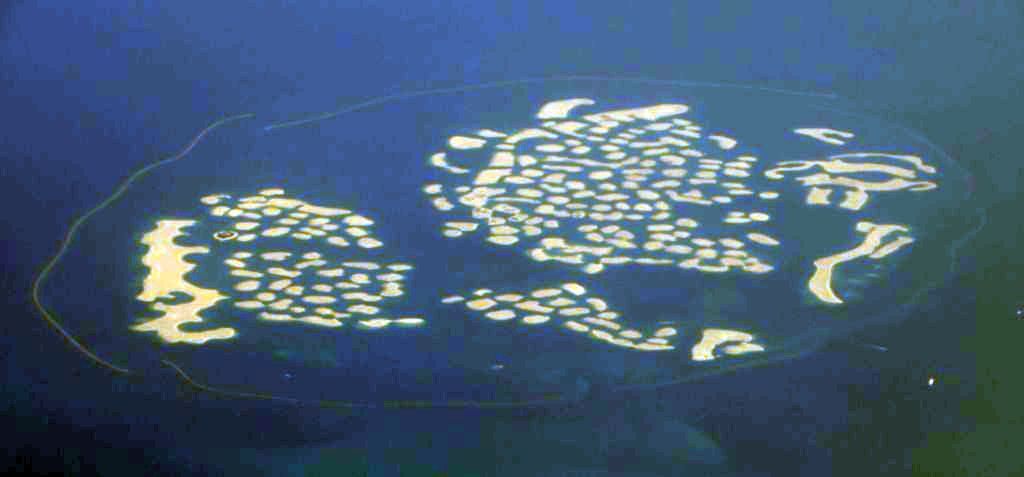
Palm Jumeirah, and Jumeirah Islands and Emirates Hills in the first coastal area
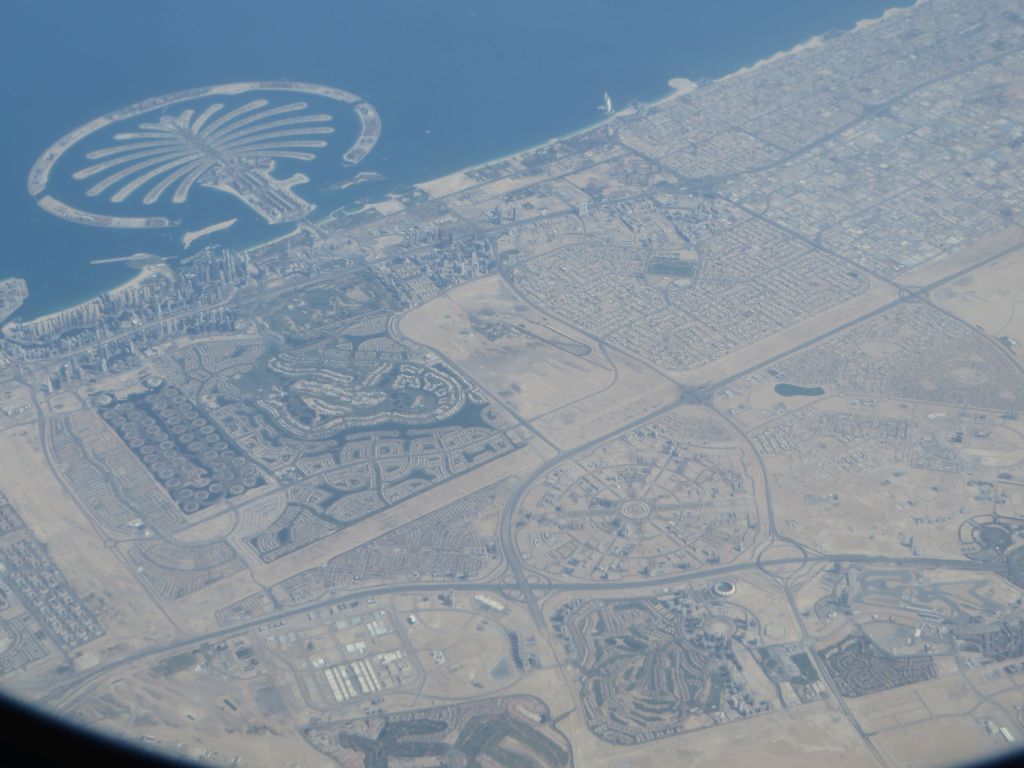
Jumeirah Village Circle, in the lower part of the previous picture.

Dubai’s international airport, in natural and artificial colors, to the right of the Khor Dubai waterway.
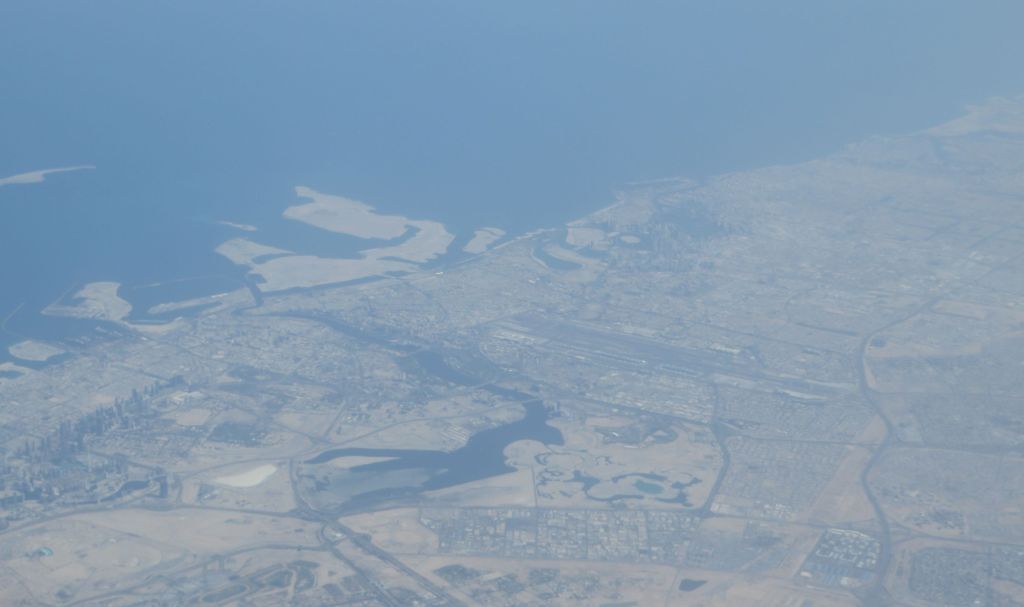
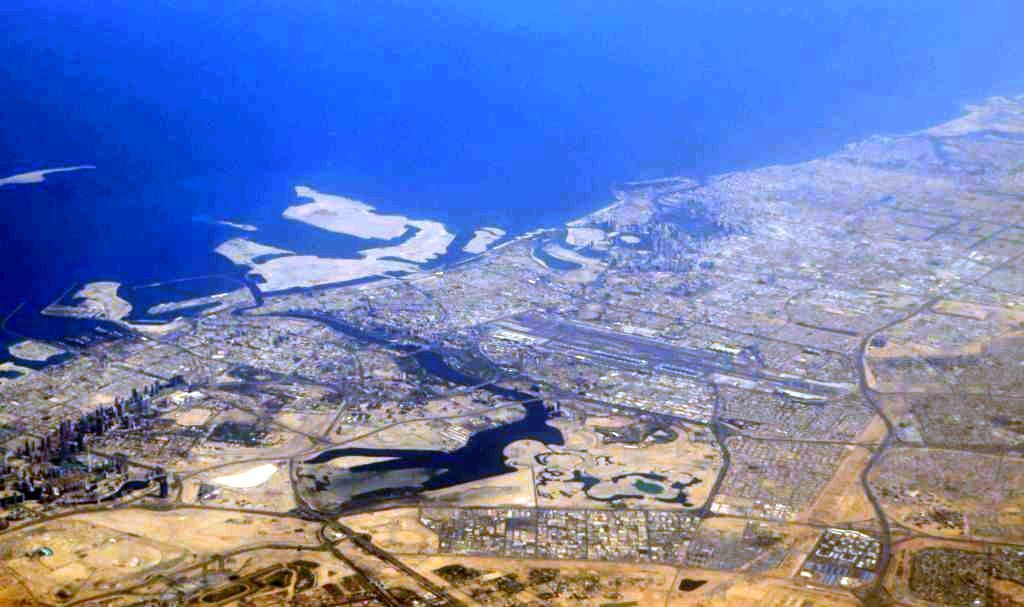
The forest of high rises alongside Highway E11, in Dubai’s financial center
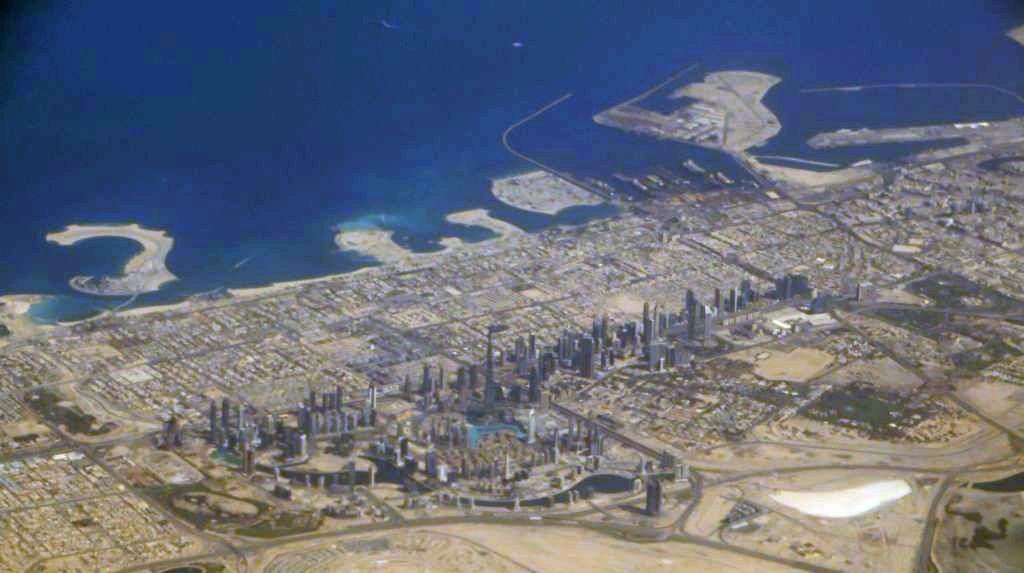
As soon as we left the urbanized part of the coast, it was a desert environment.
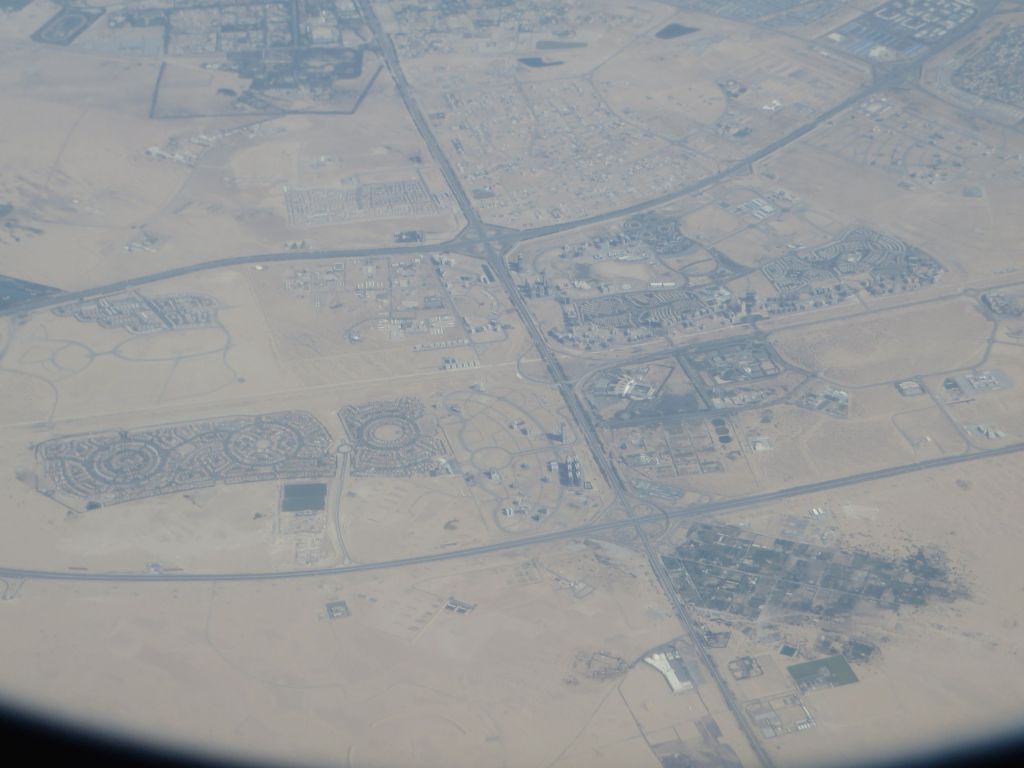
General view
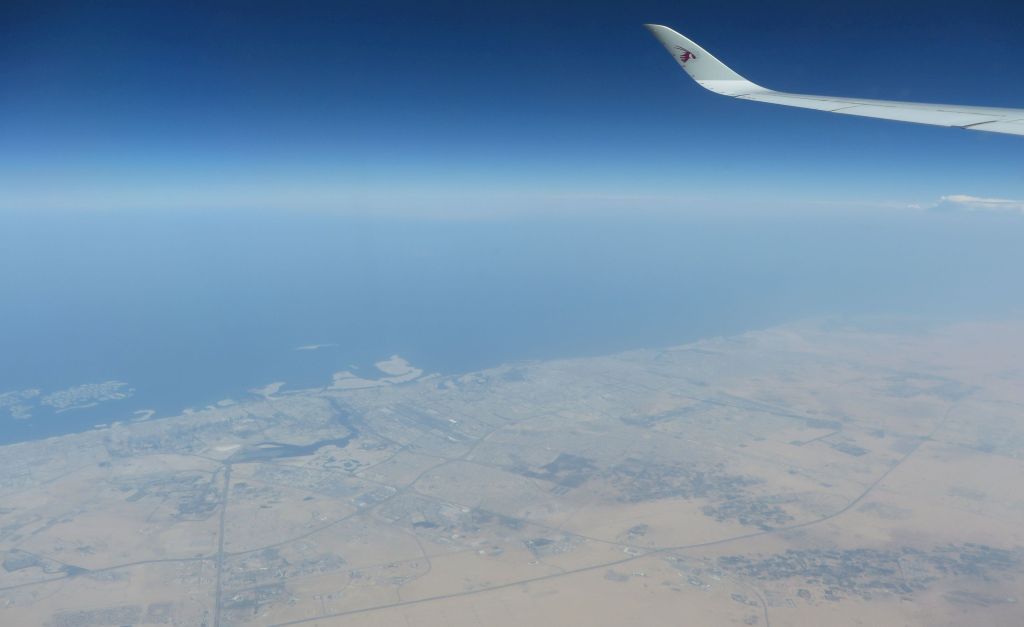
… and successive zooms on Sharjah Airport, the Gulf countries’ low cost airport.
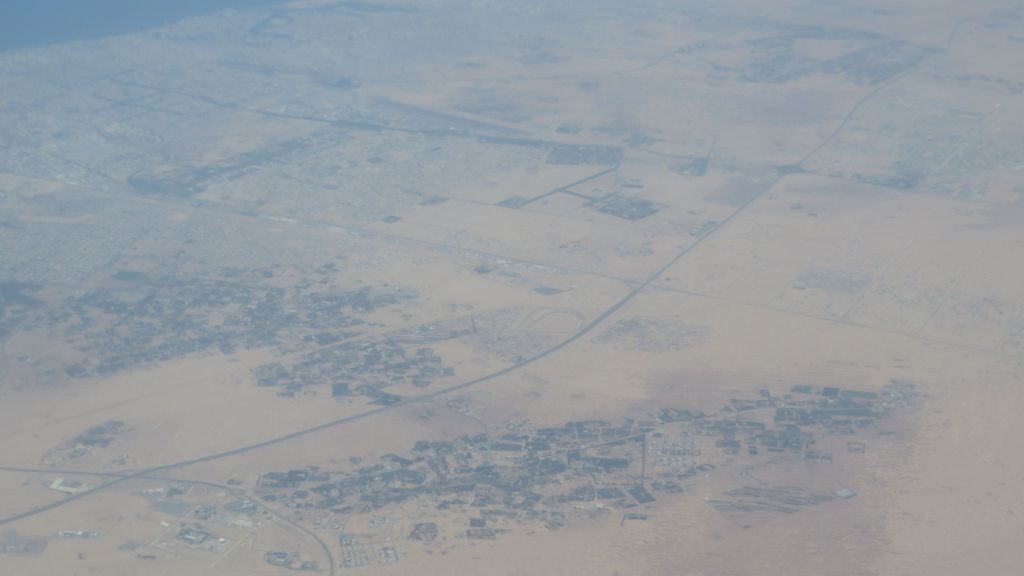

The same in very artificial colors, because the contrast had dropped due to the distance
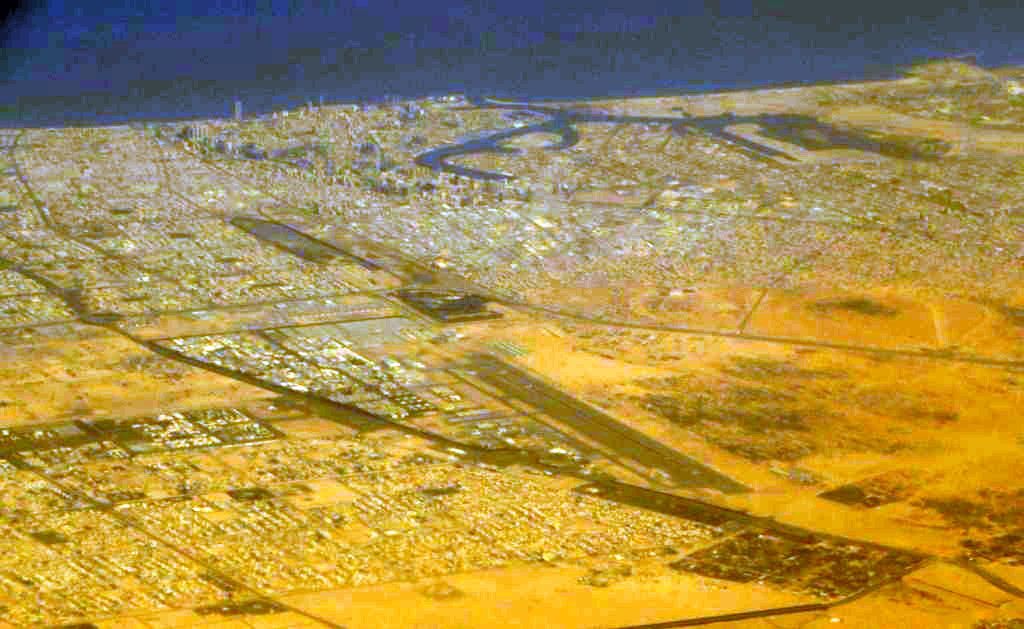
The inside of the peninsular is desert

We were there
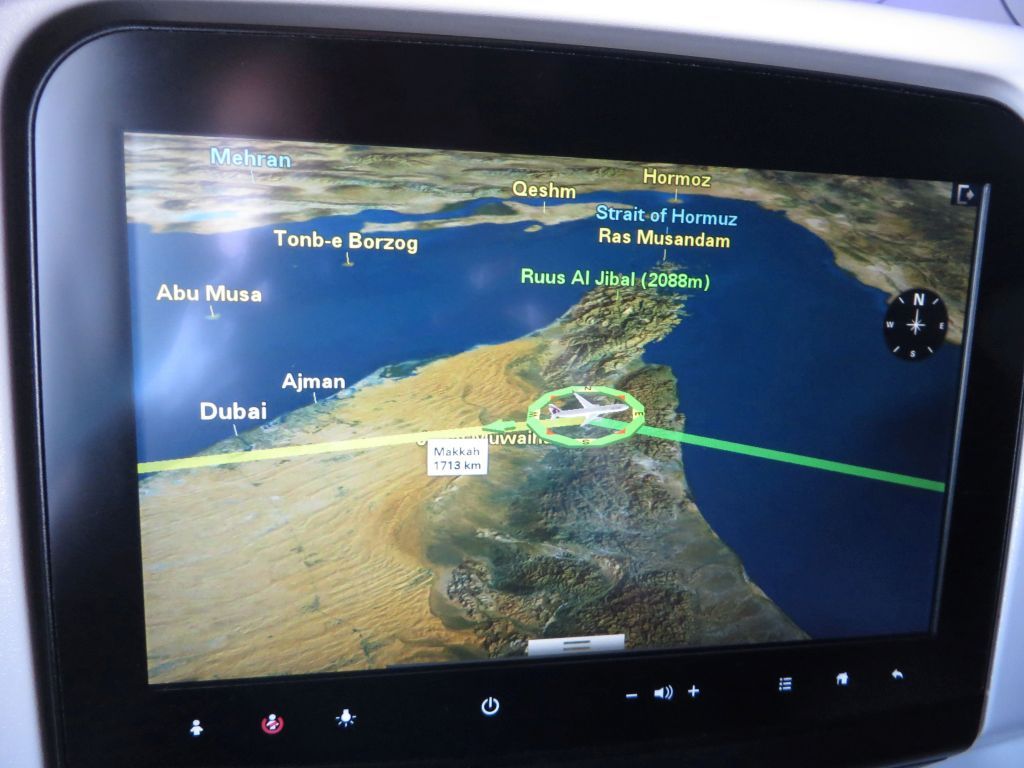
The rocky landscape of Fujeirah Emirate, on the east coast. In the center of the picture lies a political and geographical curiosity: the Madha exclave, which fully surrounded Omani territory, but which in turn fully surrounds the Nahwa enclave, a few square kilometers belonging to the Sharjah Emirate (center, lower third of the picture). The population there is minimal.
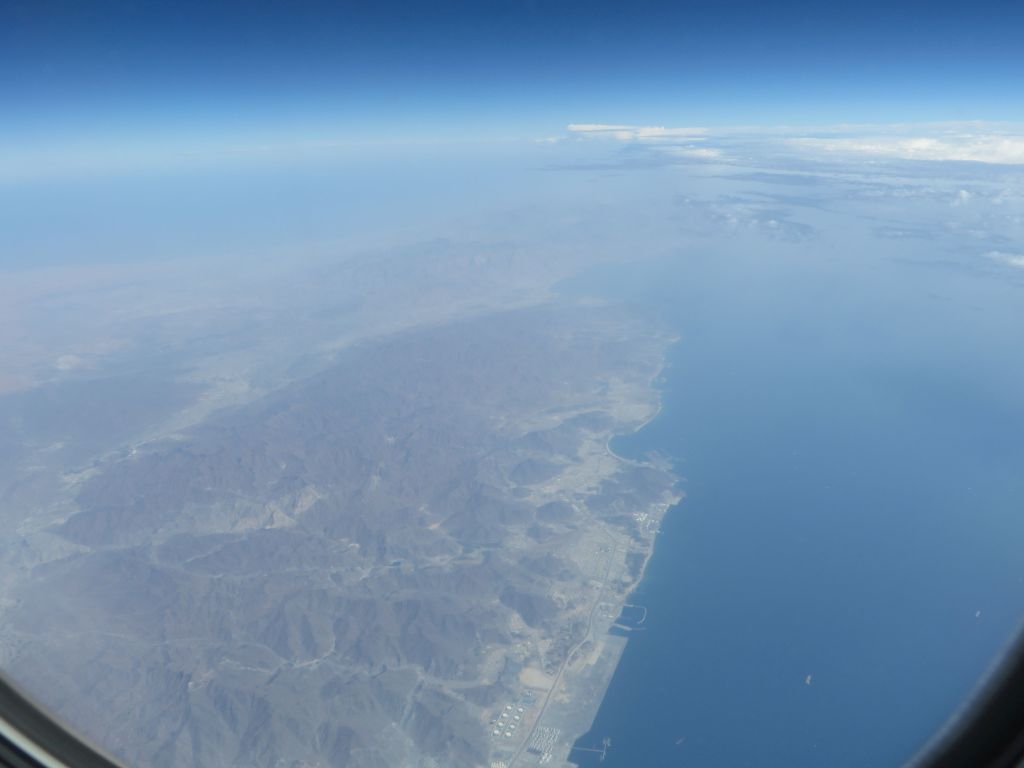
The route of that flight was mostly above the Indian Ocean, apart from crossing India.
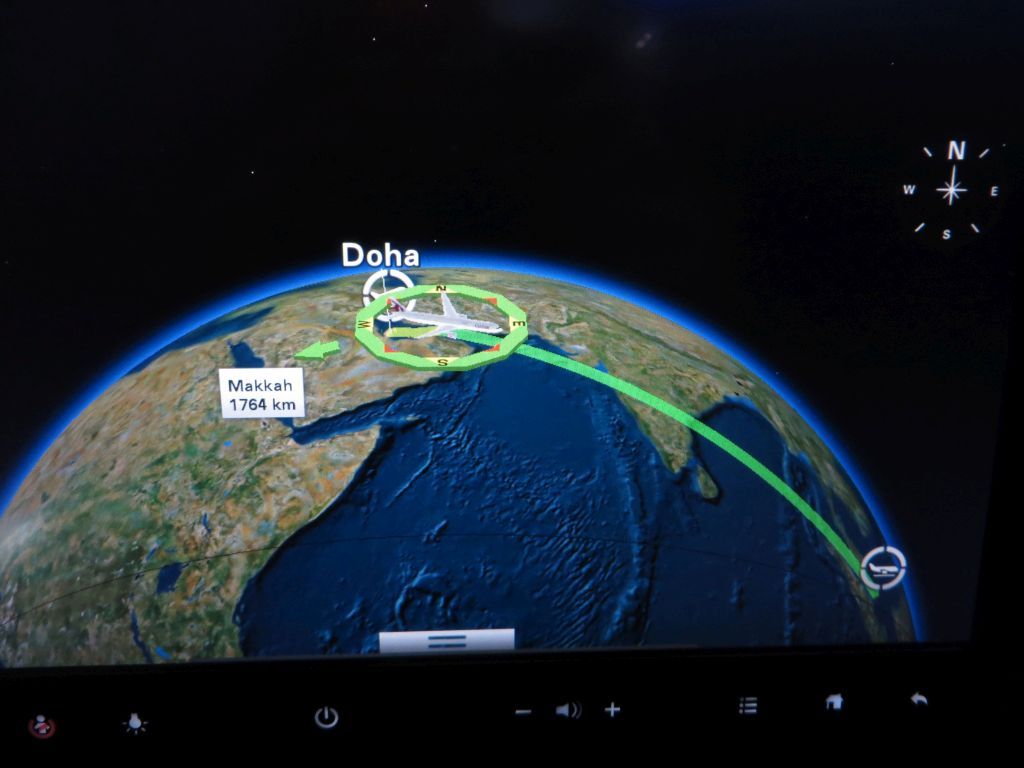
The very peculiar shape of the winglet
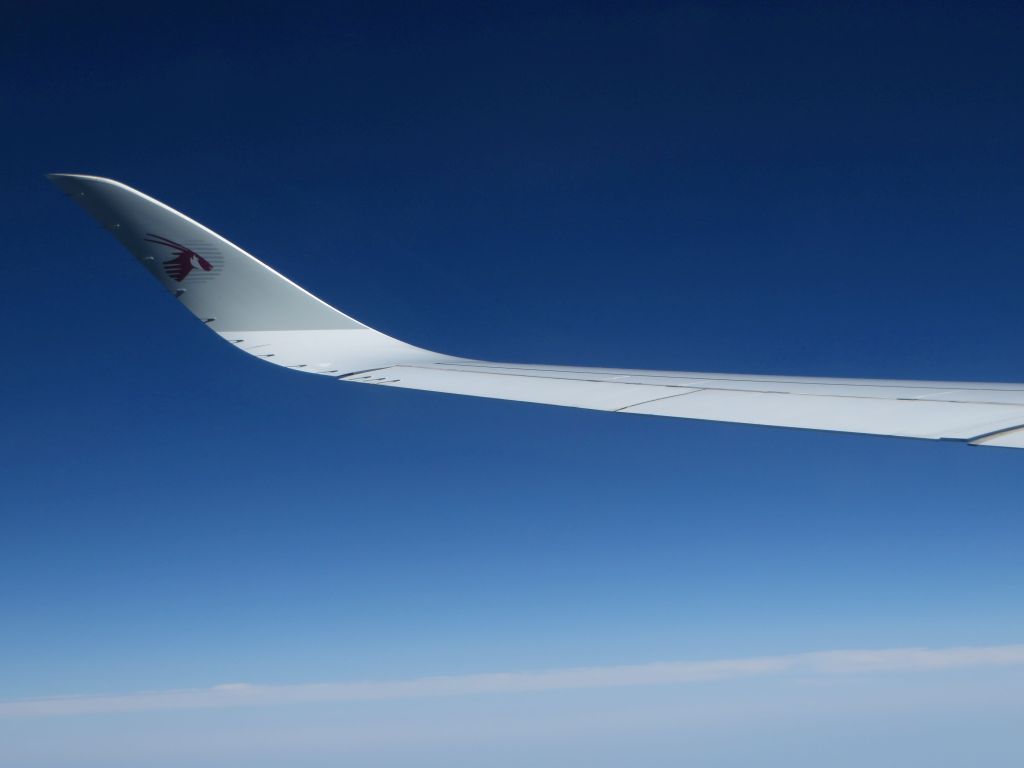
In-flight service started with a breakfast served this way
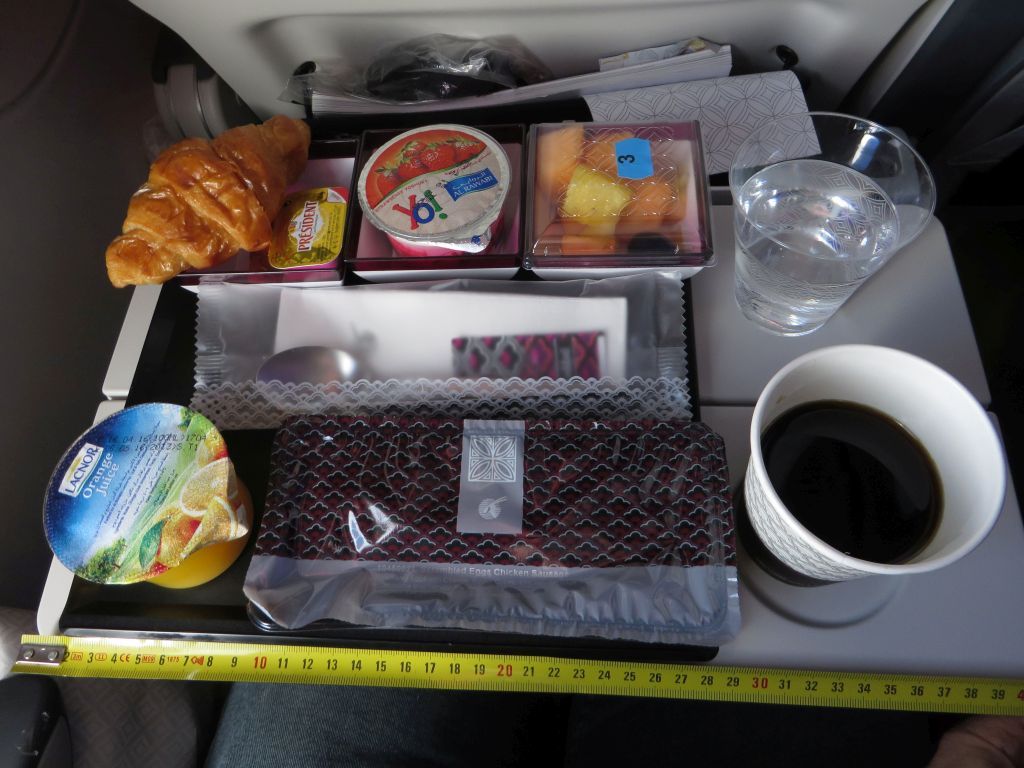
The same, after unwrapping. The various ingredients are quite commonplace; note though the metal silverware like on the preceding flight. The croissant was quite small – only 13 cm long, and I have a photographic proof ;)
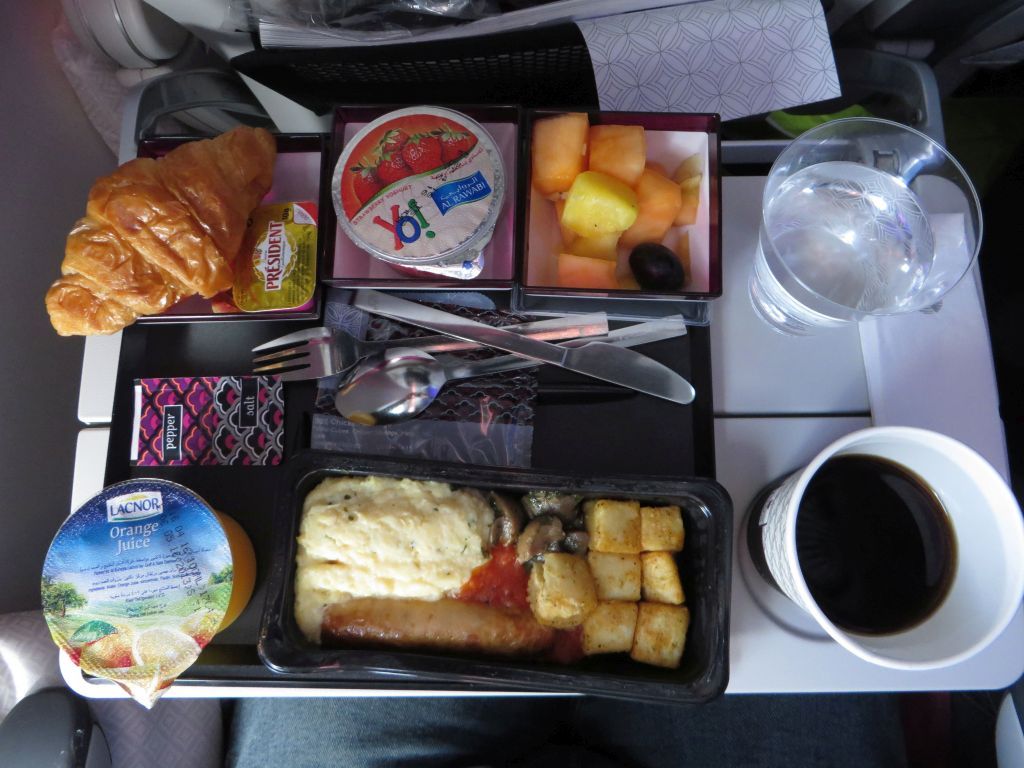
And then, since the number of passengers on board allowed them to have a three seat row each, I took a nap to complete a much too short night on the CDG-DOH flight, taking an hour and a half of rest in a full flat in the center, and woke up for a water and good fruit juice served after three hours of flight since takeoff.

The decoration of the plastic cup
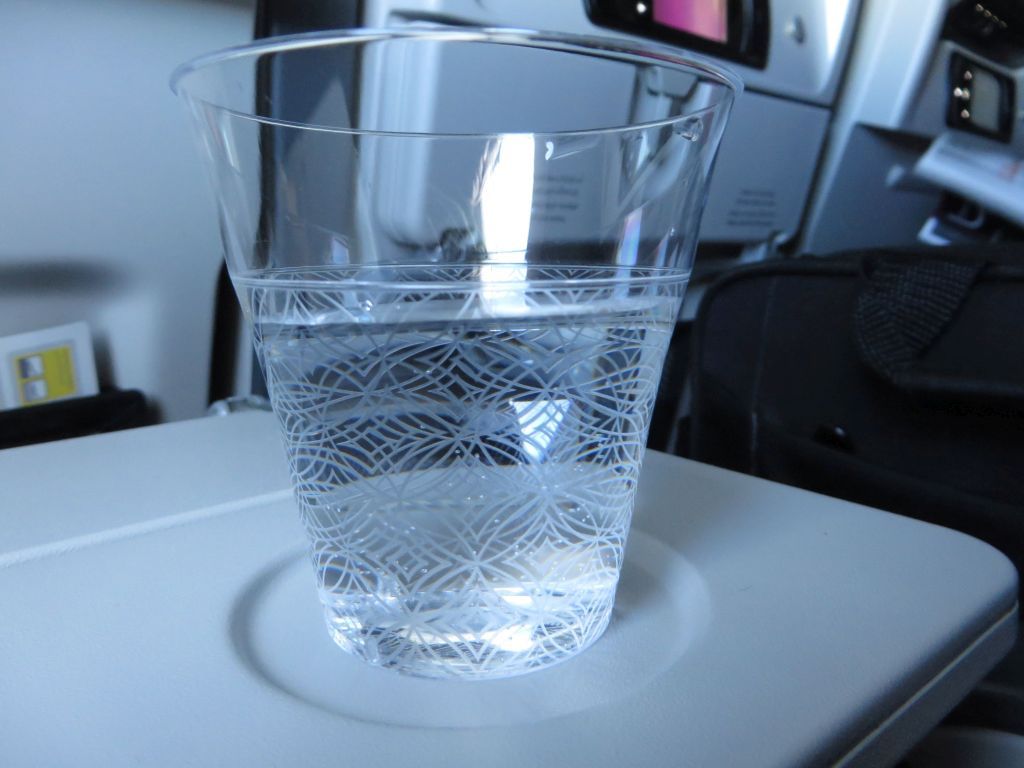
The plane ended her crossing of India ; this was the east coast
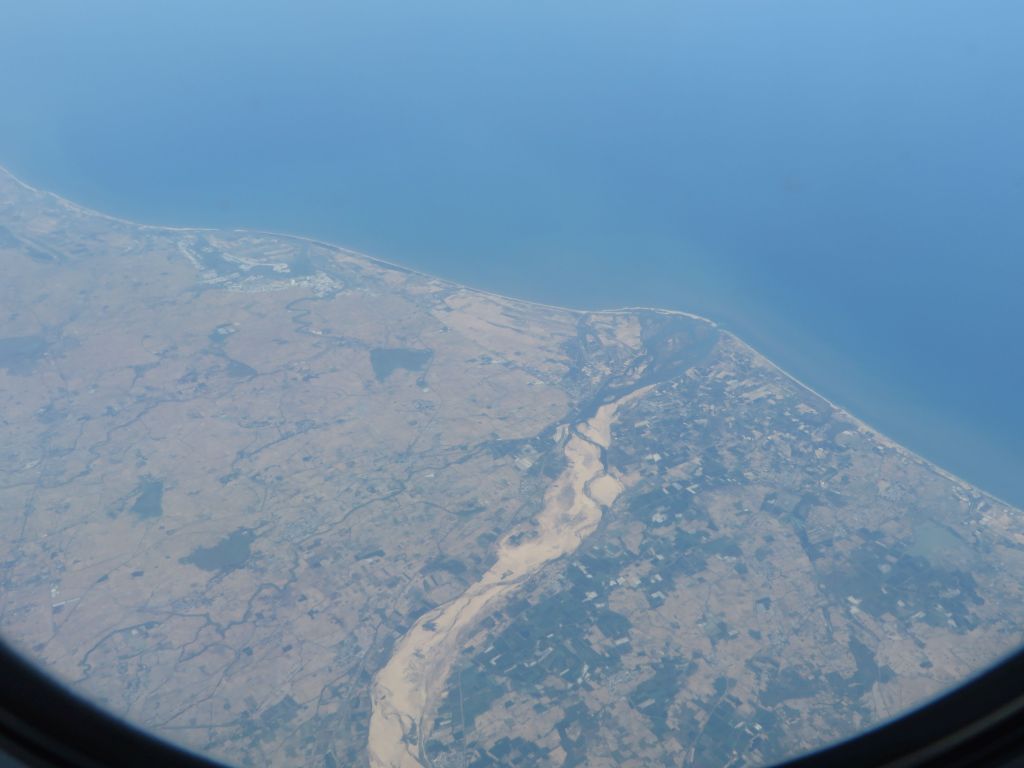
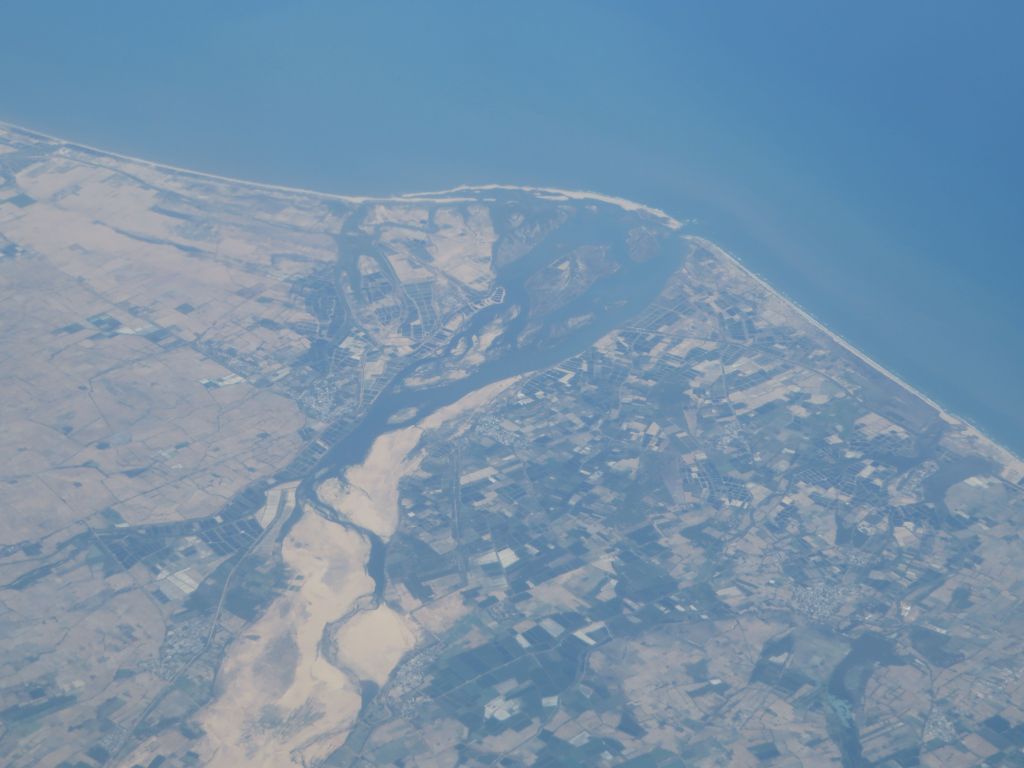

The moving map provided me the accurate location

Air to air with a Malaysian Airlines A330

This was the enlargement at original resolution. Be charitable with regards to the quality of the picture: this was my first air-to-air picture of a plane flying in the reverse direction! :)
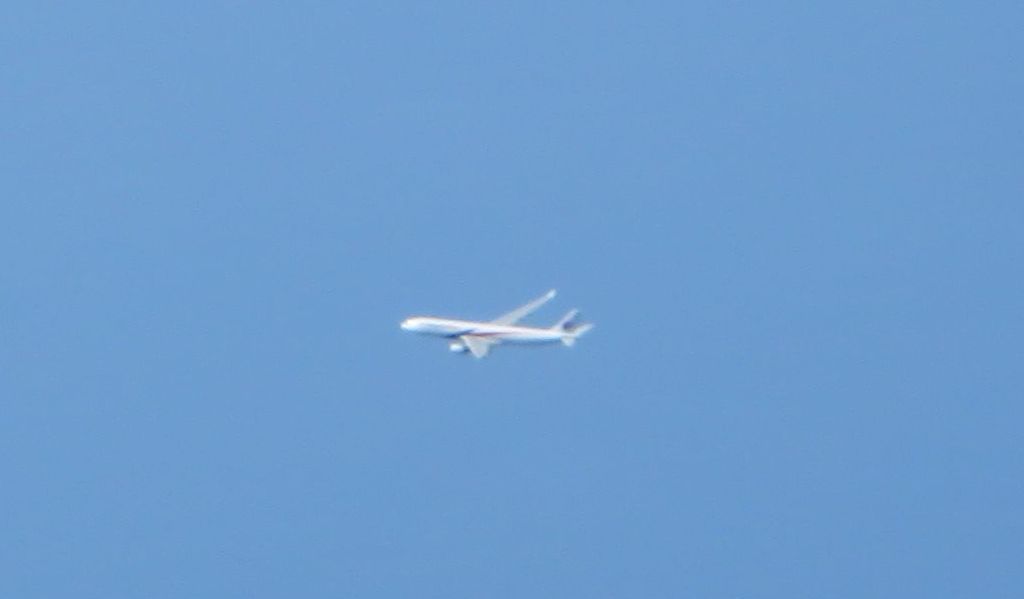
There was not much to see above the Indian Ocean, apart from these clouds
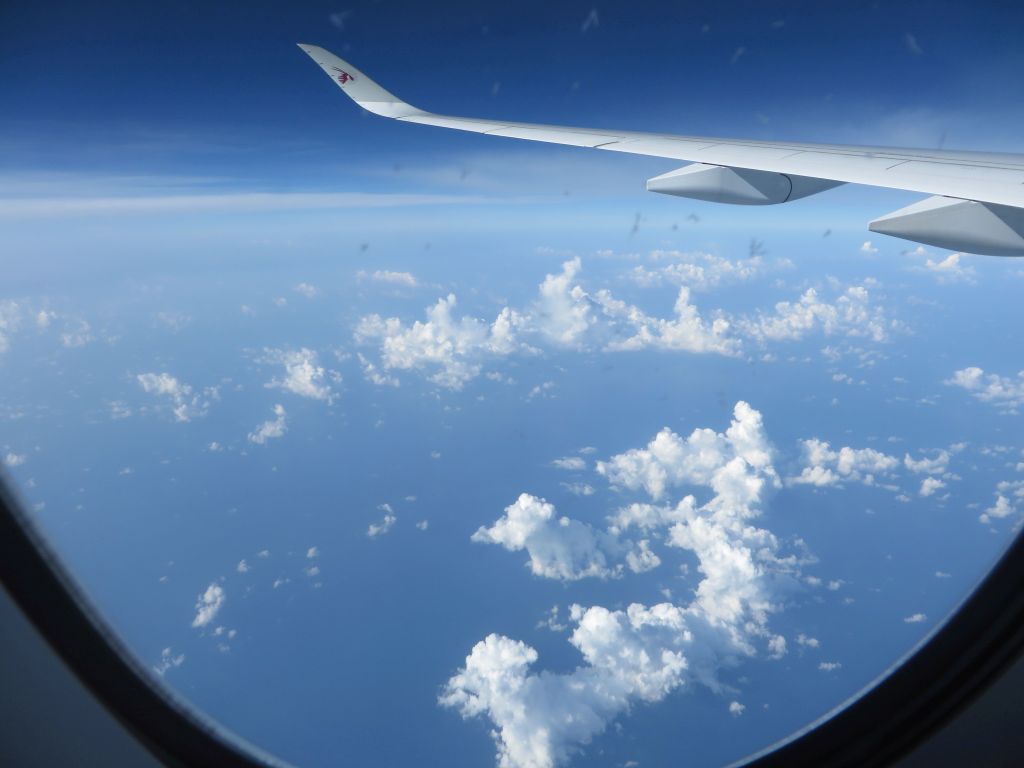
The plane reached the Nicobar archipelago, located beyond the tip of Sumatra island
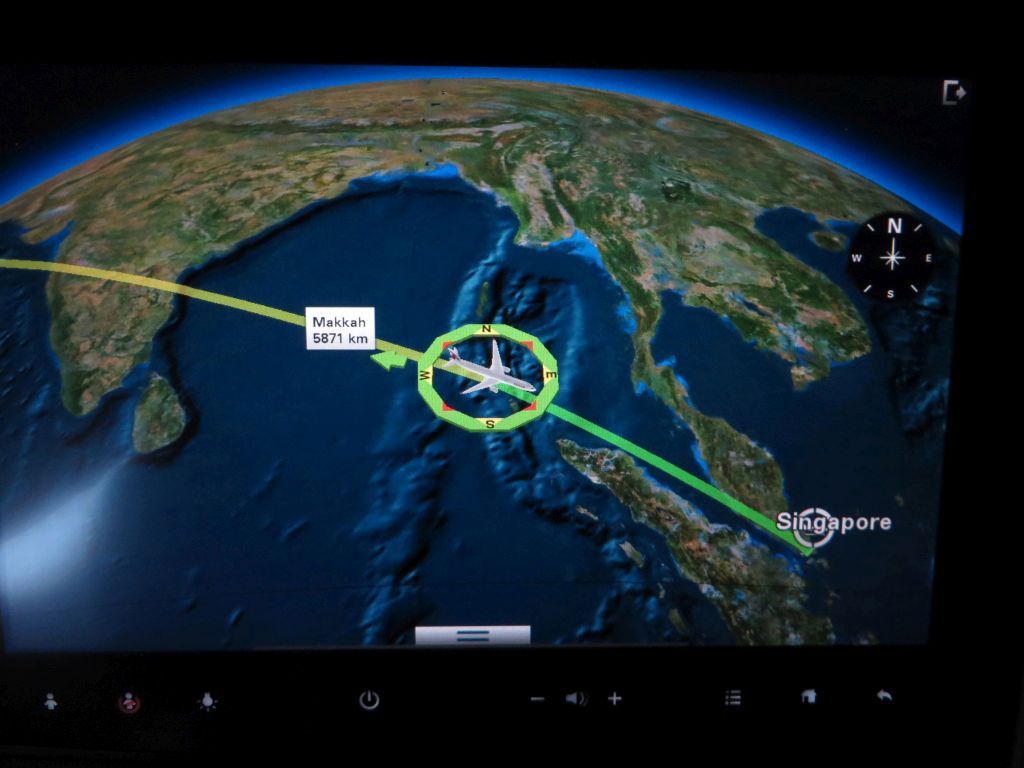
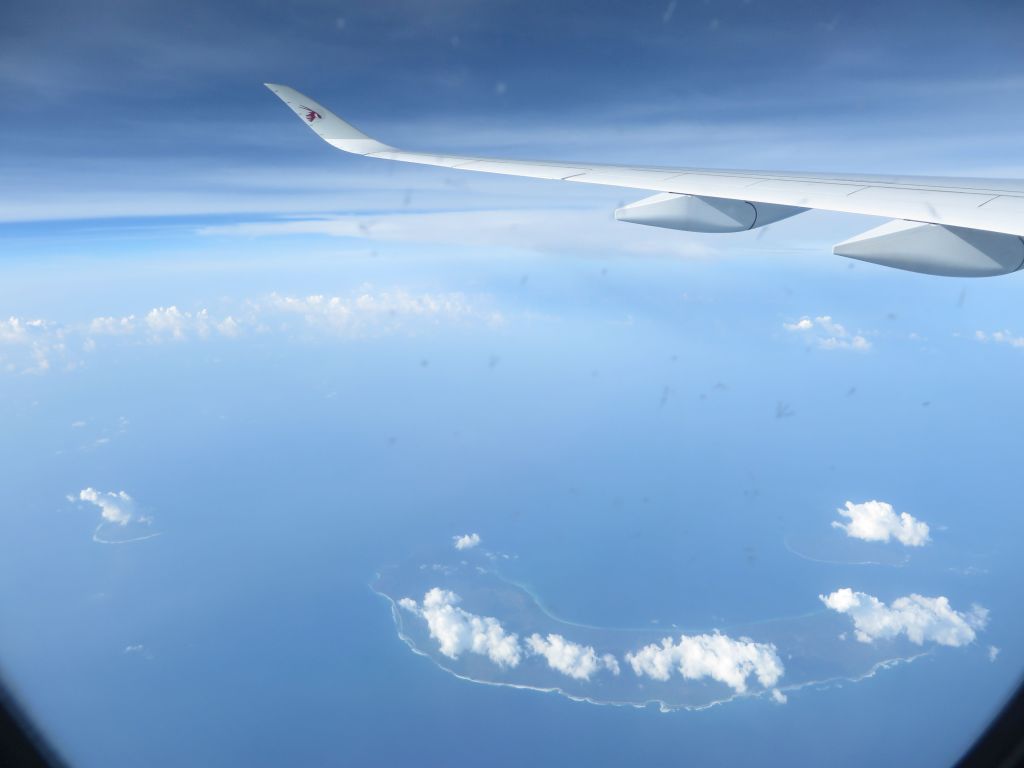
The flexibility of the moving map program made it possible to have a detailed map of the islands that we flew above.
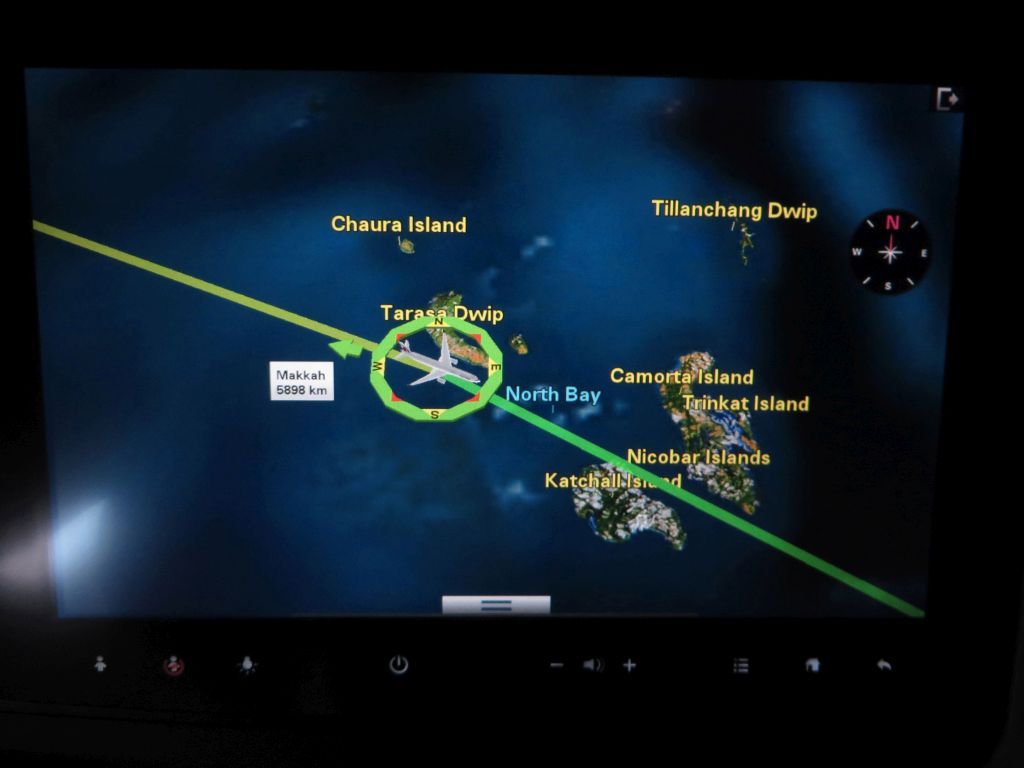
The moving map on this A350 IFE was just plain bliss for a moving map addict: the map was orientable and enlargeable at will in all directions, with a highly responsive touchscreen.
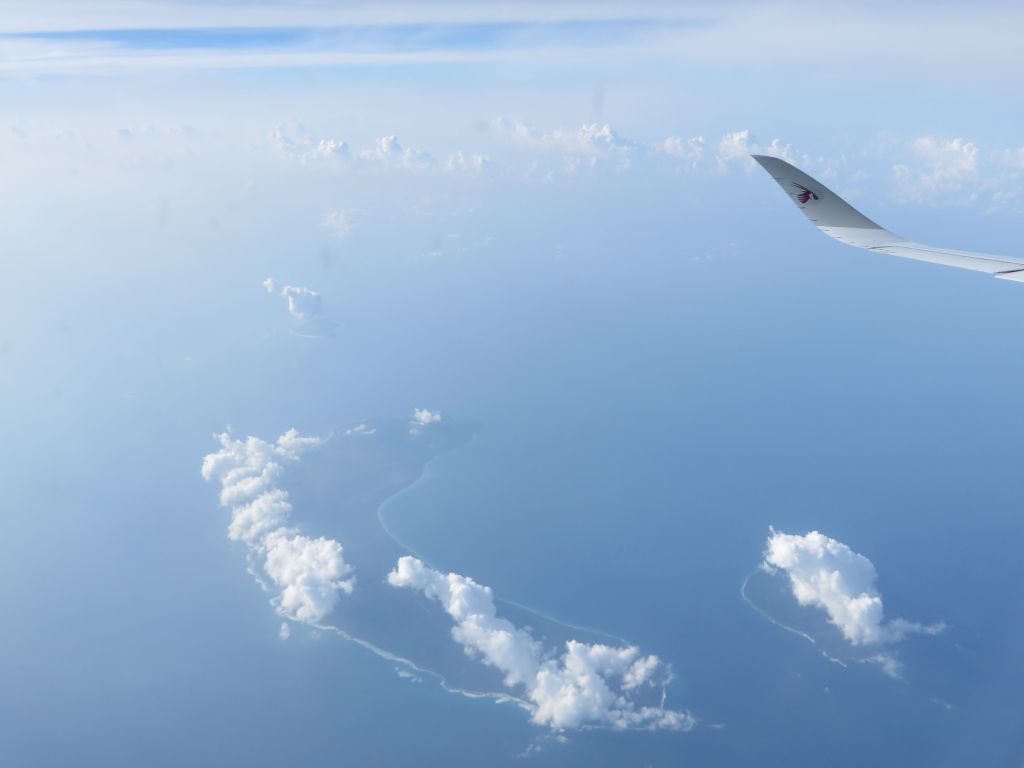
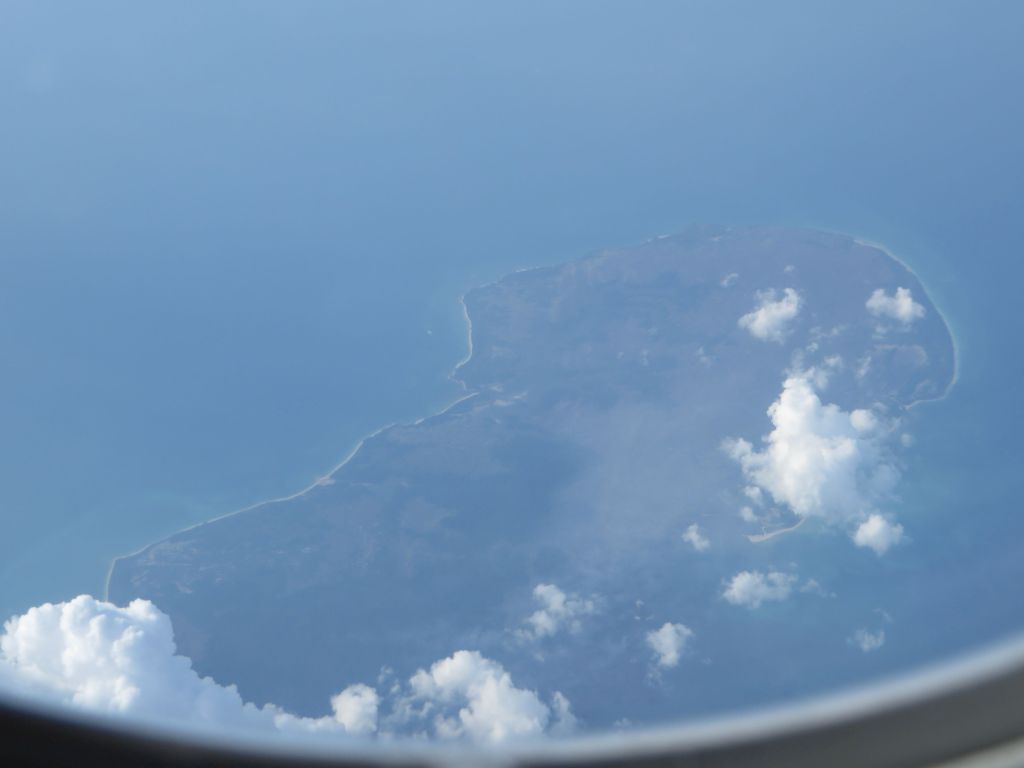
Some food was served an hour and a half before landing. Like on the CDG-DOH flight, it was tasteless.
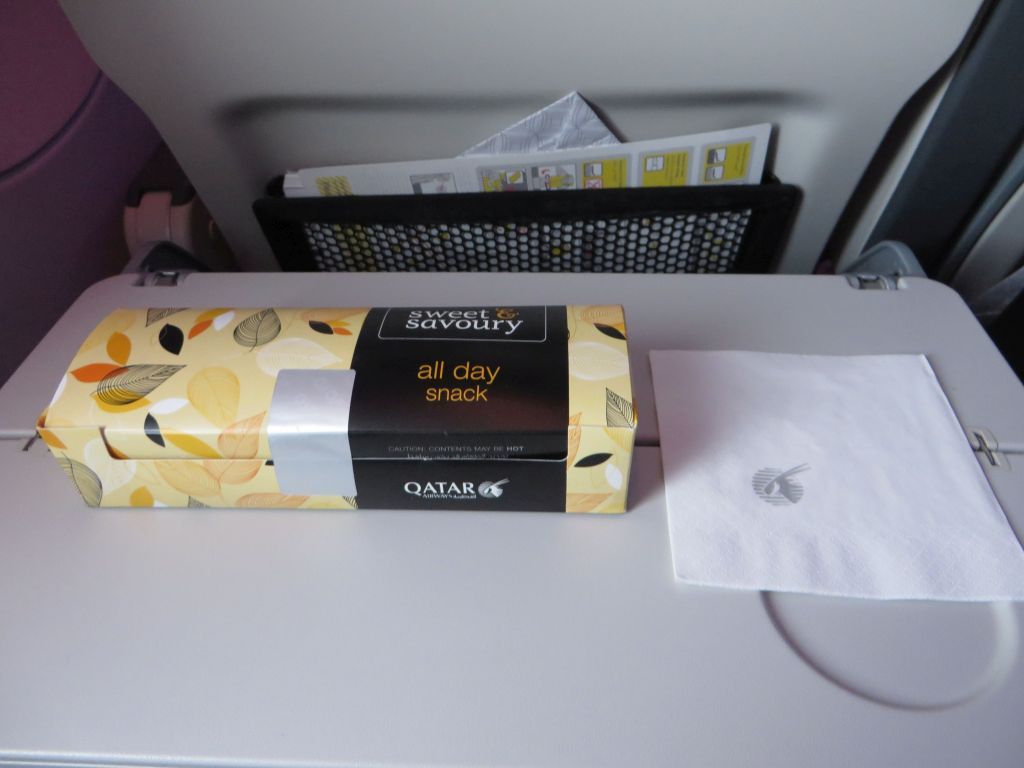
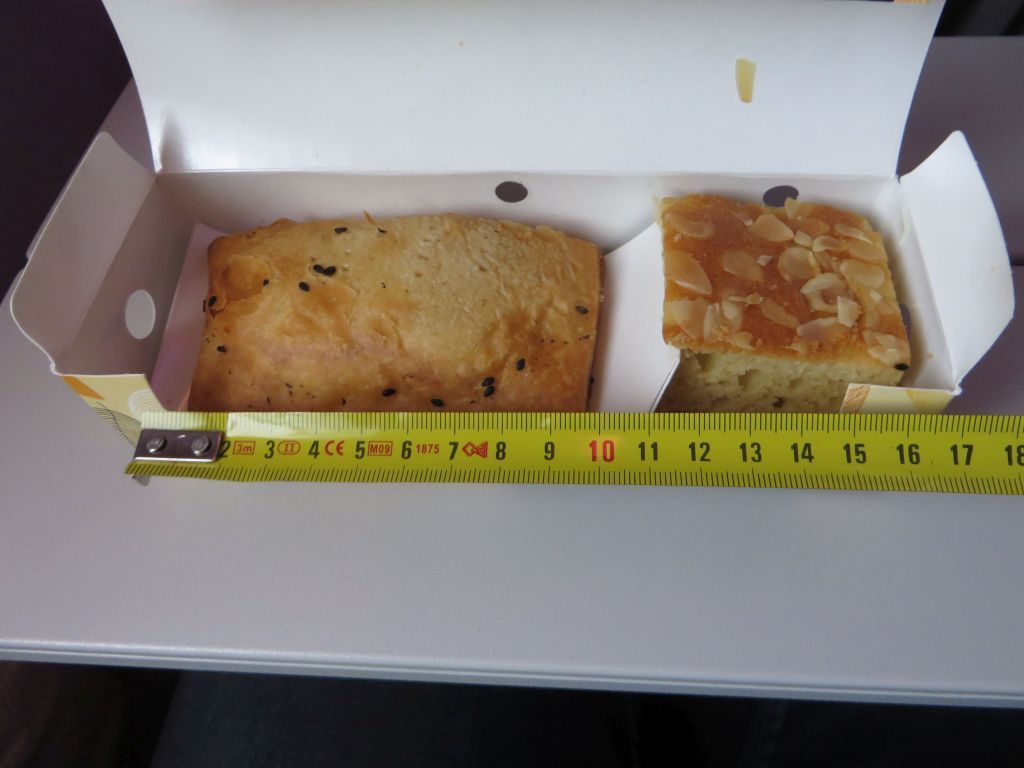
On the other hand, there was not any indication of contents of this («sweet and savoury») stuff
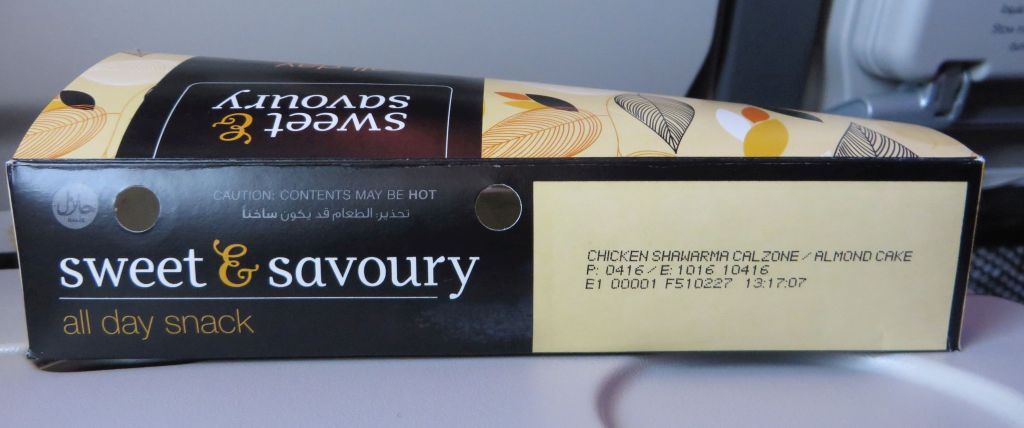
Night came when the plane reached the Straits of Malacca.
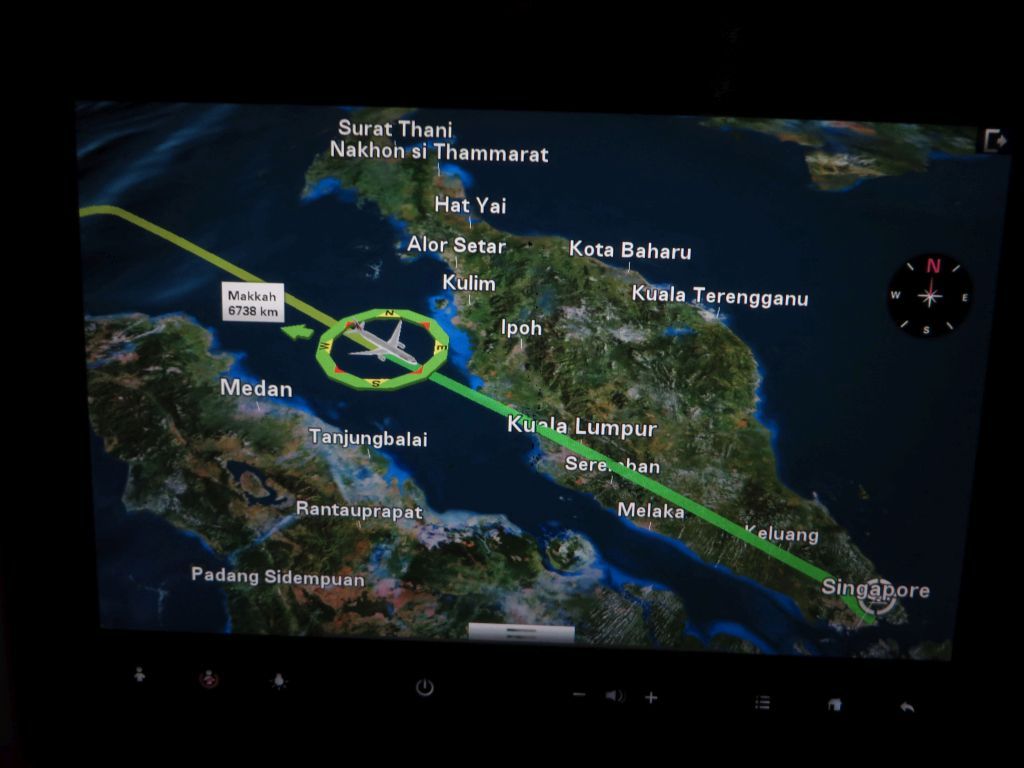
The route was refined here : the plane was going to say in the straits.

And eventually lingered there for a while :)
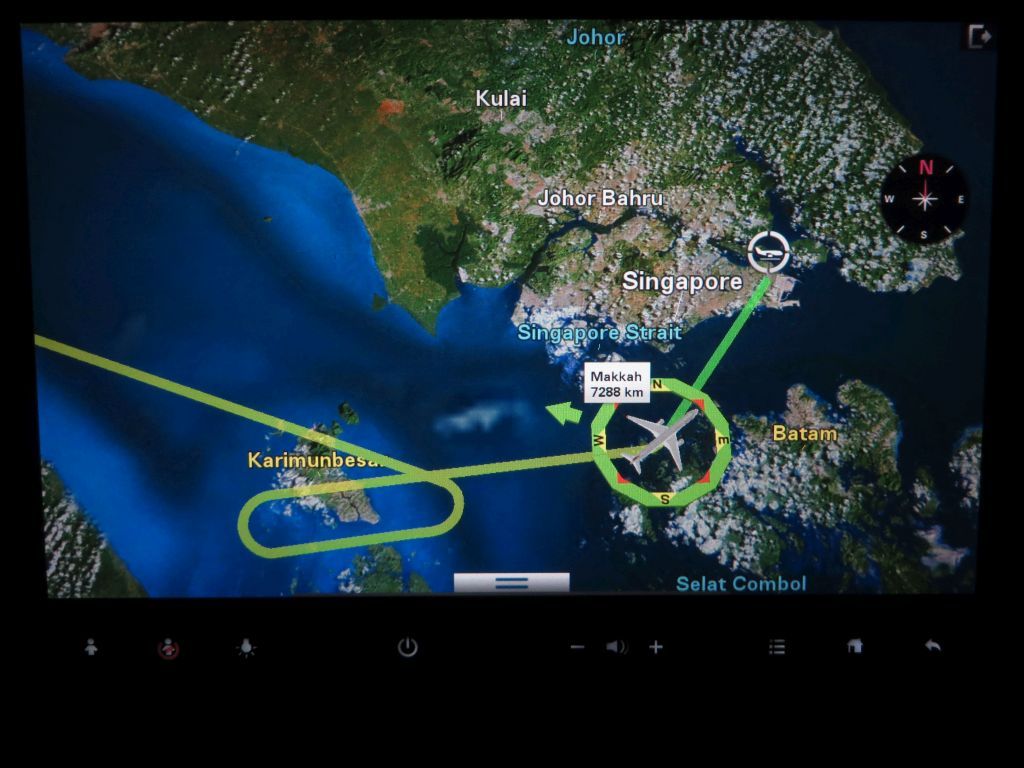
Moodlighting in the cabin during the descent
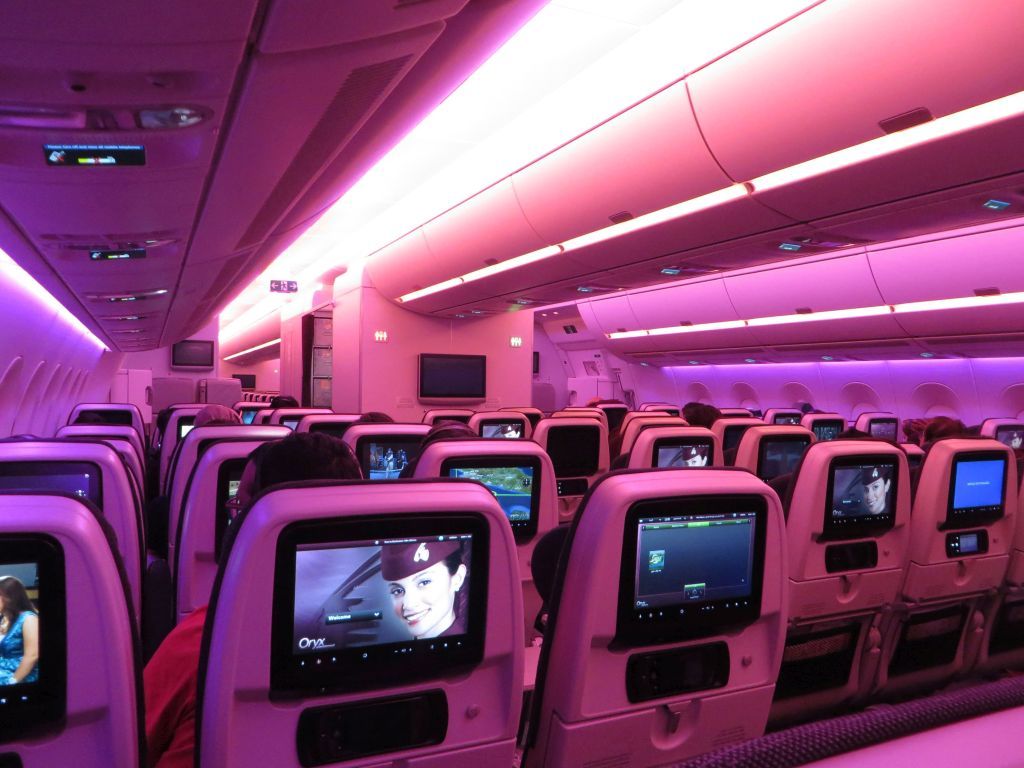
The bay in front of downtown Singapore
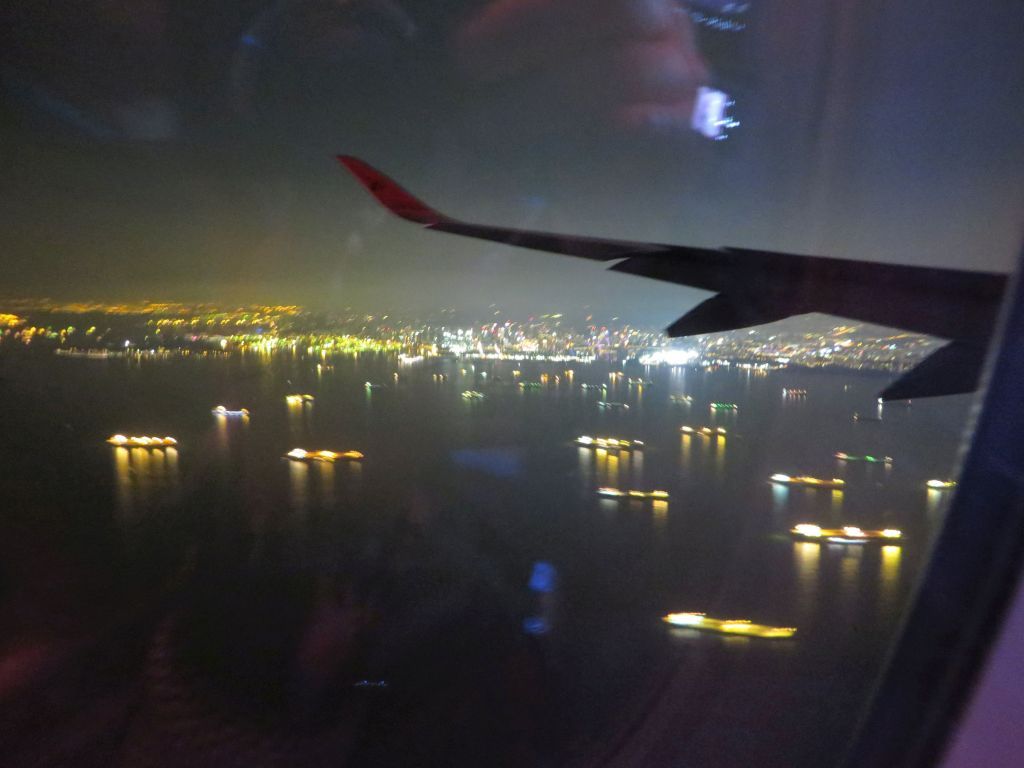
A voluntary under-exposure to avoid blurring this picture of the city center : you can see the Singapore Flyer Ferris wheel at the right edge of the picture.
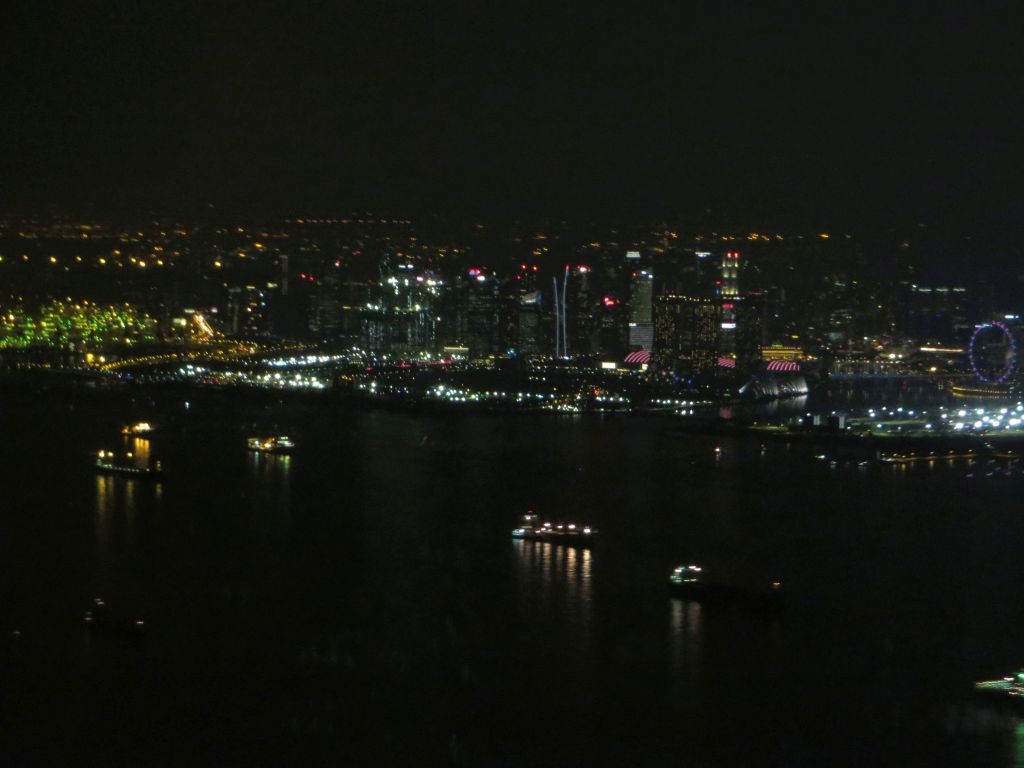
The ships moored in the bay
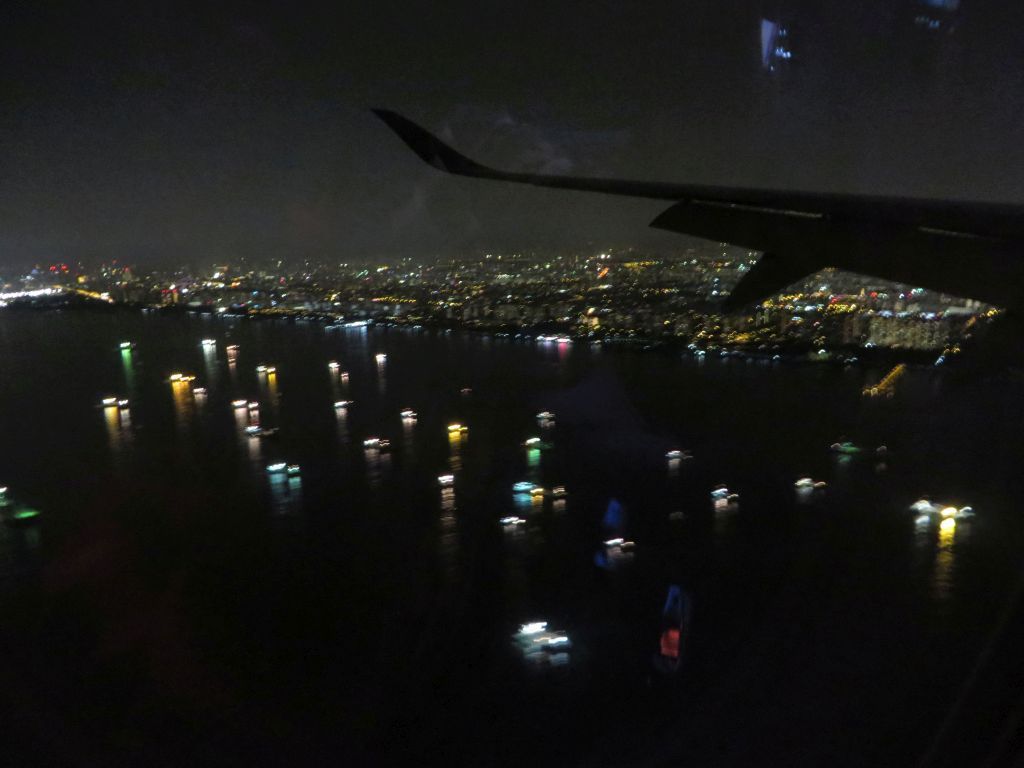
Deplaning was of course ultra-fast, since there were so few passengers on board. The characteristic cockpit windows of the A350.
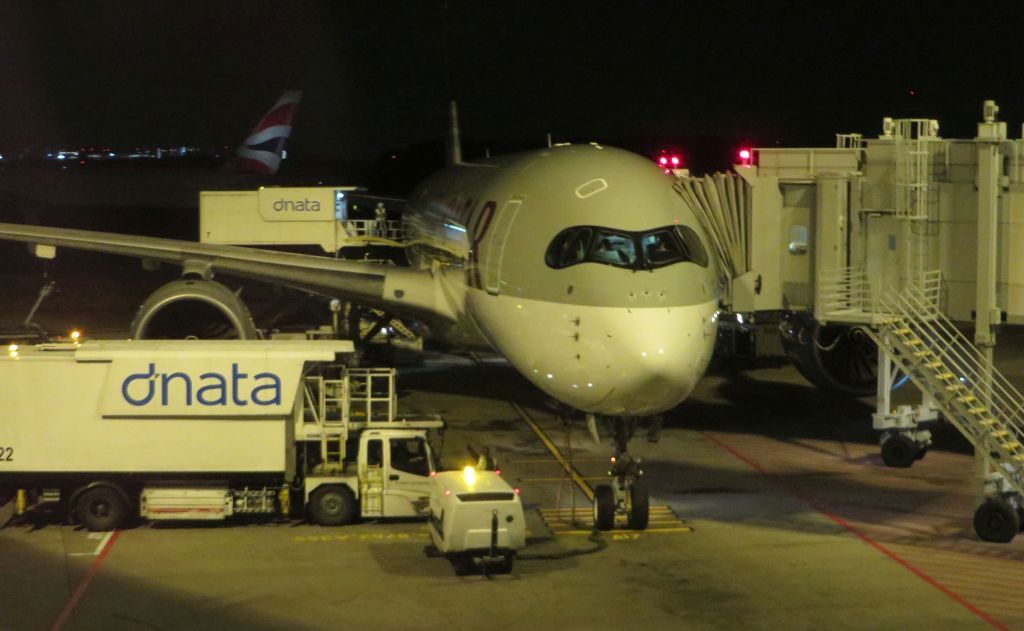
The walking distance to the exit was reasonable
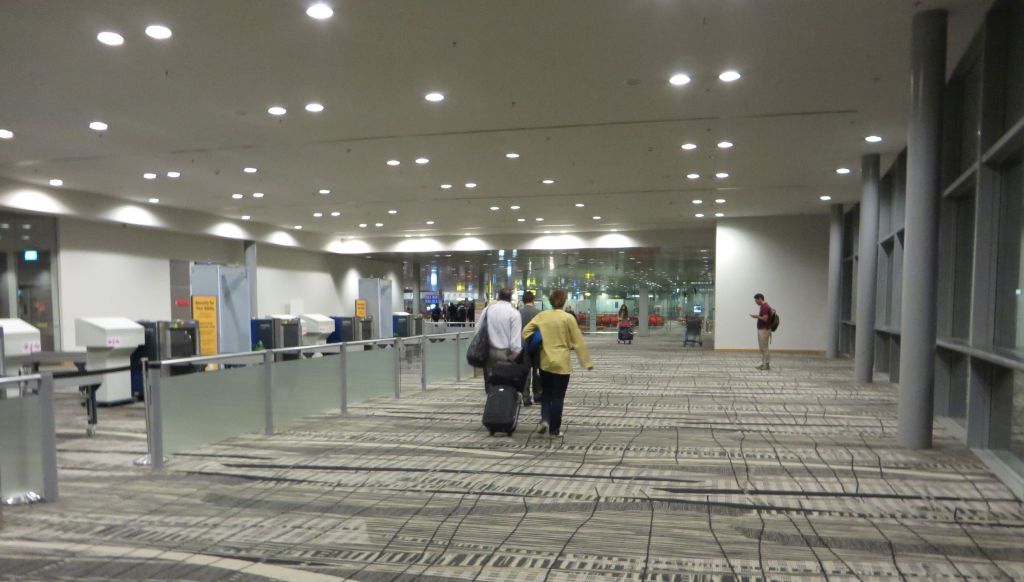
Going down to the many immigration counters where the waiting time was minimal
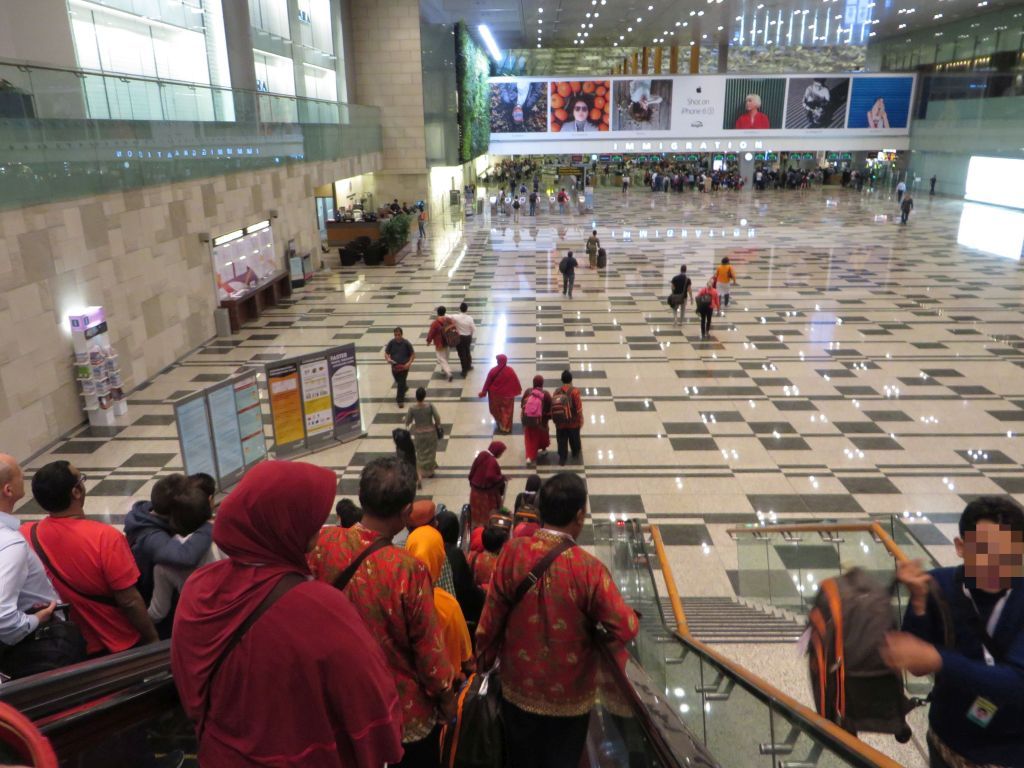
And arrival at the same time our non-priority luggage was delivered, 16 minutes after our deplaning : a commendable feat for SIN’s ground staff !
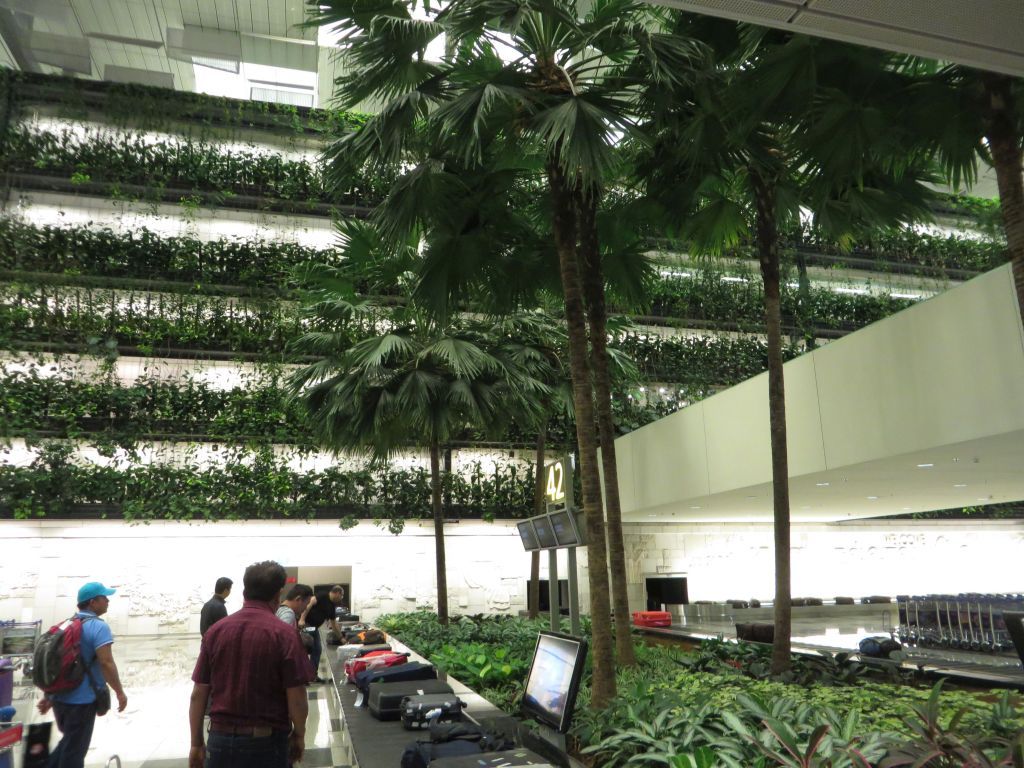
Now we only needed to add some credit on our MRT passes and reach our hotel. It was a longish way – this is not an express line, and there is a same platform connection for the branch to/from the airport – but the trains are air-conditioned and perfectly clean.

This is the end of the flight report proper, and the beginning of a tourist bonus on Singapore.
My usual readers will not be surprised to know that one of our first visits after our arrival was to Tian Hock Keng Temple.

Tian Hock, which is the Hokkien pronunciation of 天后, may not be familiar to you, and the pronunciation in Mandarin
[Tiānhòu] may not ring a bell either, but this is a goddess which appeared repeatedly in my reports in the greater Chinese world.
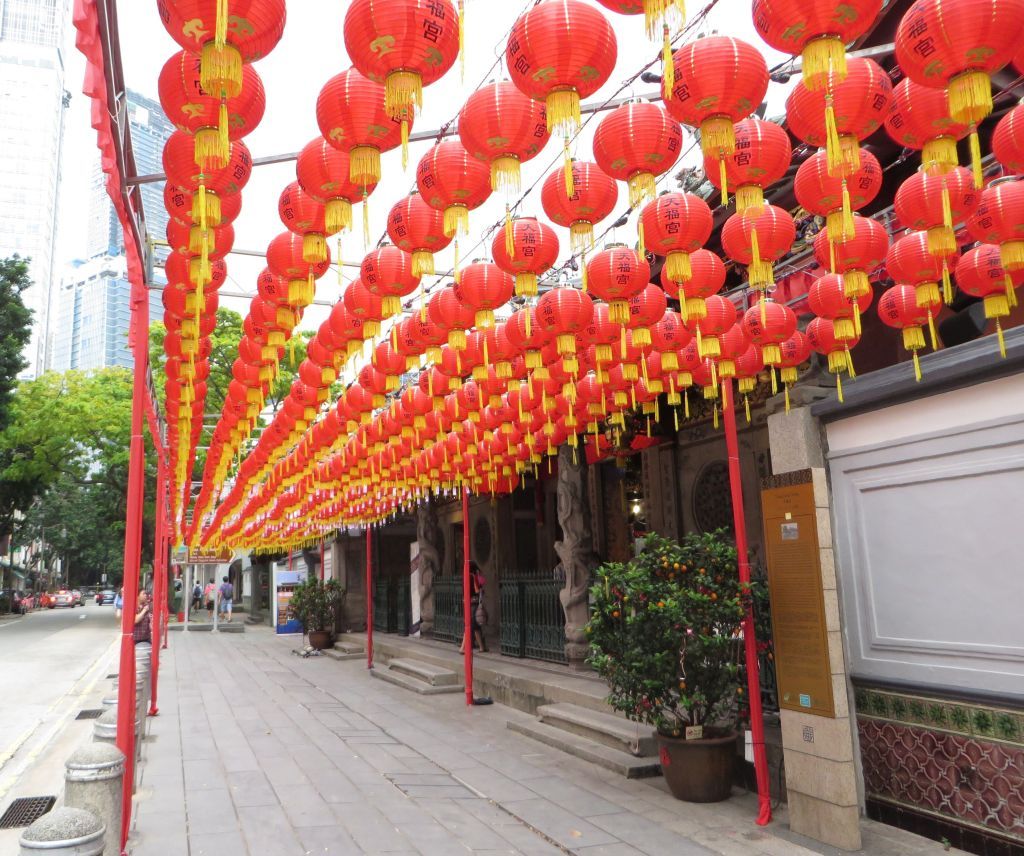
The
[jiǎnnián] 剪黏, i.e. sculptures decorated with shards of colored ceramic, are typical of temples of China’s Fujian province, but they are more numerous in Taiwan nowadays.

Small surprise, for
[Tiānhòu] is the other name of Matsu 妈祖, a goddess who lived on the coast of China's Fujian province around the year 1000. She protects sea-faring people and is consequently especially popular with the people living on the coasts of China, Taiwan and with all the Chinese diaspora in South-East Asia
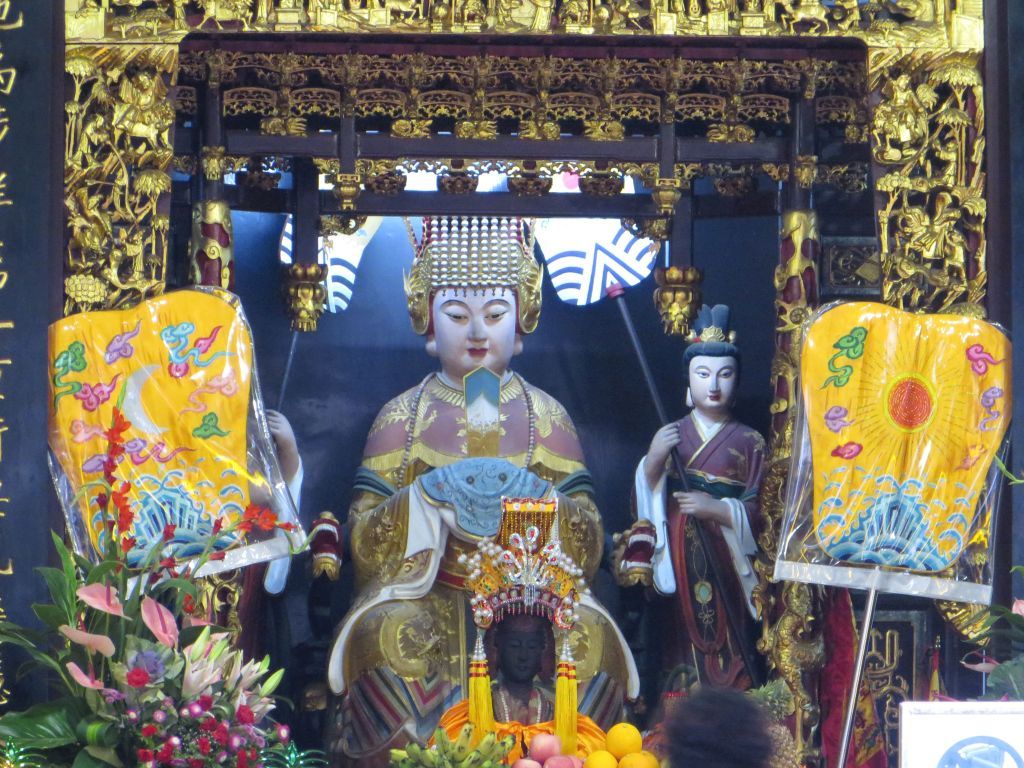
Who travels on a boat to cross the oceans nowadays ? I found it fair to widen the scope of her immense skills which justified her elevation to the title of Queen of Heaven in the 19th century, and to thank her for protecting us during our flights to Singapore.
As often, although these are two separate religions, this Taoist temple also has a Buddhist sanctuary dedicated to Guanyin, the bodhisattva of mercy.

Symmetrically, Leong San 龙山 ("Dragon Mountain") Temple whose roofs are decorated with beautiful jiannian is dedicated to Guanyin.
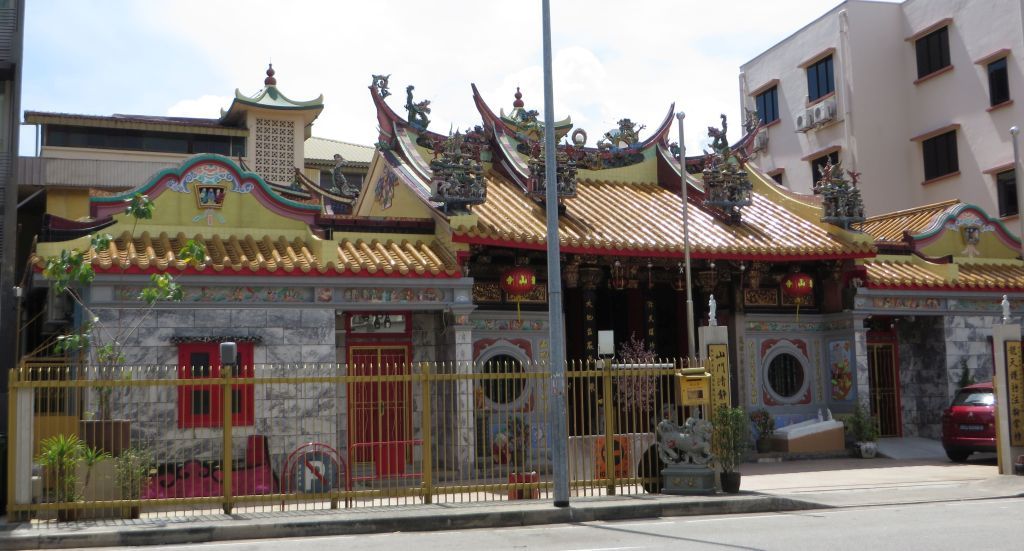
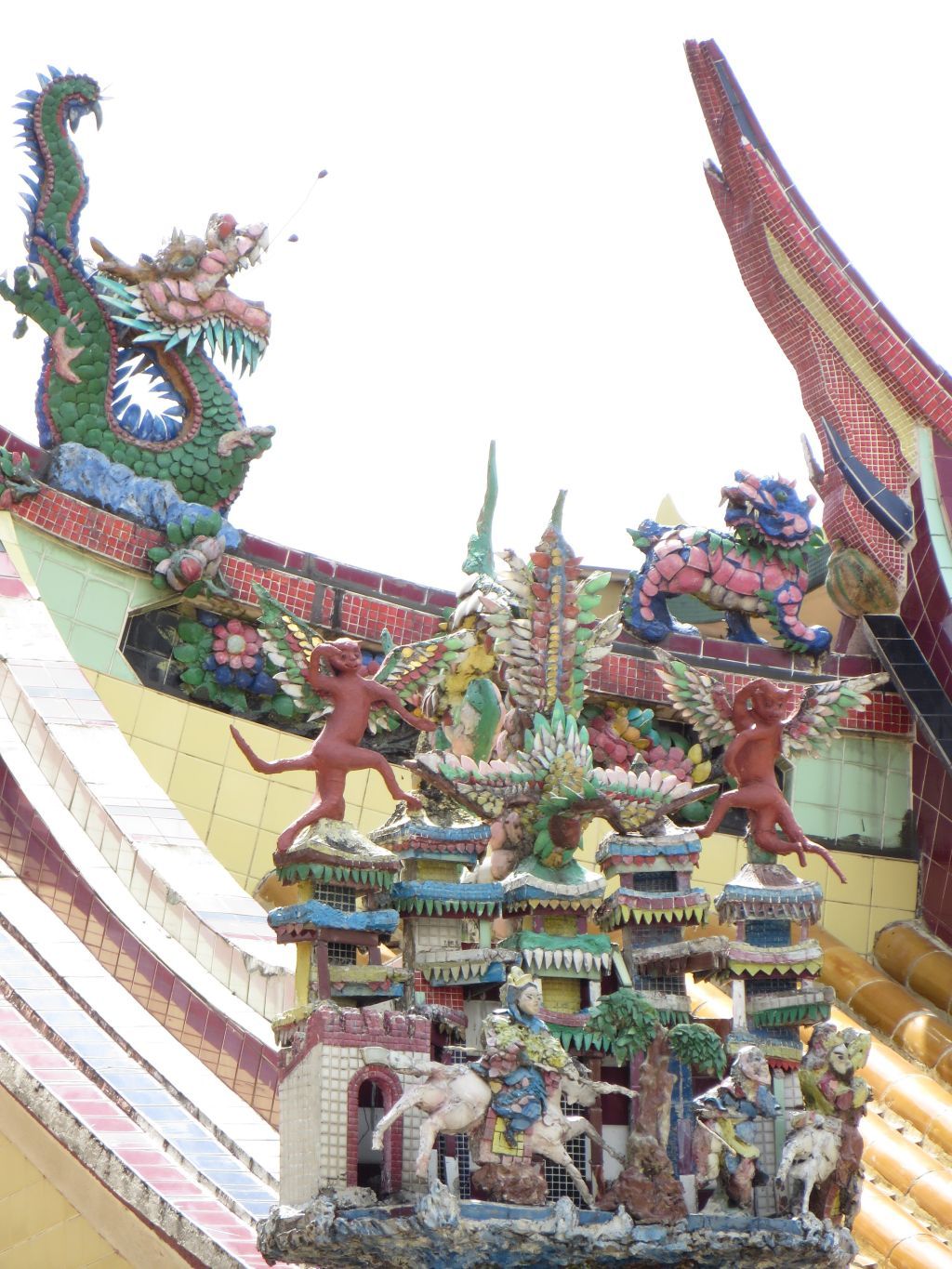
She appears here in her Thousand arms shape, capable of rescuing a thousand distresses that she sees with the thousand eyes in the palm of the hands in concentric crowns behind her. This representation is not common, probably because of the amount of work needed for such a sculpture.
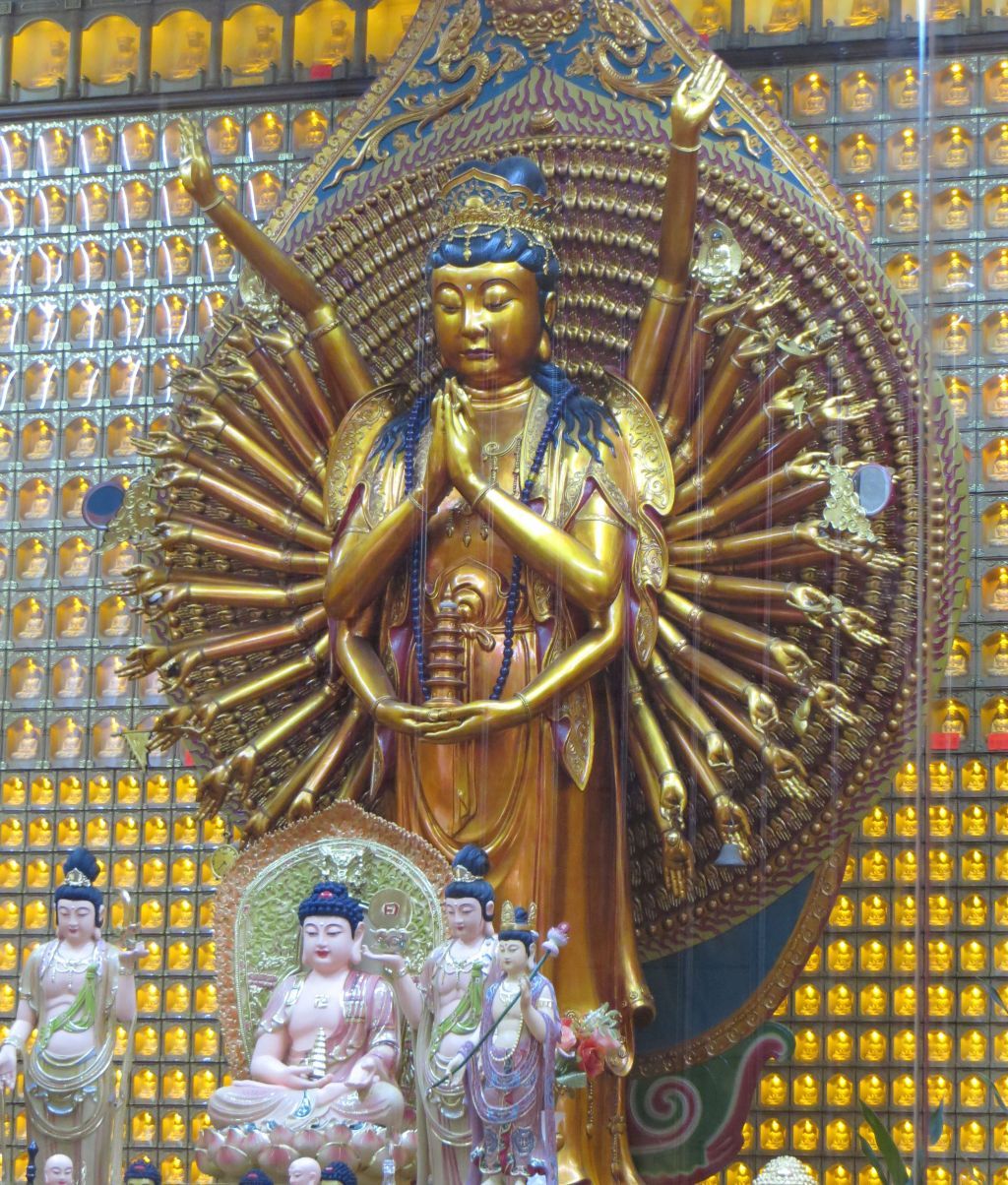
But alongside a wall in the same room, we find again Matsu, in two different representations : seated with her two servant giants on each side (the one on the left can her calls for help one thousand leagues away, the one on the right can see people in distress one thousand leagues away),
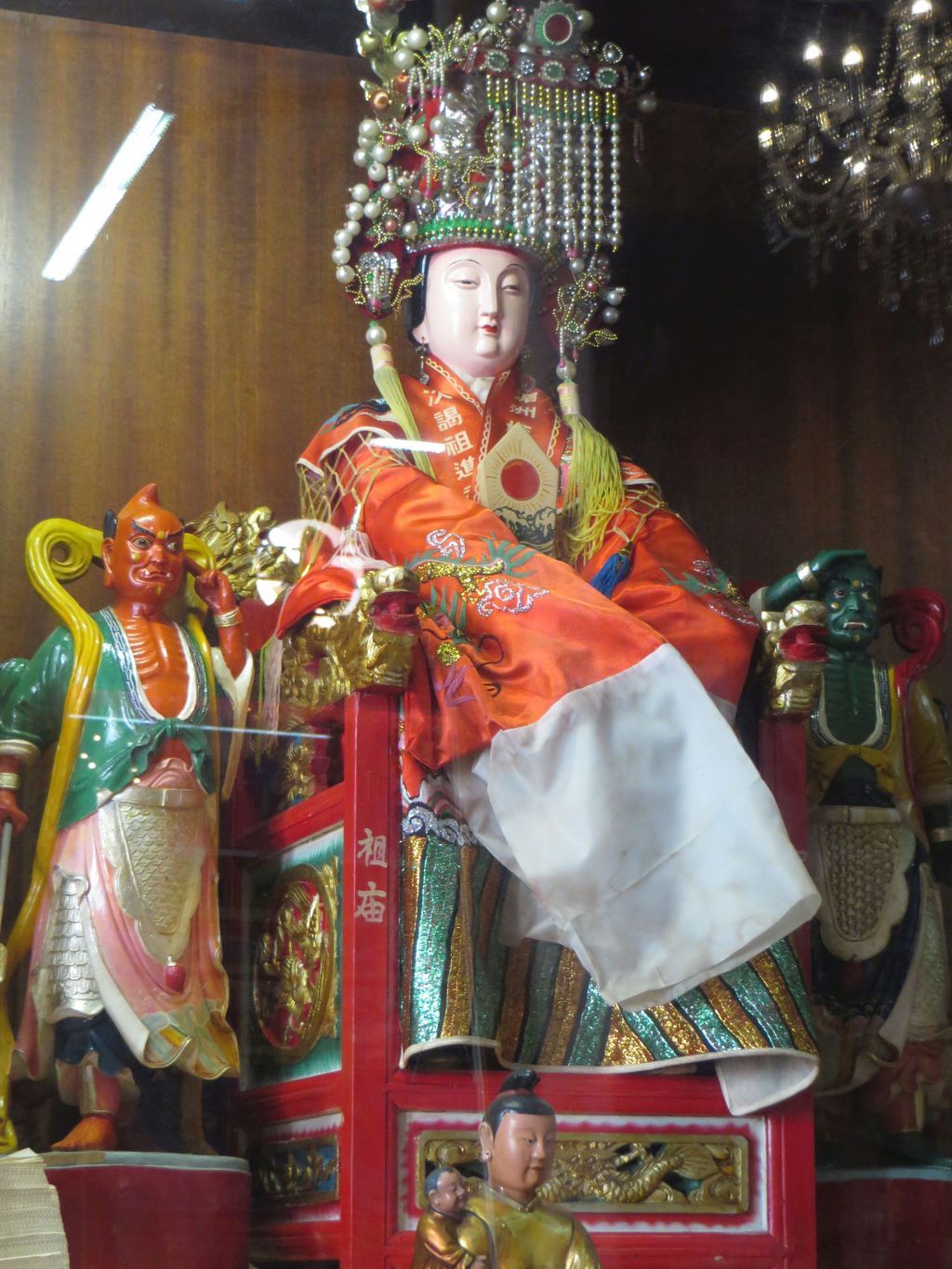
… and standing, with a younger face, but wearing the same empress headgear.
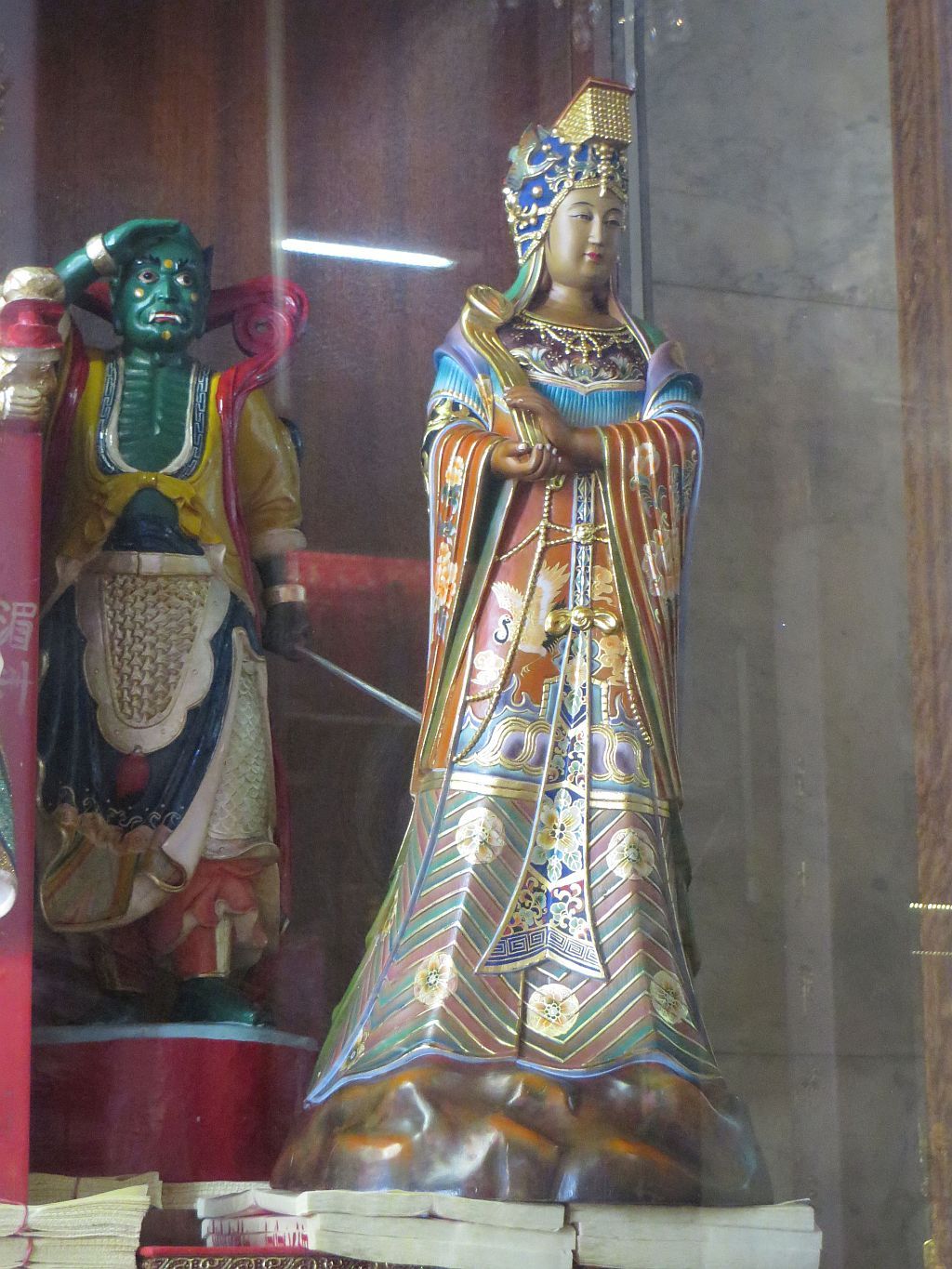
And as usual, there were next to the fruit offerings some 筊杯
[jiǎobēi] wooden blocks which are dropped to the ground to obtain a divine answer to a question :
- one on its flat face and the other on its round face means that the answer is yes
- both lying on their flat faces means that the answer is no, or that the question is unpleasant
- both lying on their round faces means that the god laughs: the person should already know the answer
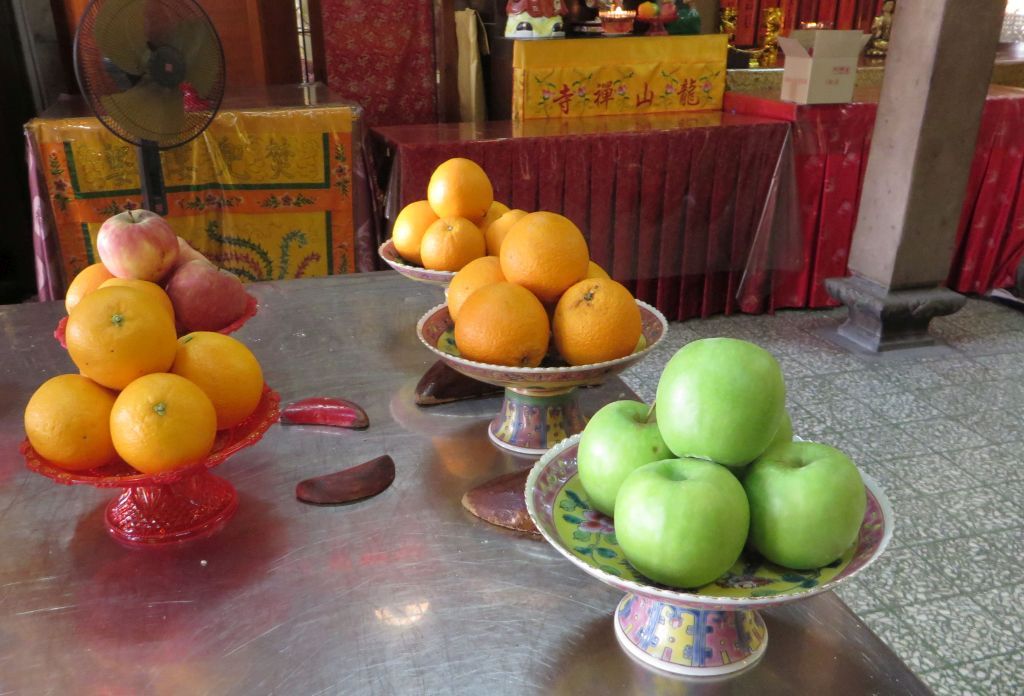
Behind the main sanctuary was the room of the deceased, with countless funerary plaques
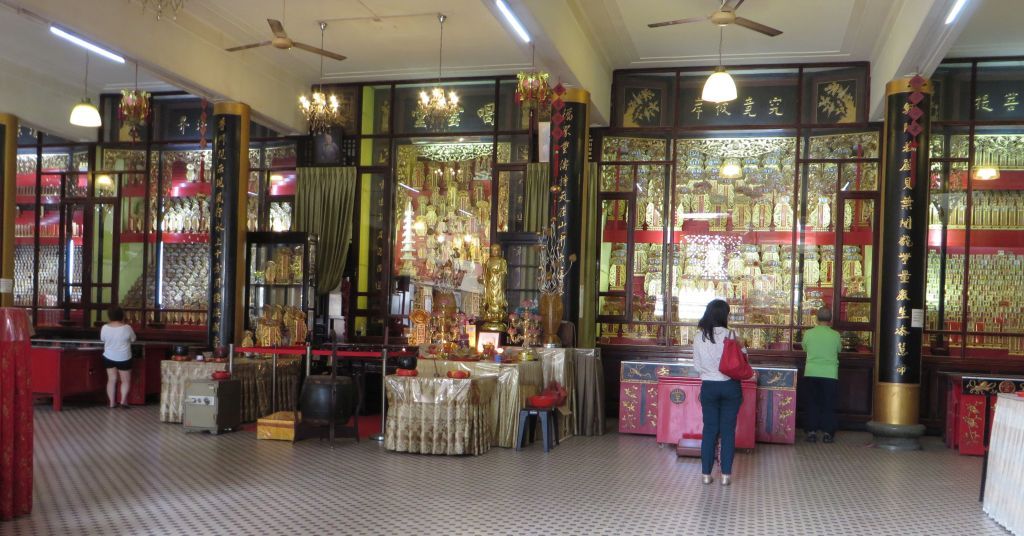
There was that day the beautiful model of the palace that a family was going to offer to a deceased woman.
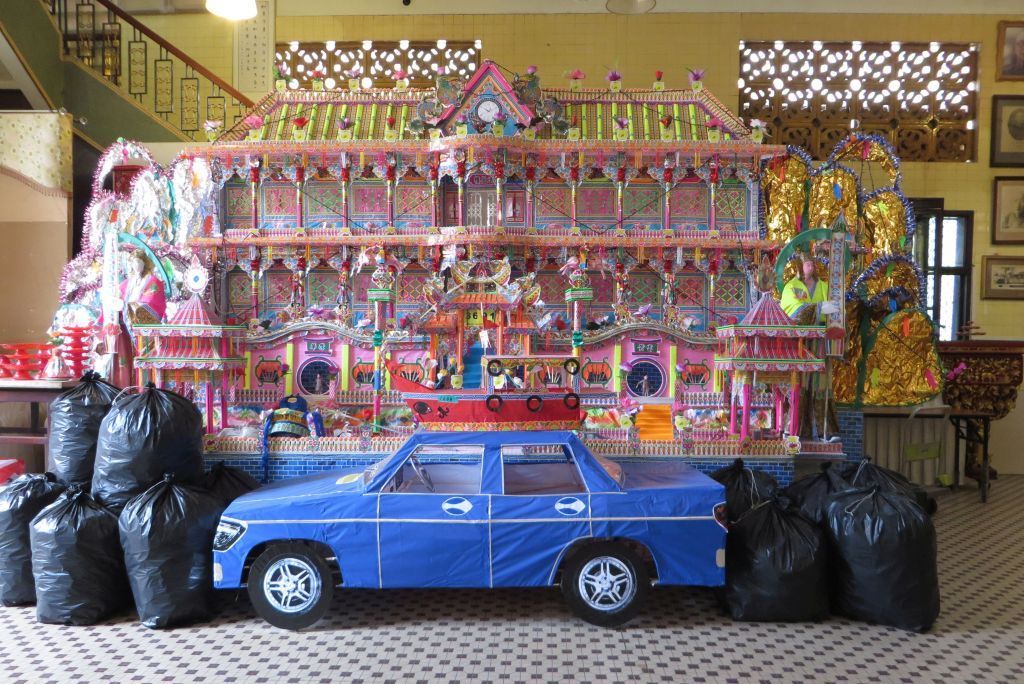
There was a car too : all these symbolic belongings were going to be burnt so that the deceased could use them in the realm of the dead.
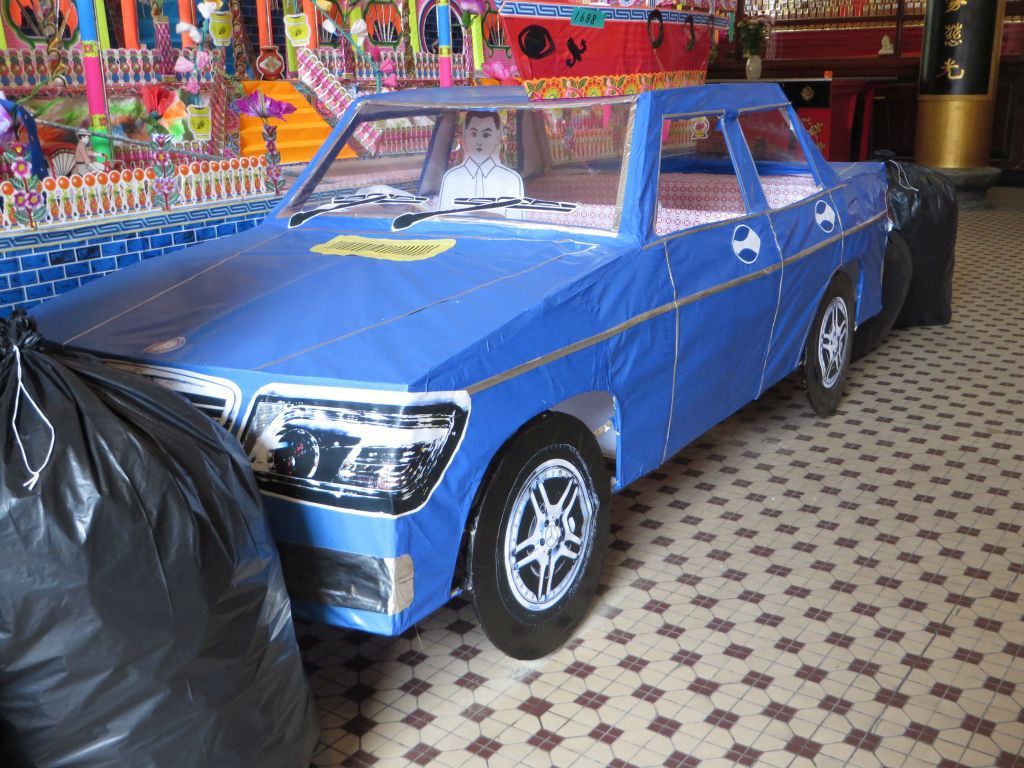
The black plastic bags did not contain garbage, but fake gold ingots, made of folded golden cardboard.
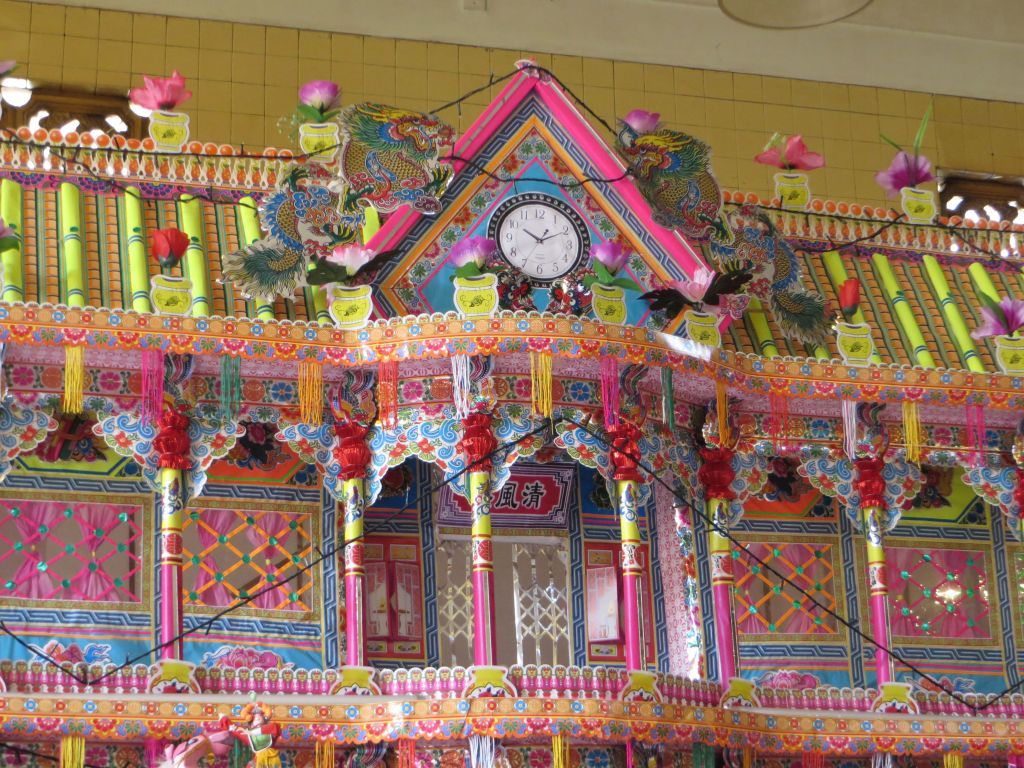
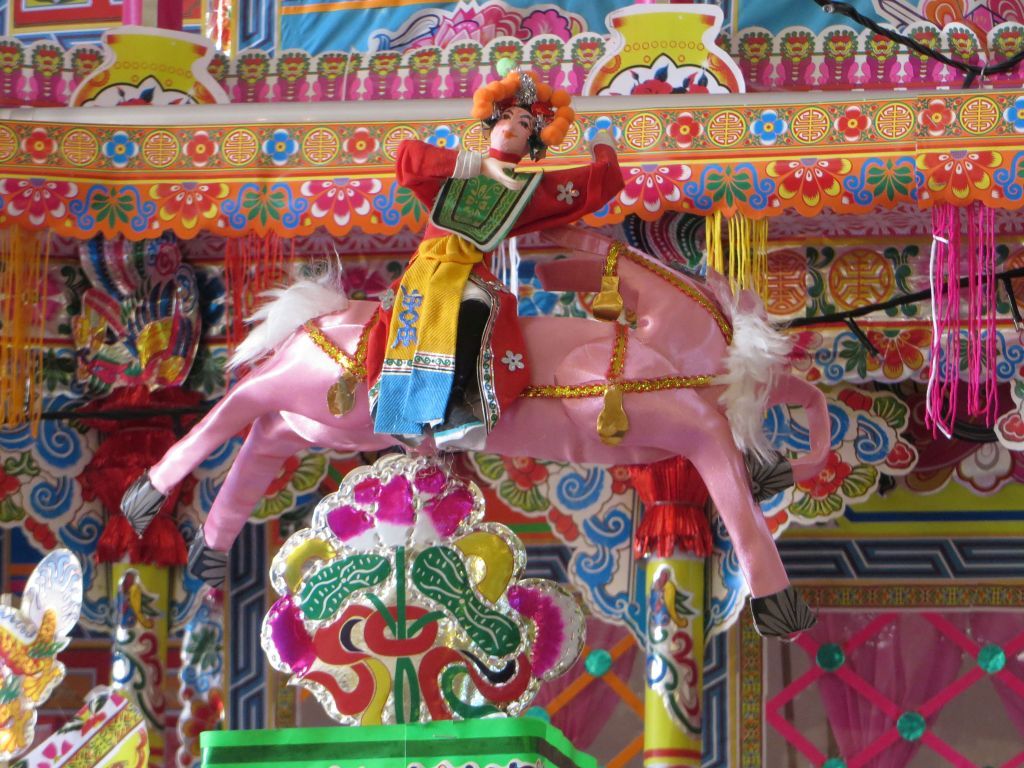
This intricate and lightweight model was made of paper and cloth on a thin bamboo structure. This centuries-old tradition is dying: fewer families can afford to spend 30,000 to 40,000 S$, and the makers retire without successors.
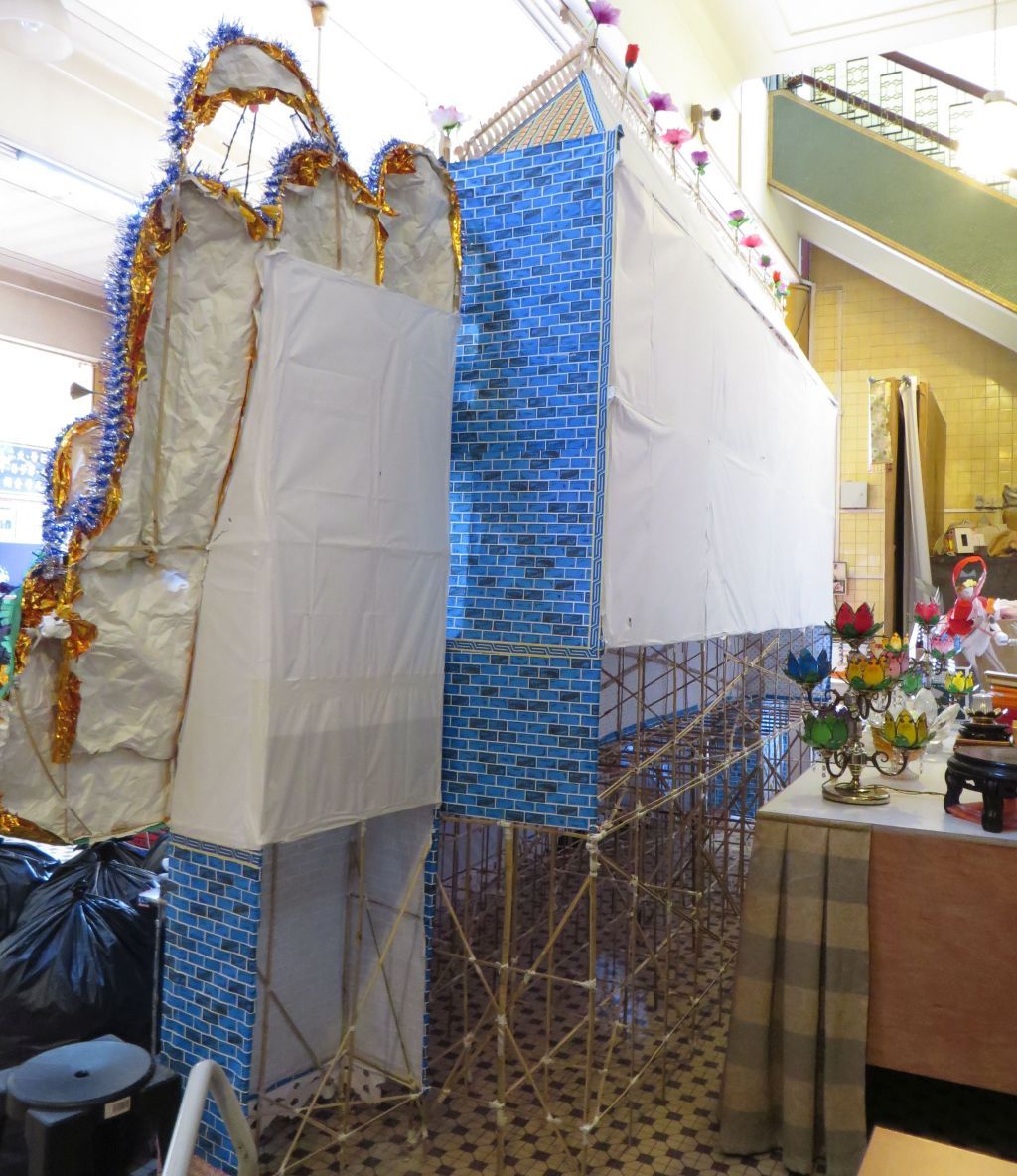
During the persecutions against Christians in Japan from the early 17th century, some hid their faith by adoring what seemed to be Guanyin, but was really the Virgin Mary, whose representation and place in these religions are similar. There have never been such persecutions in Singapore, but that provides me a transition to mention that you can also pray Our Lady of Lourdes in this small sanctuary.
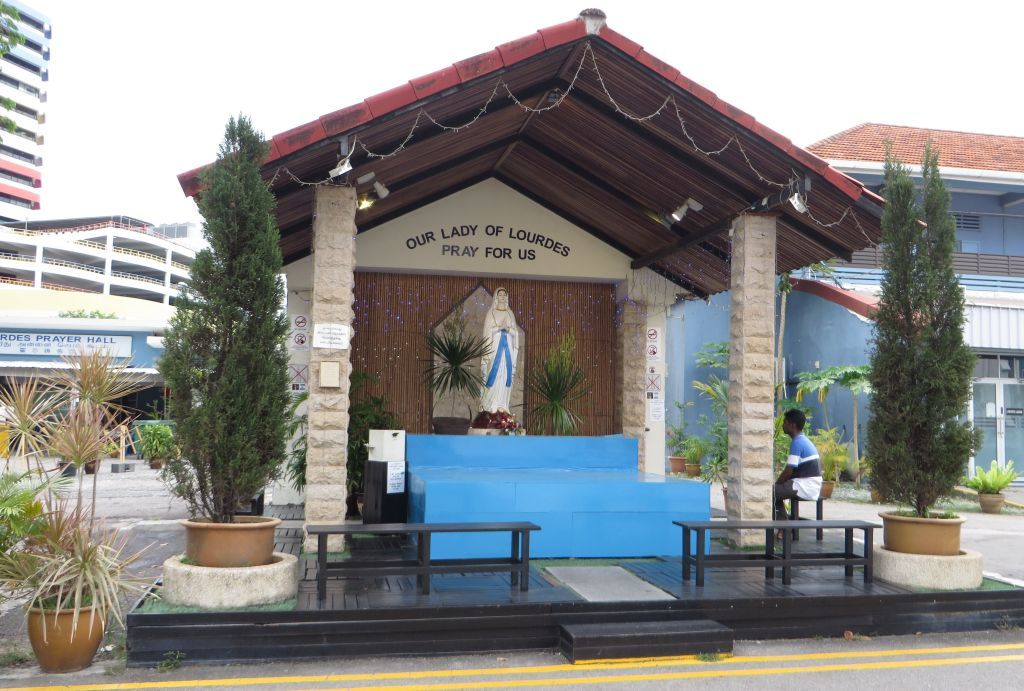
… next to this church located in the immediate vicinity of the long distance buses terminal.
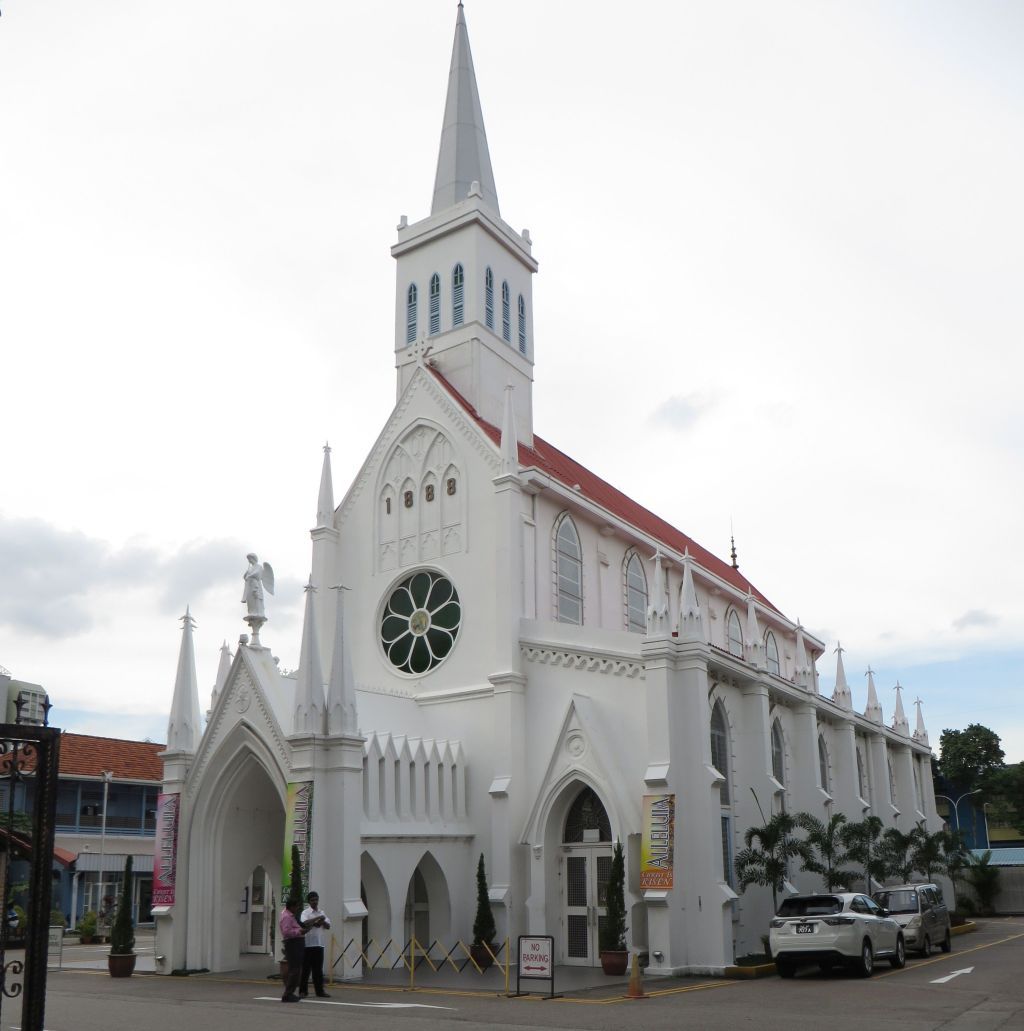
The inside of the air conditioned nave has plenty of natural lighting.

Singapore also has a Muslim community which has its places of worship, like the Sultan’s Mosque

And the Malabar Muslim Jama-Ath Mosque, the only one in Singapore built by the Indian community
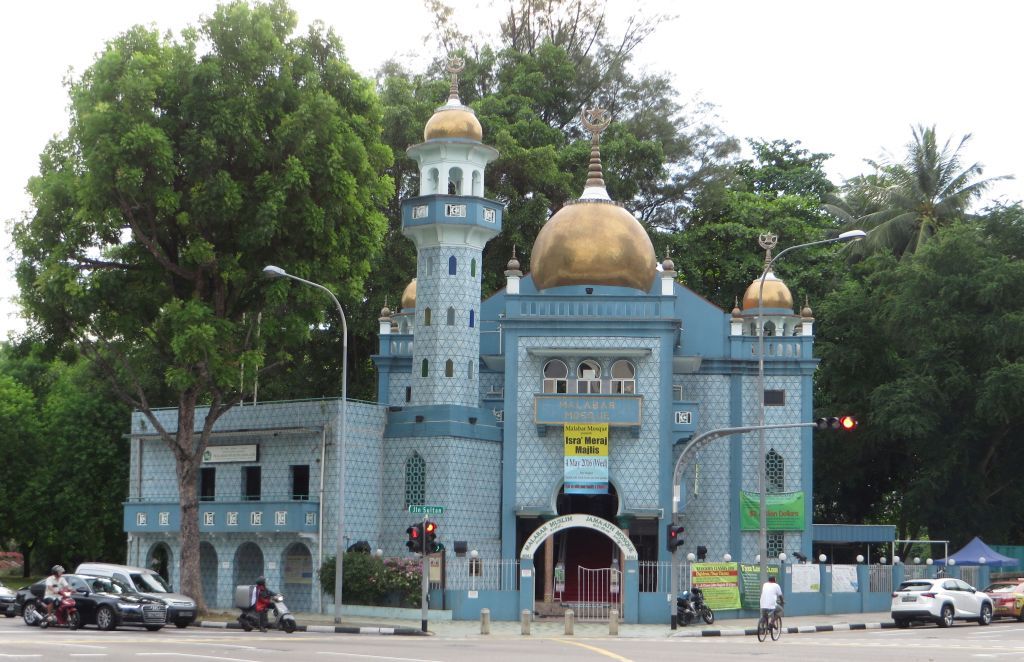

This review would not be complete without the Hindu temples, whose gopuram stand out in the urban landscape.
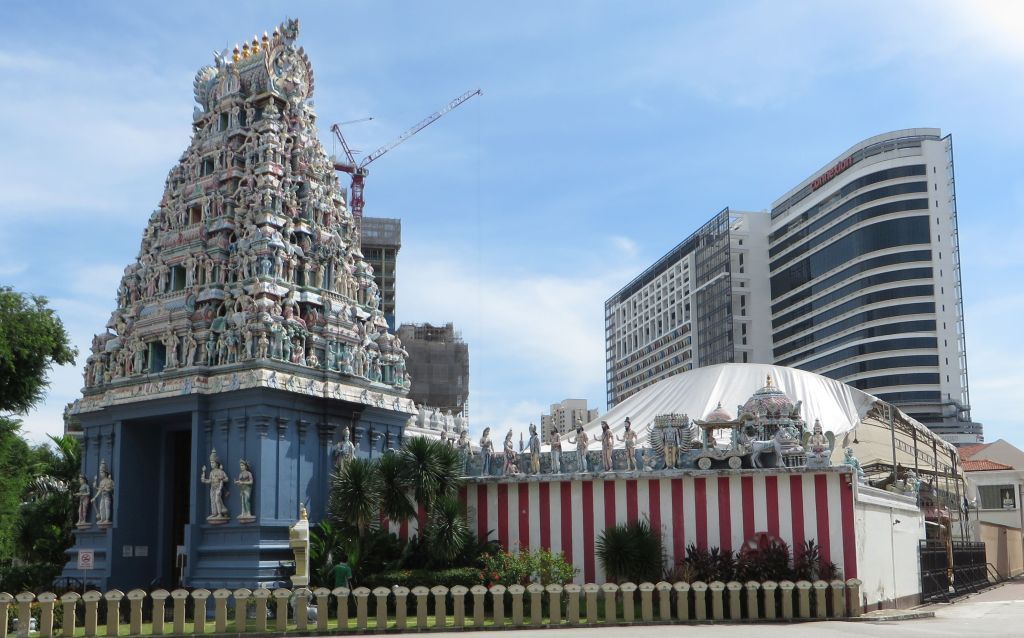
Do not rely on me to provide details on the many figures which appear on each side.
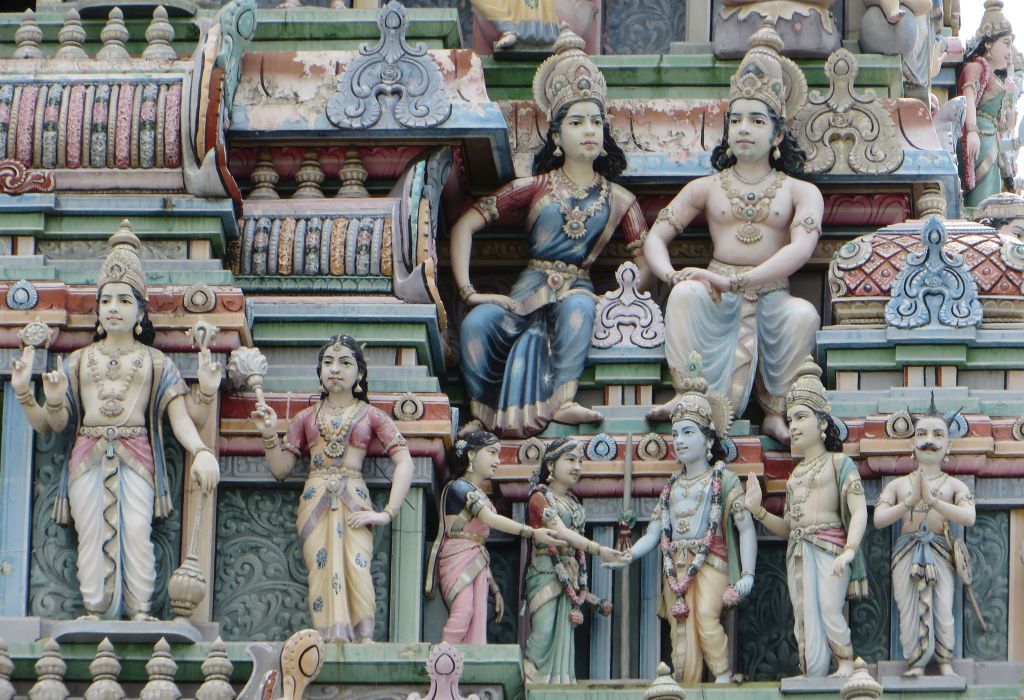
In the background on the left, a somewhat worn A4 format notice was posted.

This sign reminded in Tamil and in English (two of Singapore’s official languages, with Mandarin and Malaysian) that Singapore’s laws would be severely applied to foreign workers who break it. This sign dates back from the 2013 riots, the first in the country since the racial riots some 40 years before, which rocked Singapore’s Little India neighborhood, and shook Singapore’s society for which law and order are the top priority.
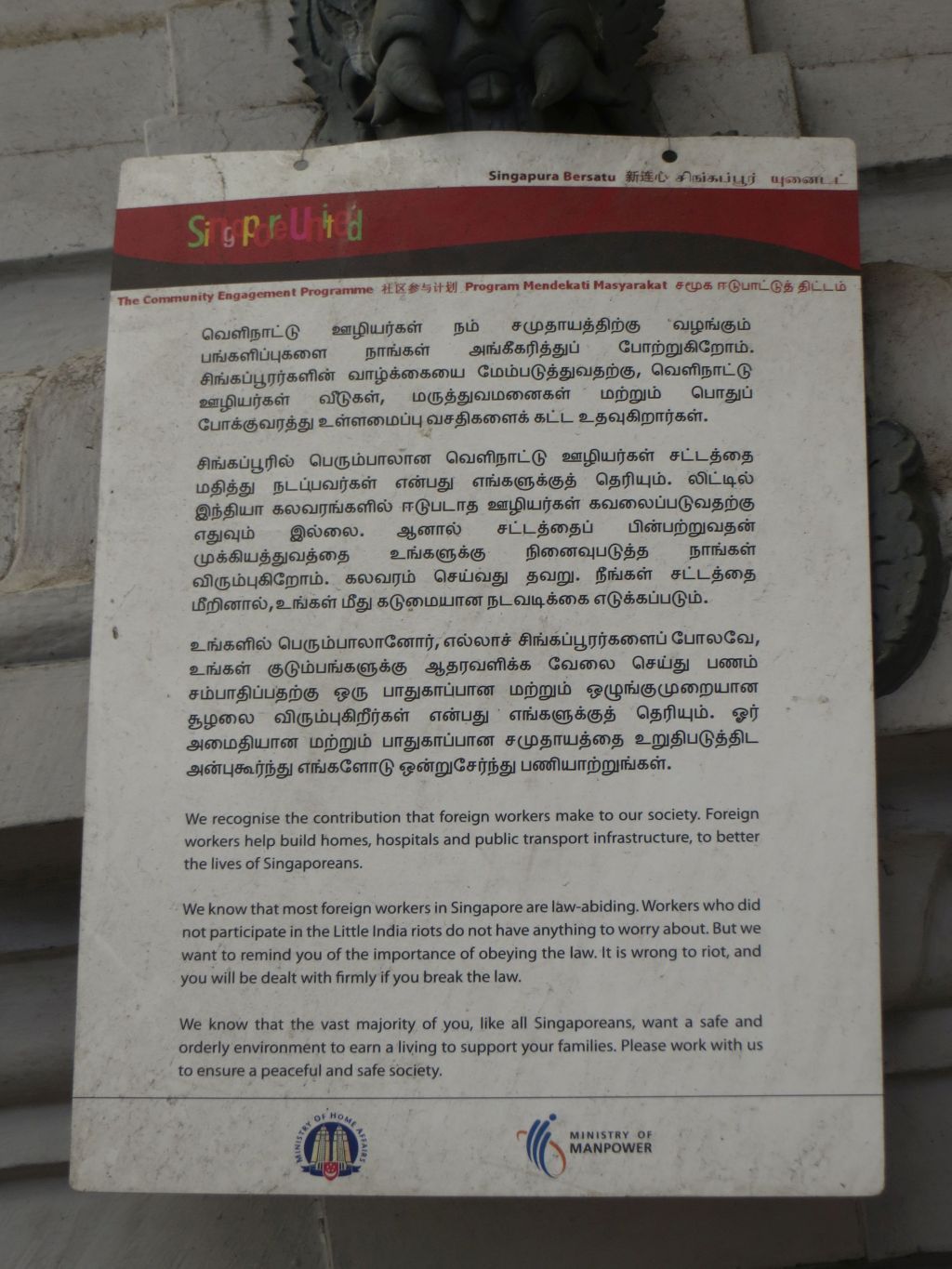
Many participants to these riots were drunk, and a law was passed a few years later to prohibit any drinking of alcohol in public places from 10:30 pm to 7am. This ban was extended to Friday 10:30 pm to Monday 7am in Little India like here, and the night life neighborhood of Geylang.

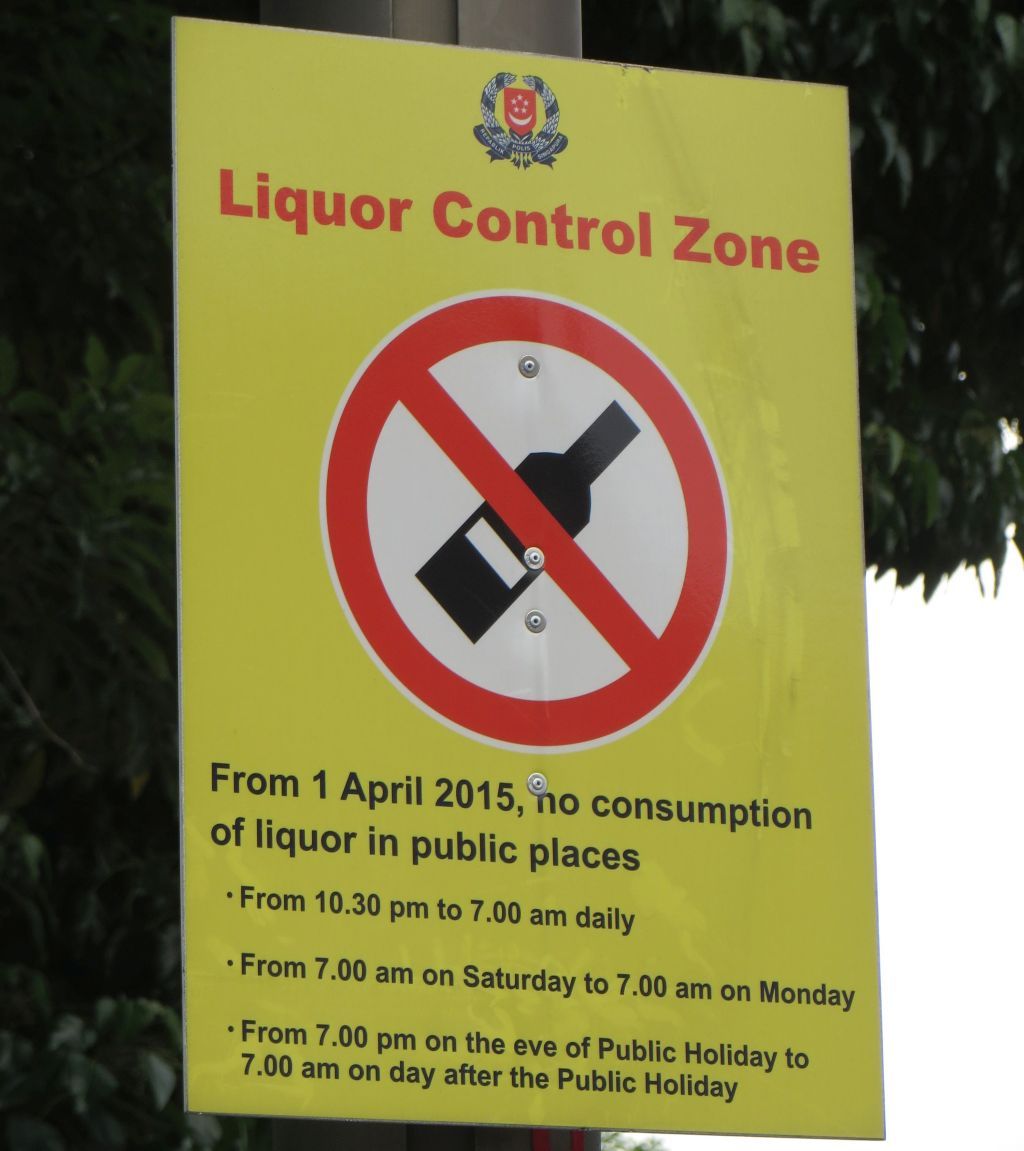
What this sign did not mention was that the law designated as “public places” not only the pedestrian areas in the housing high rises where a majority of the population lives, but also the squalid dormitories where migrant workers are housed away from the public sight. Nothing stops you from having a drink at the bar of your hotel: this law which appears to apply to all is actually quite targeted.
Such is life in a micro-state without any natural resources, not even drinking water of which half of the consumption is imported, and which knows that its prosperity relies on its stability and its professional efficiency.
Thanks for reading me all the way to here!

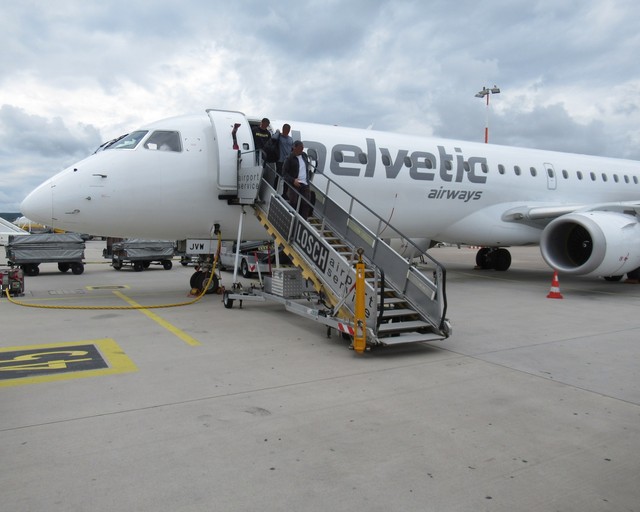

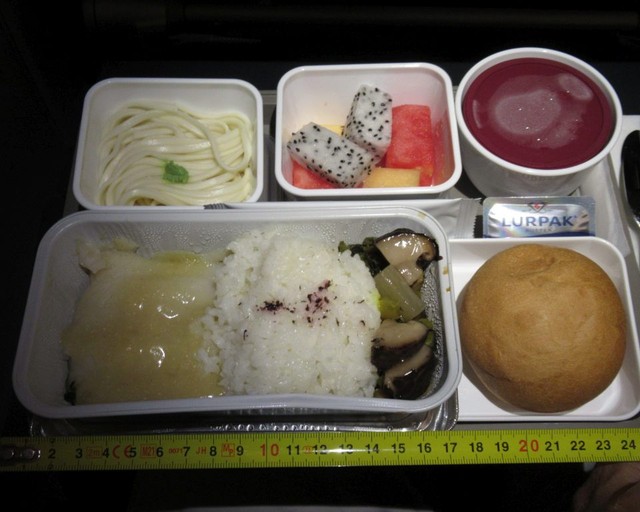

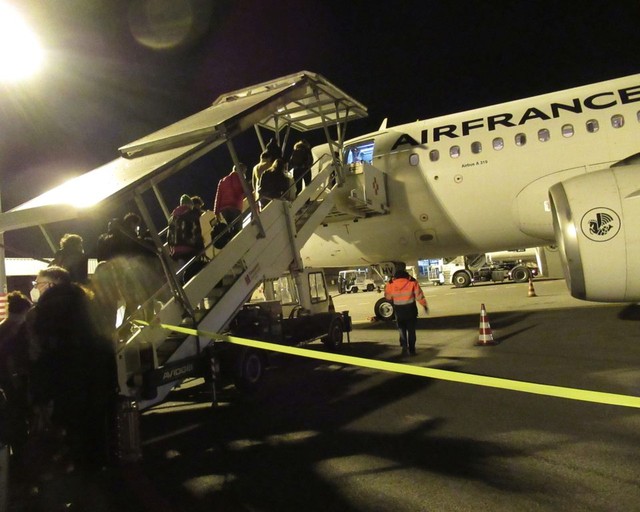

Nice report! Great aerial shots and thanks for the history lesson! Never thought of measuring the croissant. That's fun!
Airlines are good at downsizing everything to scale, so that you don't realize that you get actually less. A measuring tape cannot be fooled, even if I sometimes look like a fool using it my way when traveling :)
Thanks for stopping by and for your comment !
The contents of the snack box are printed on the box.
Also, it's Palm Jumeirah that's complete, not Jebel Ali.
I made the correction about Palm Jumeirah (the respective states of completion are quite obvious on the picture). Thanks for pointing out the mistake.
Yes : "Chicken Shawarma calzone / almond cake", but nowadays, I am used to have the contents down to milligram quantities :)